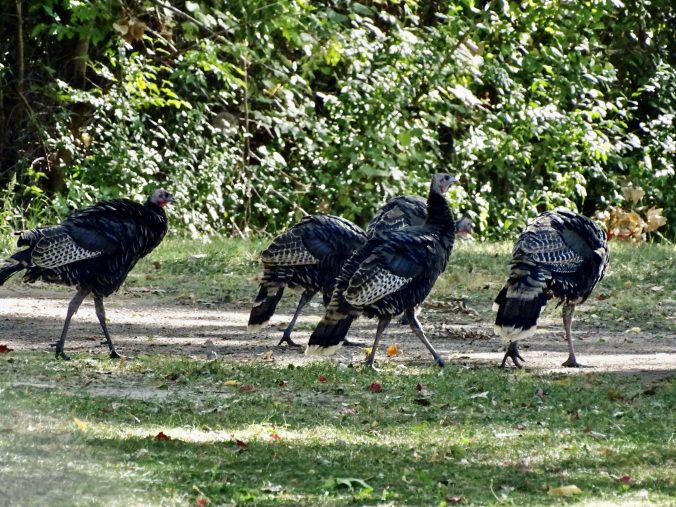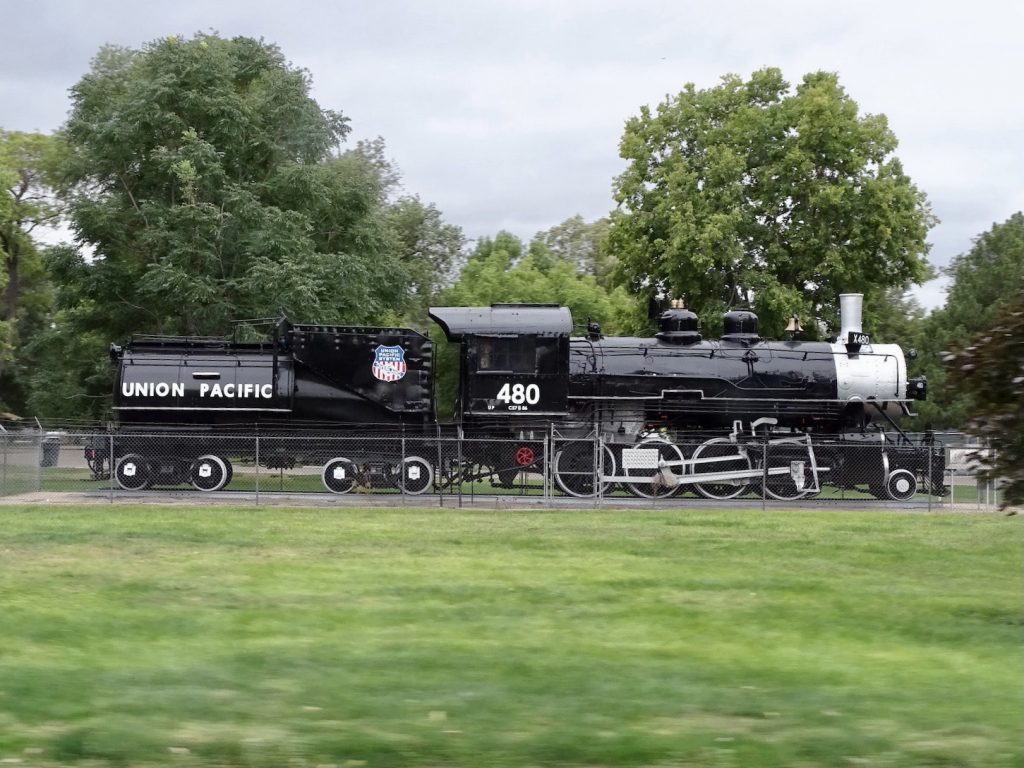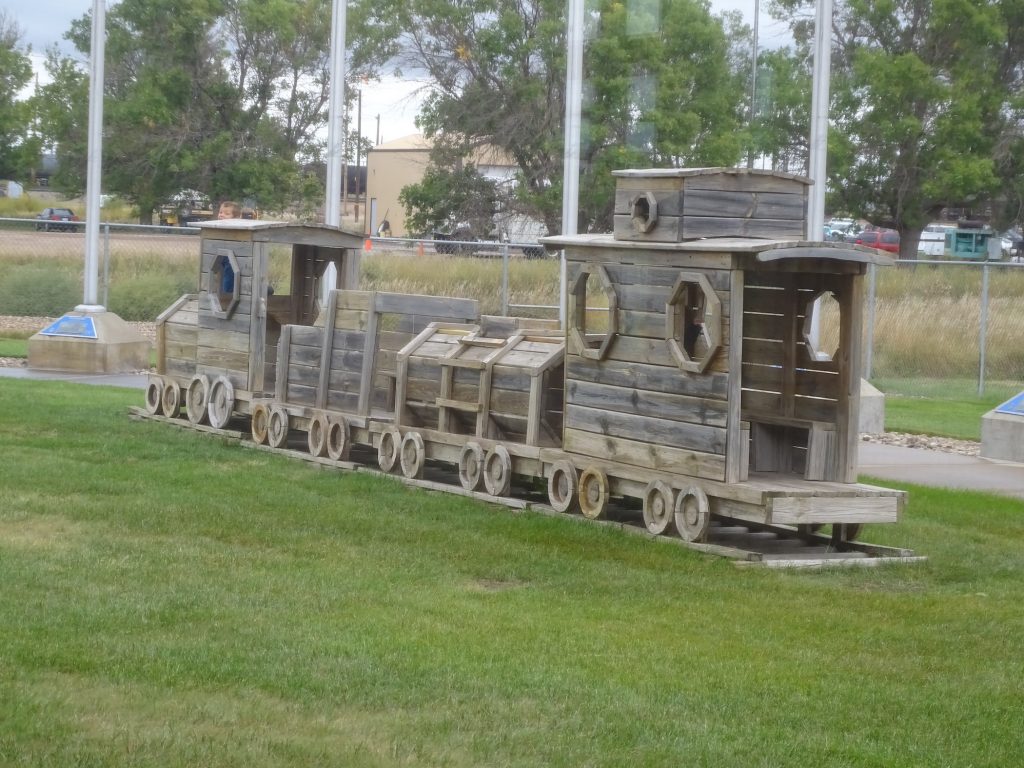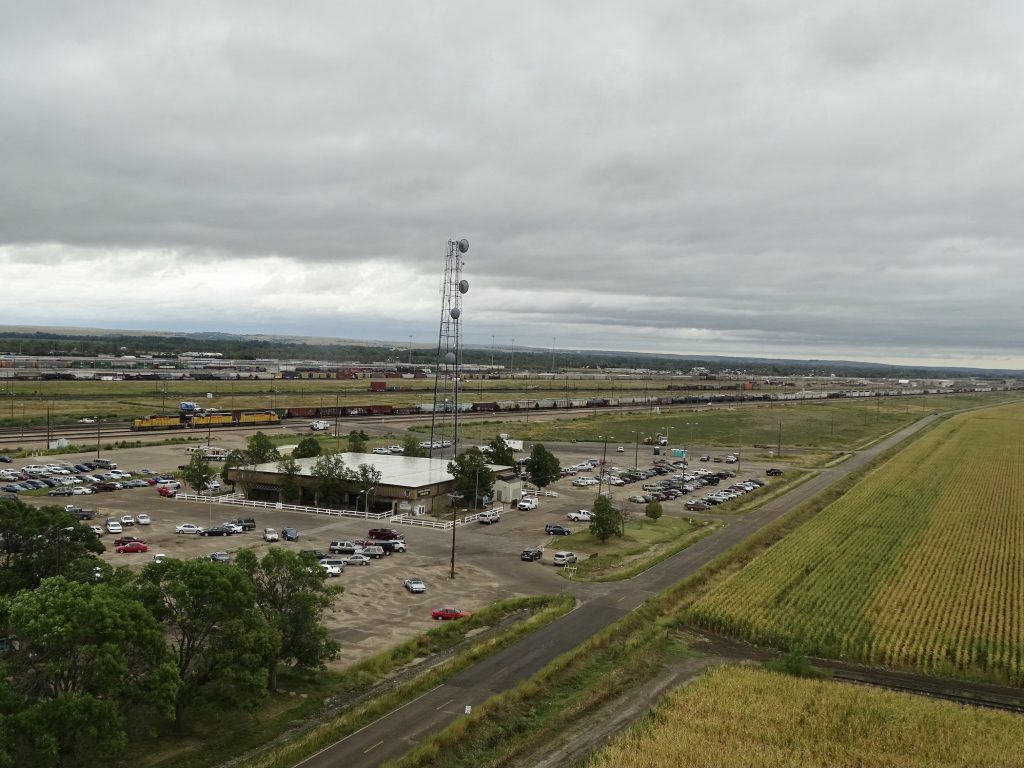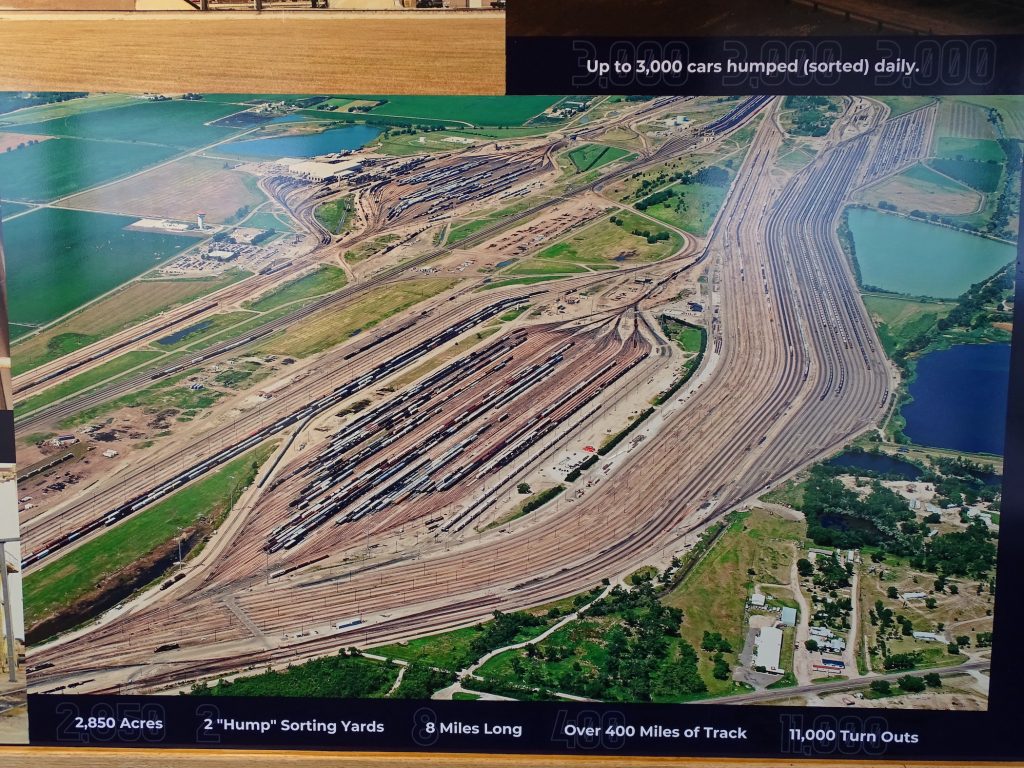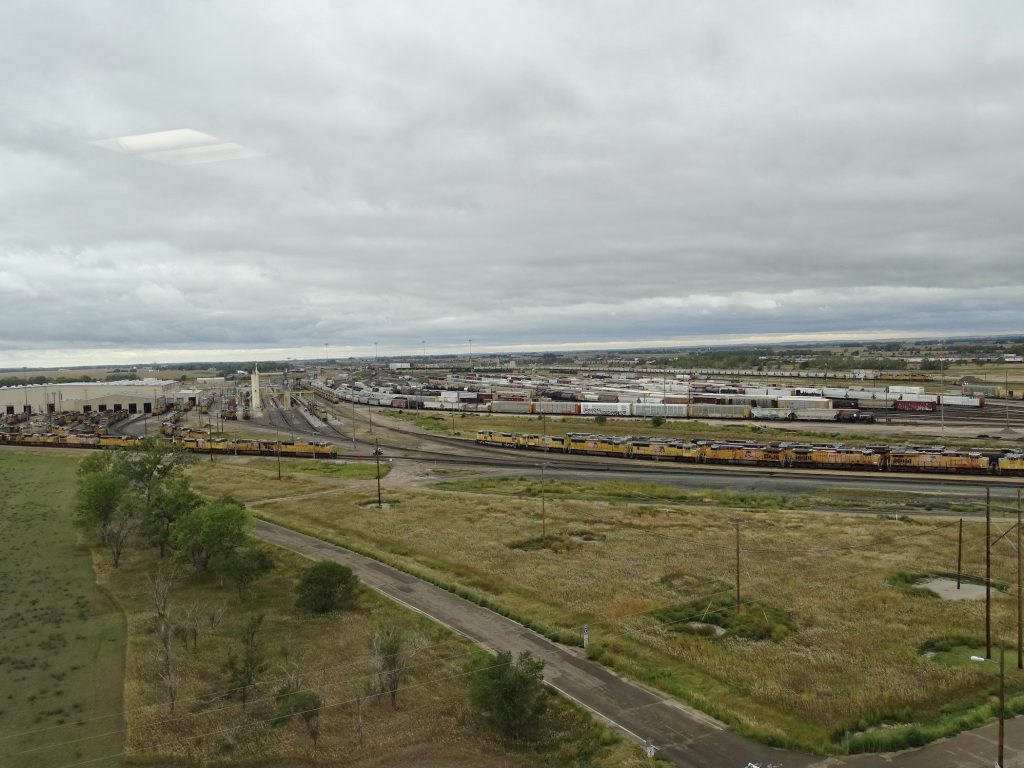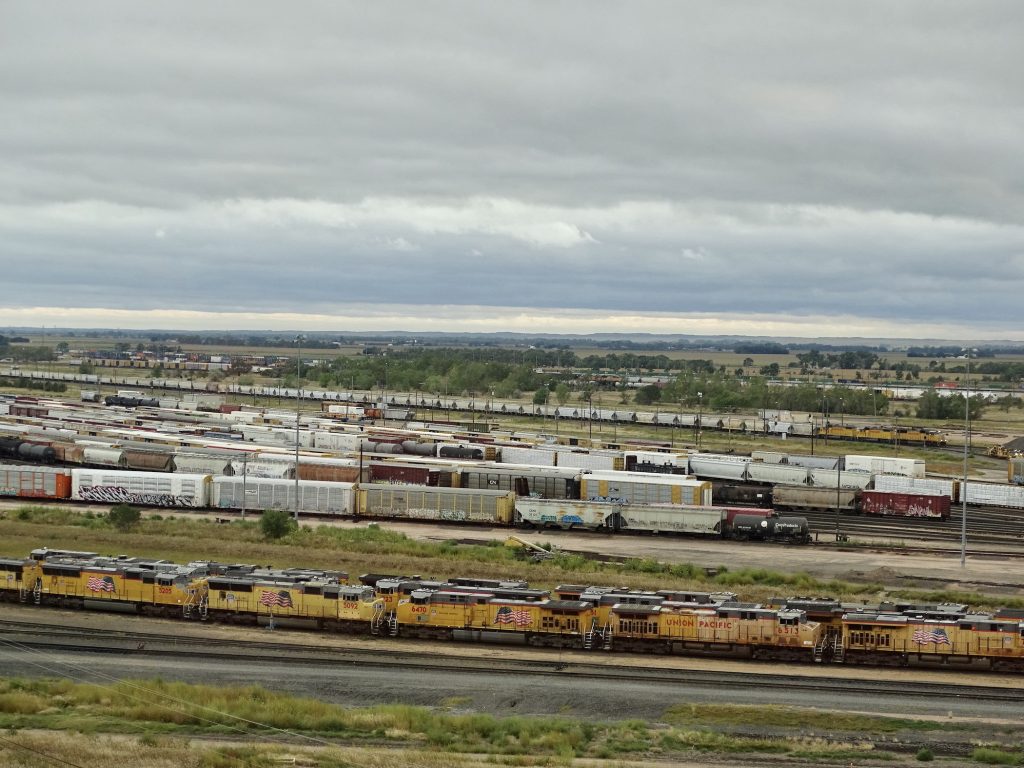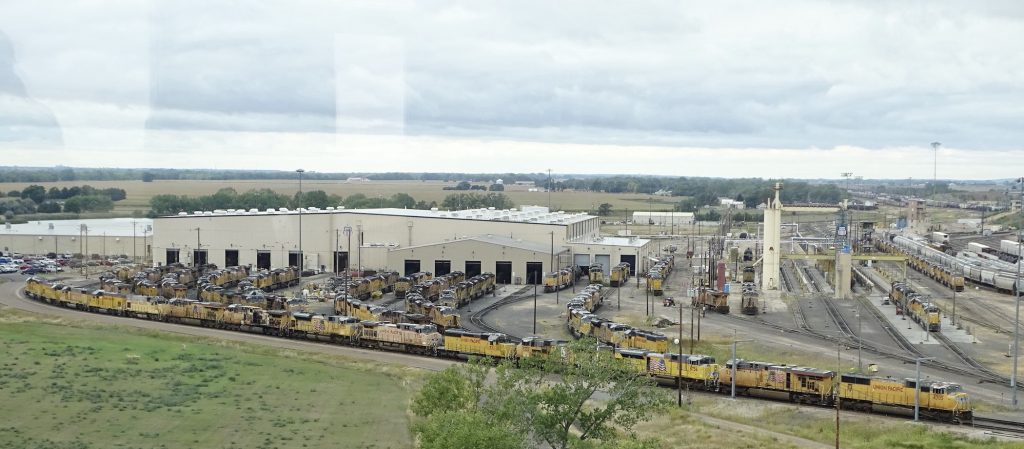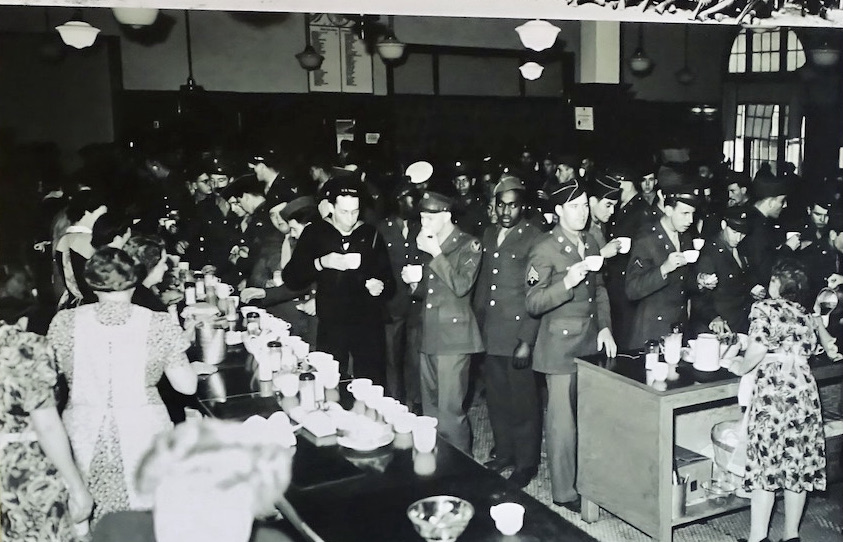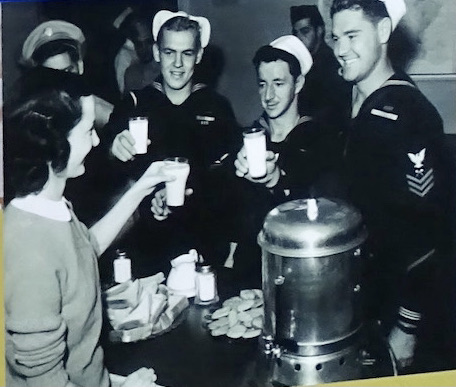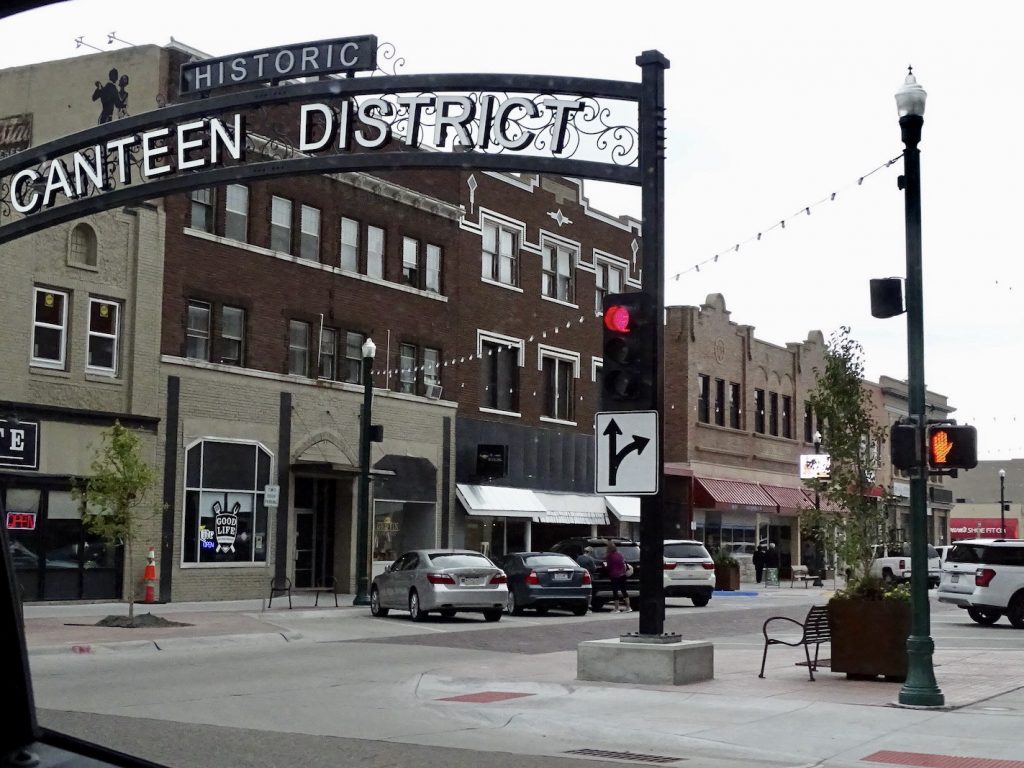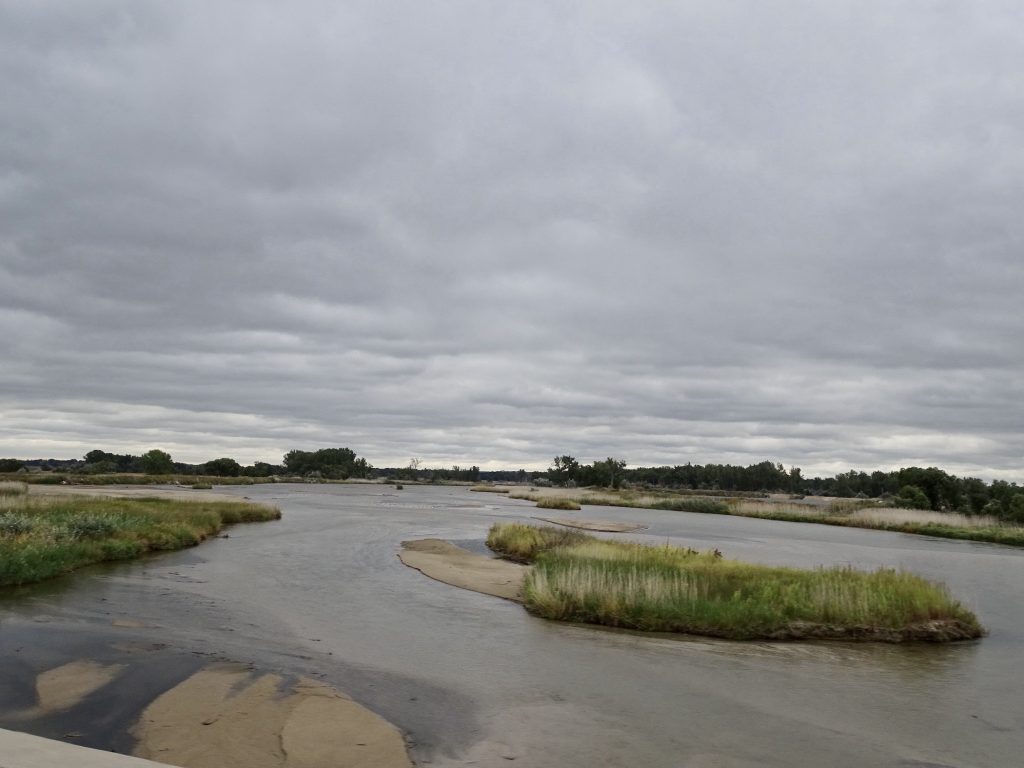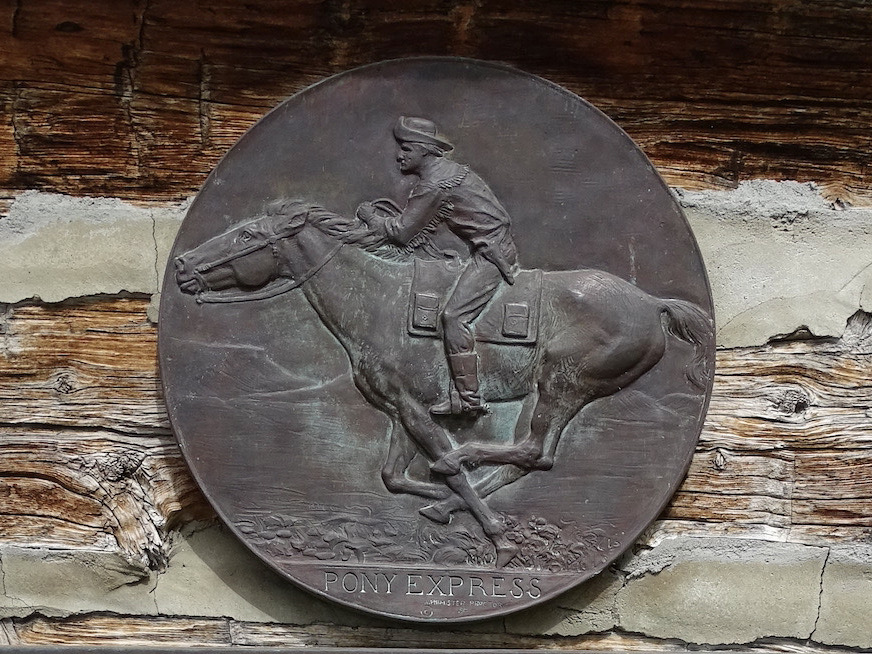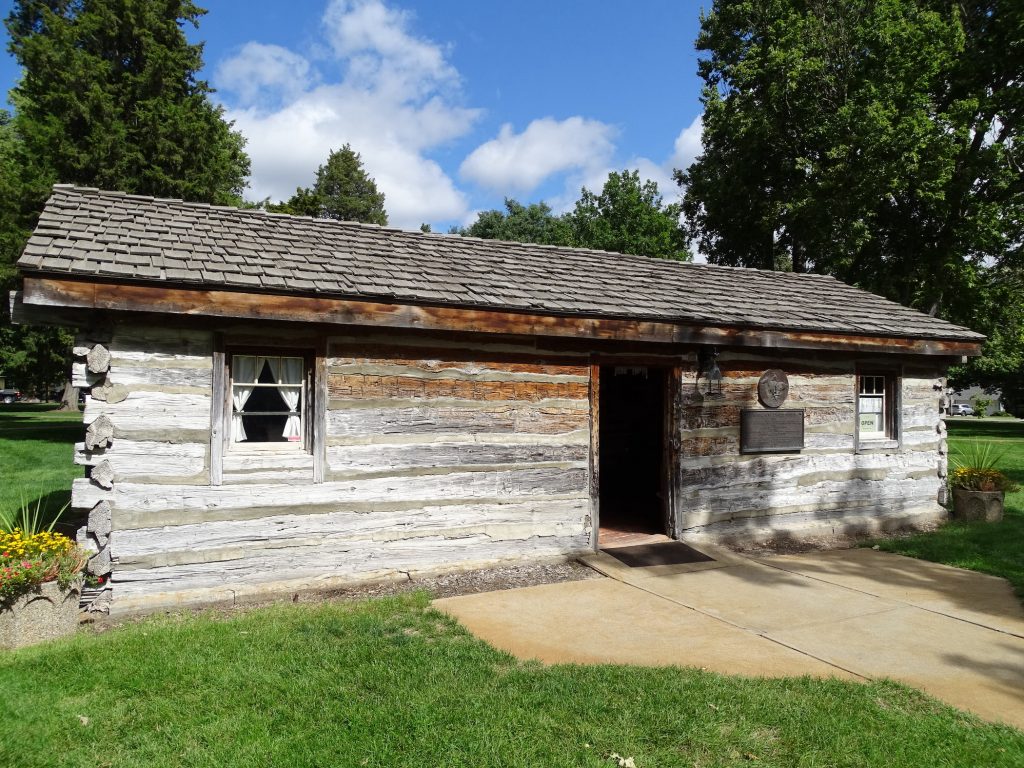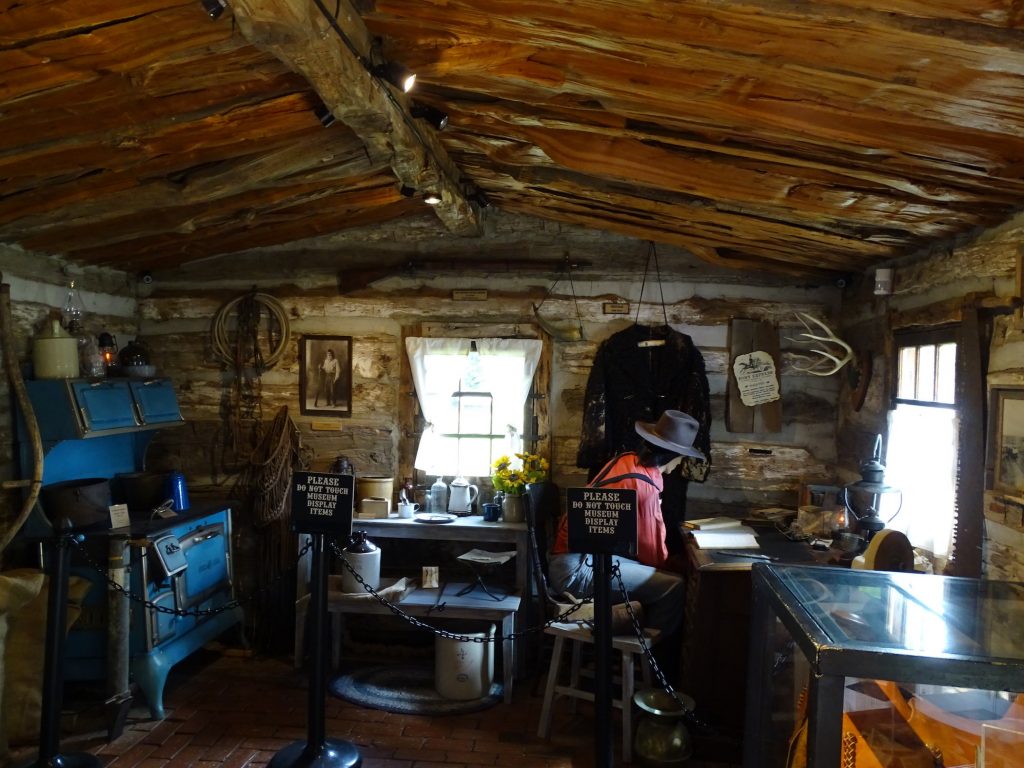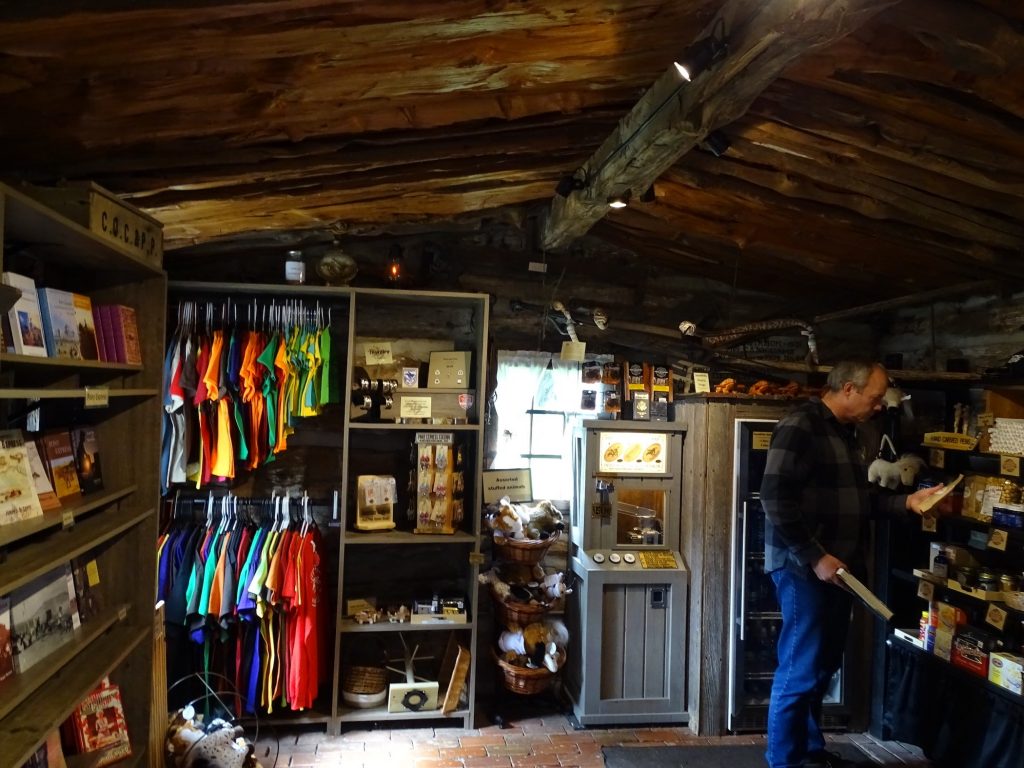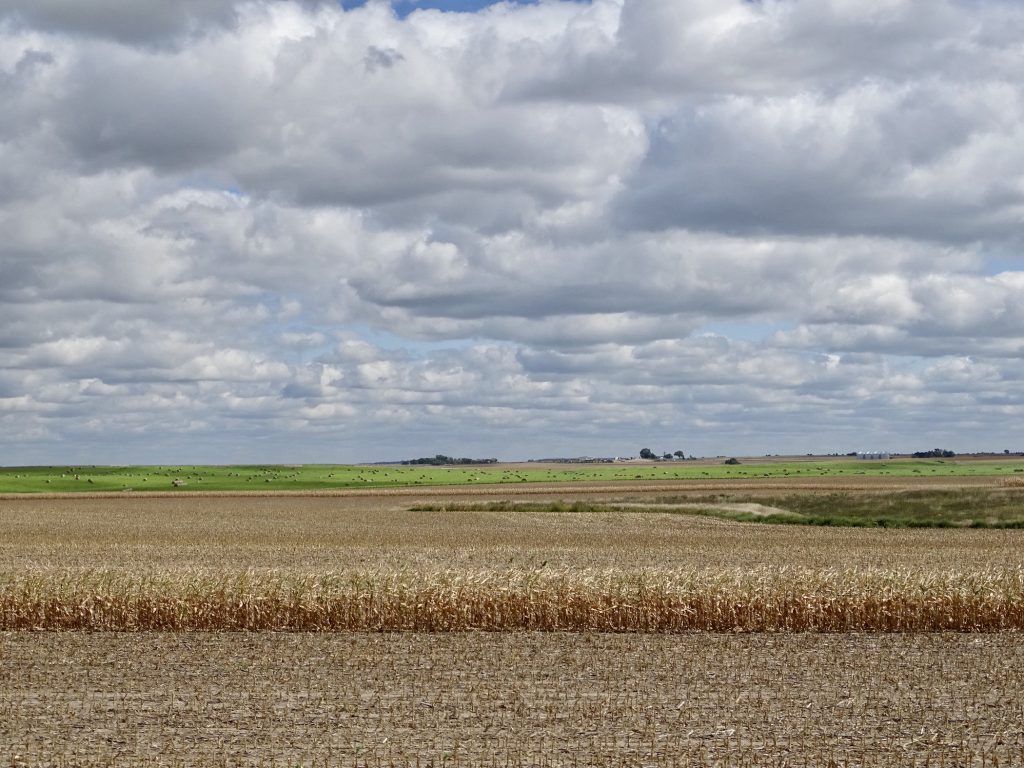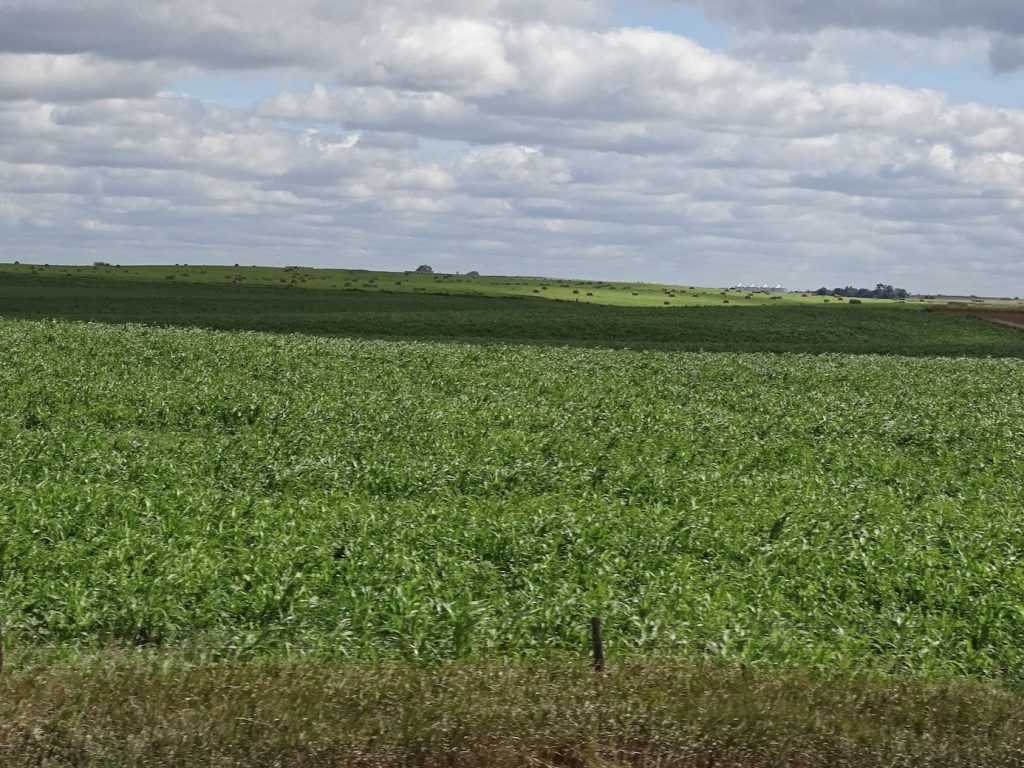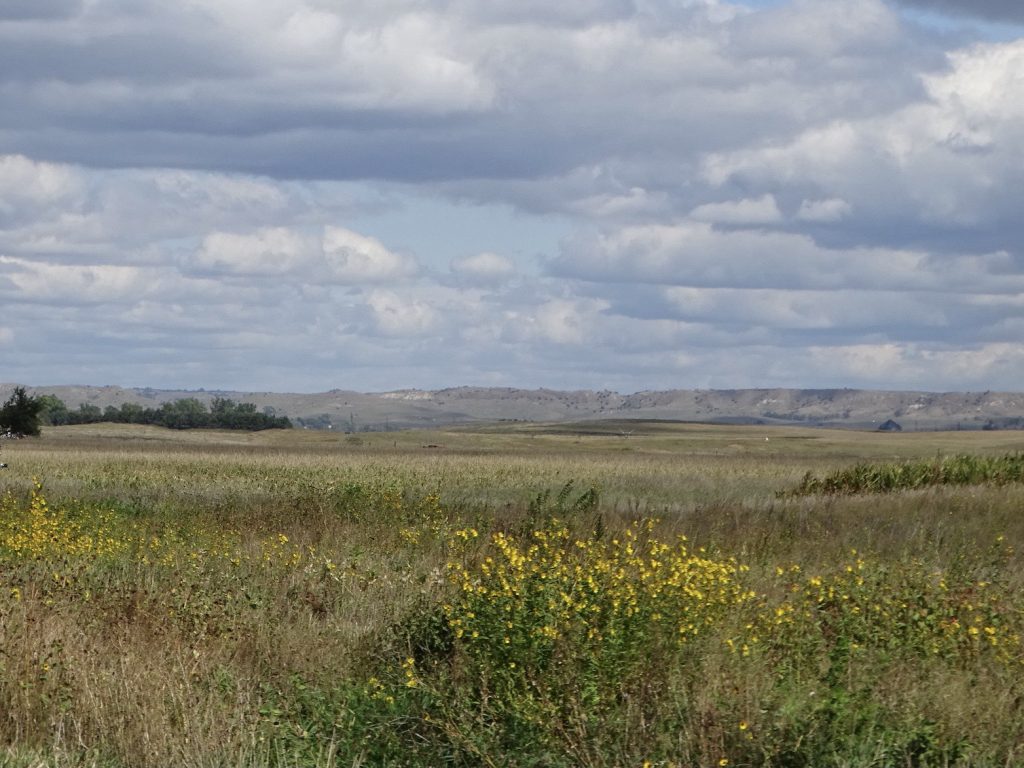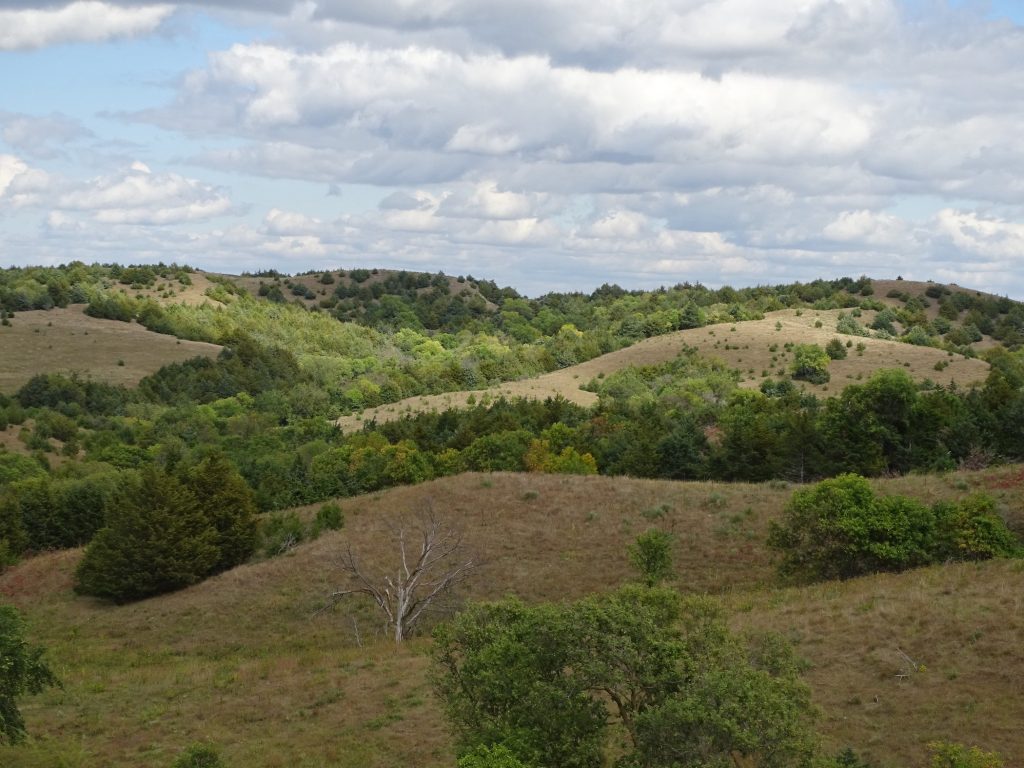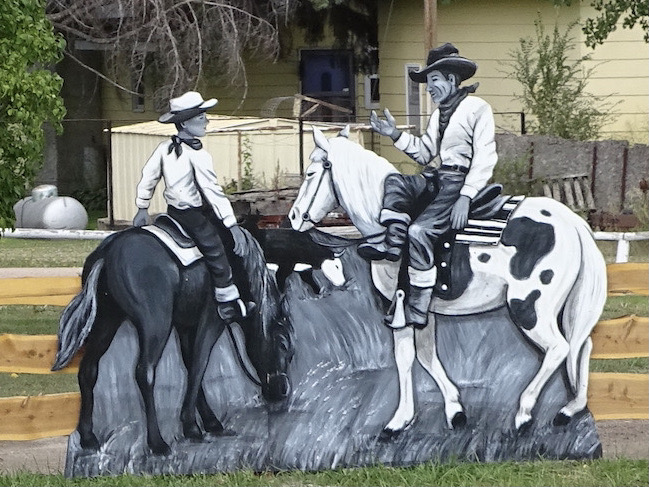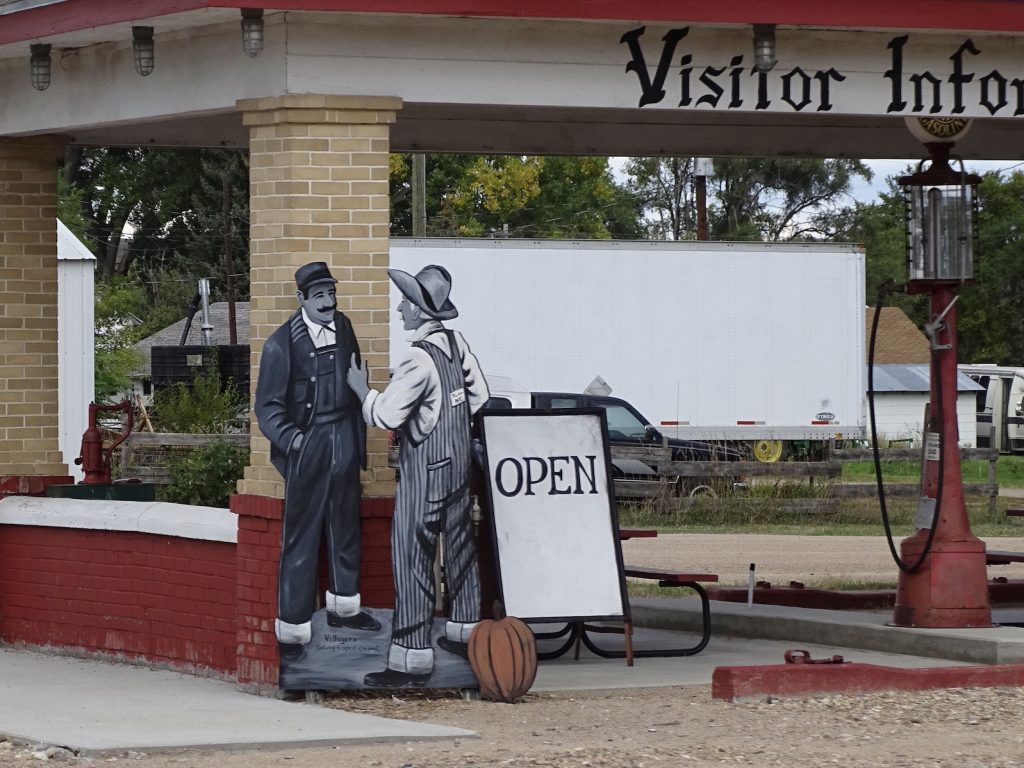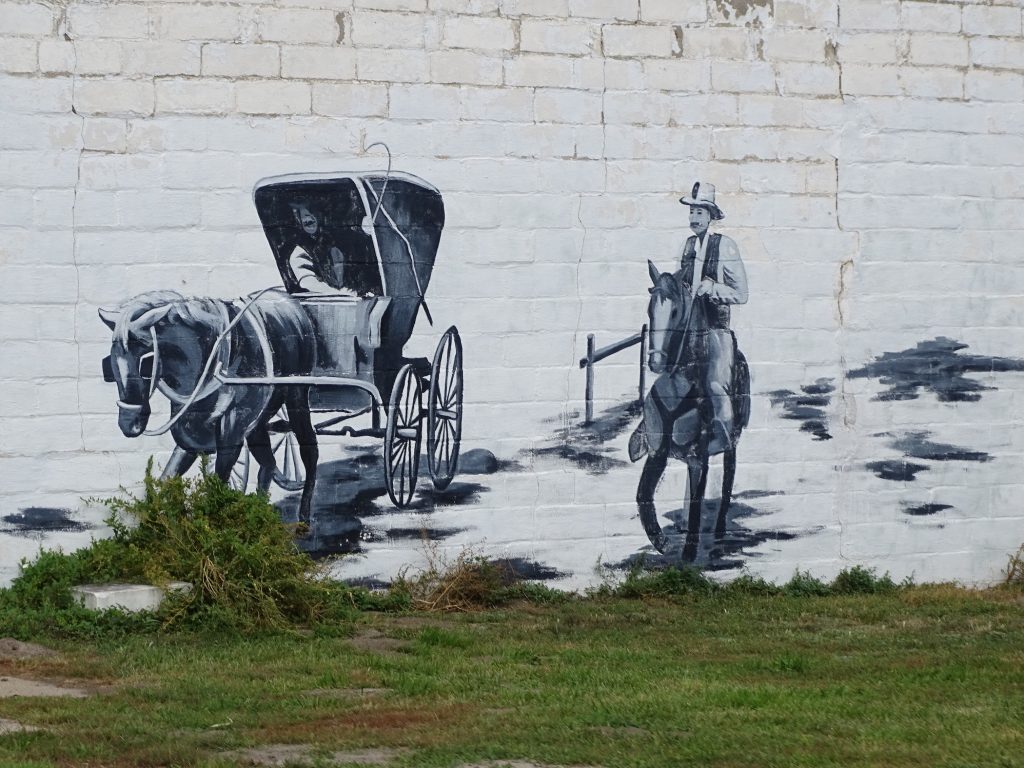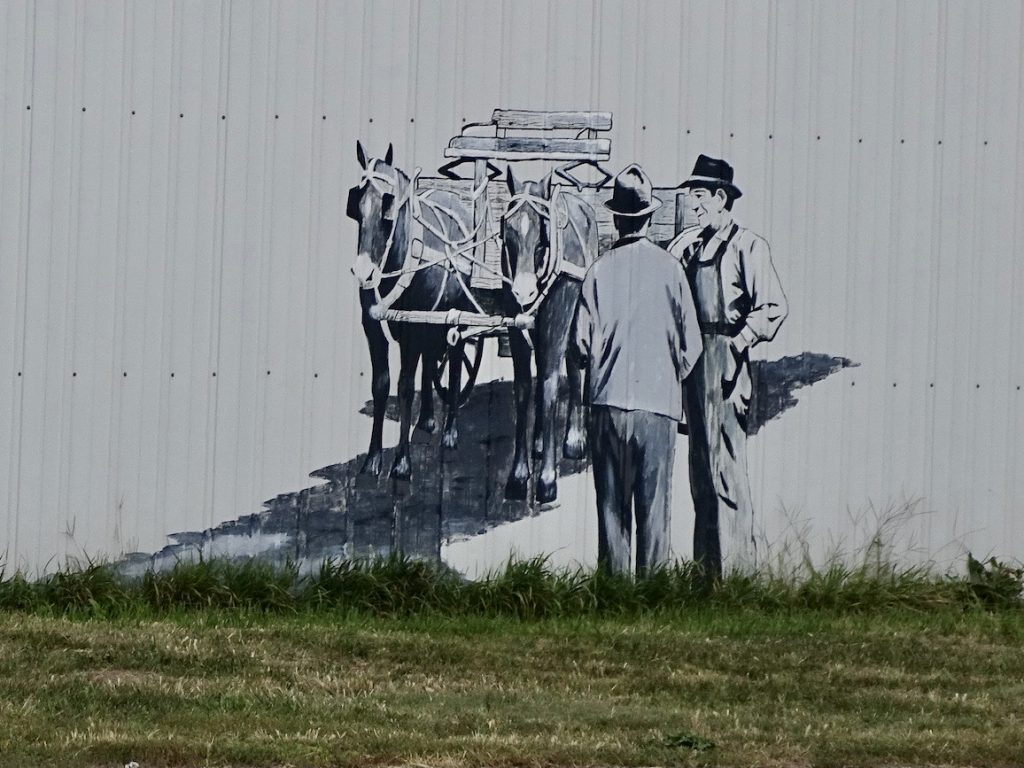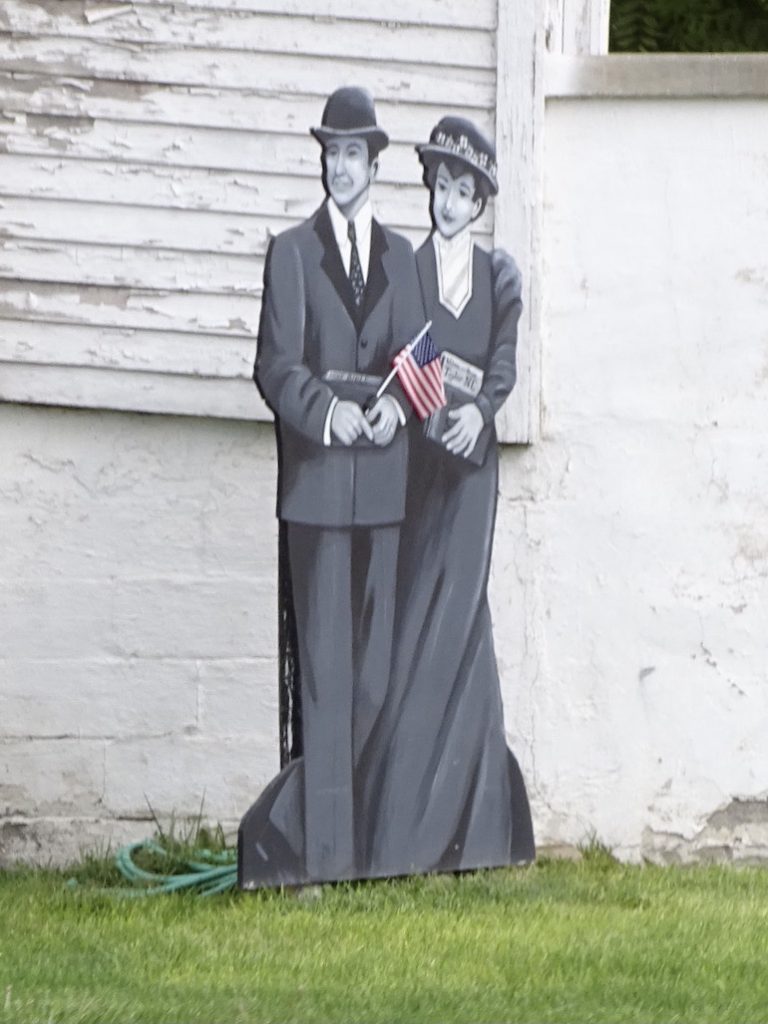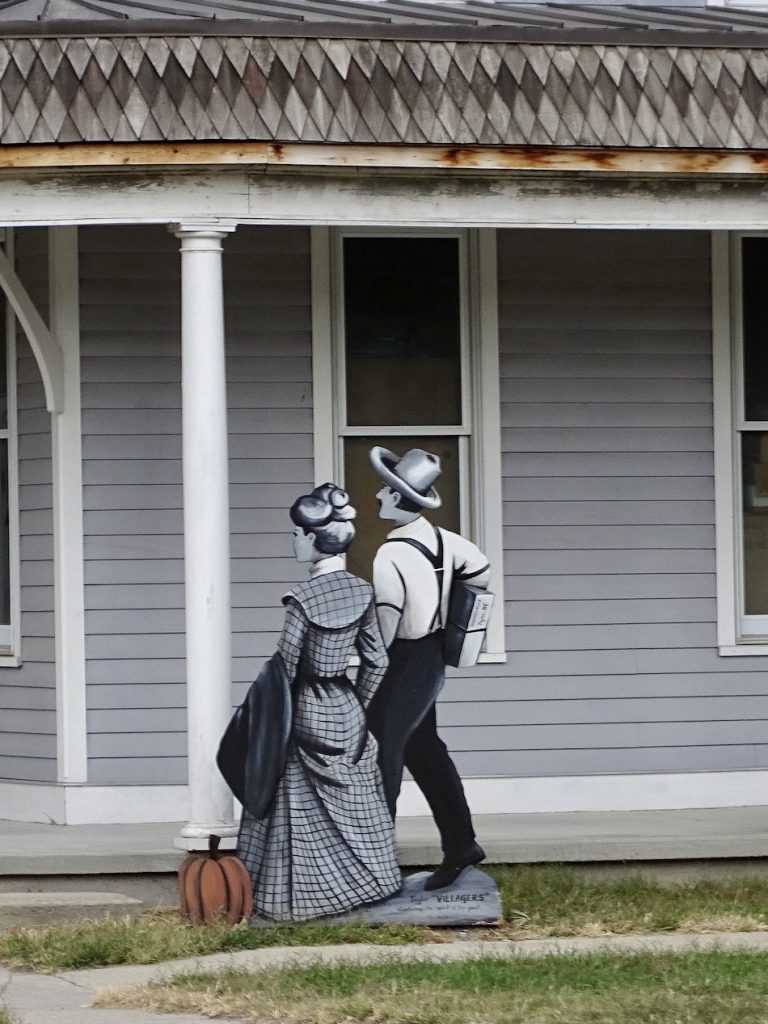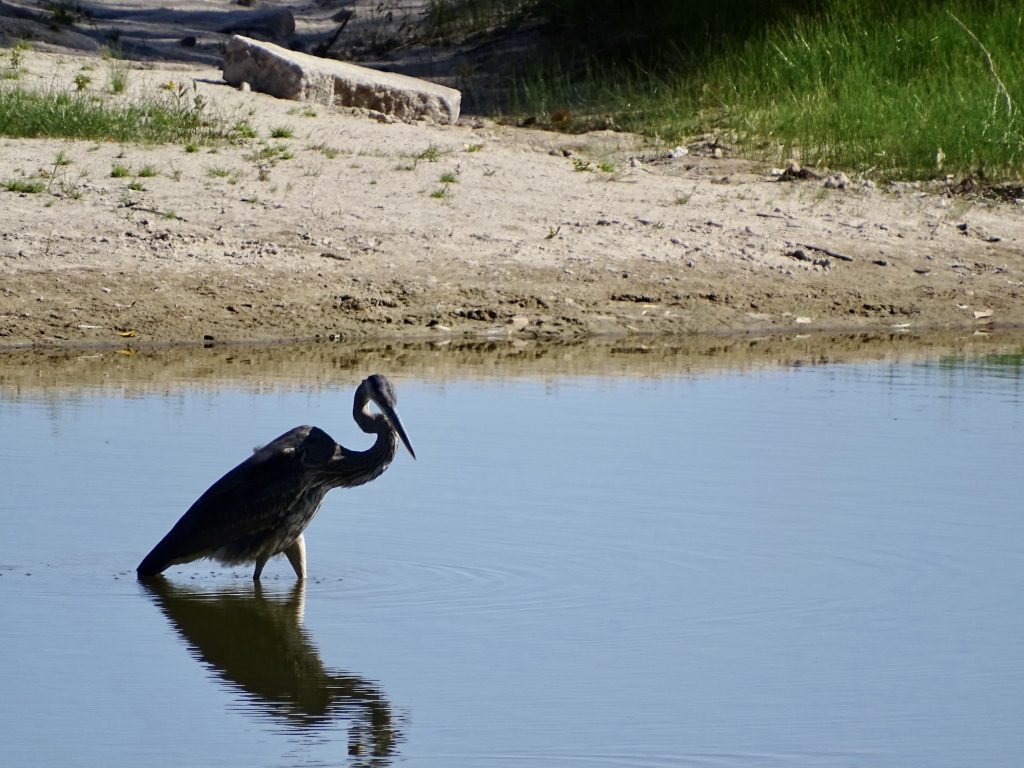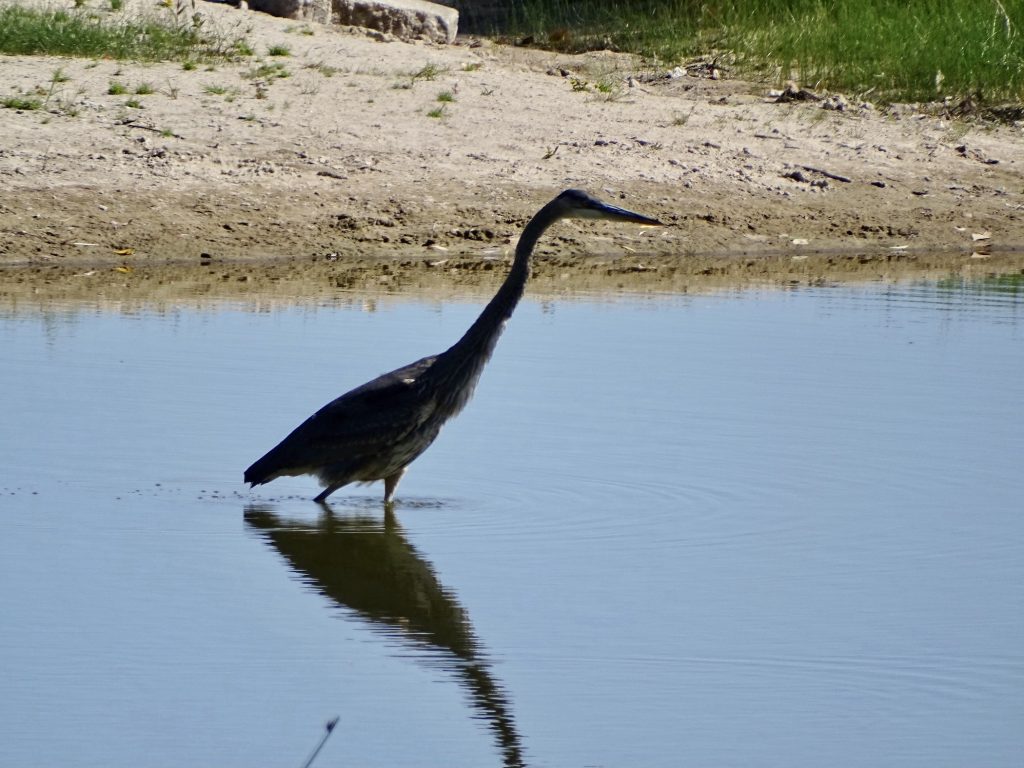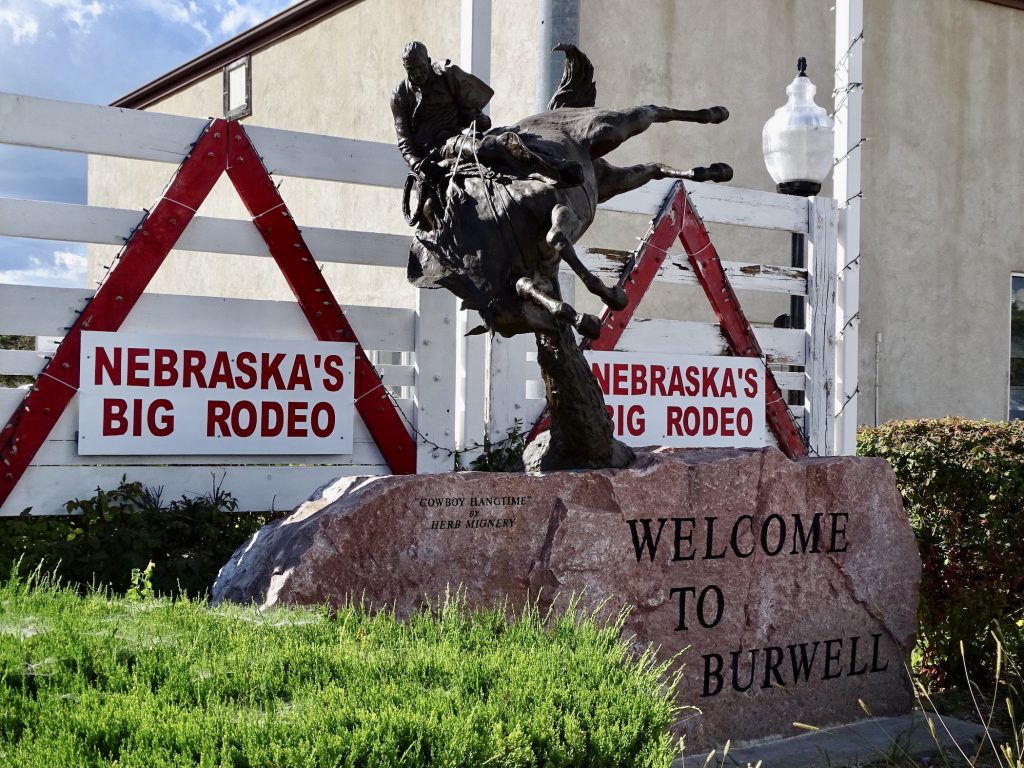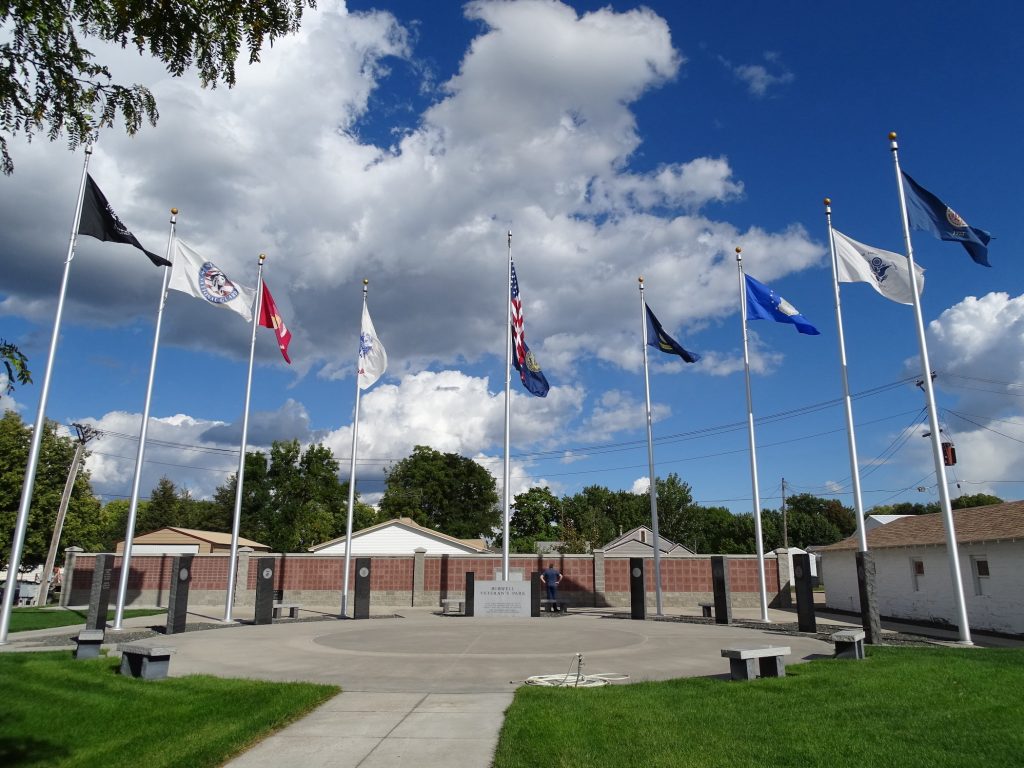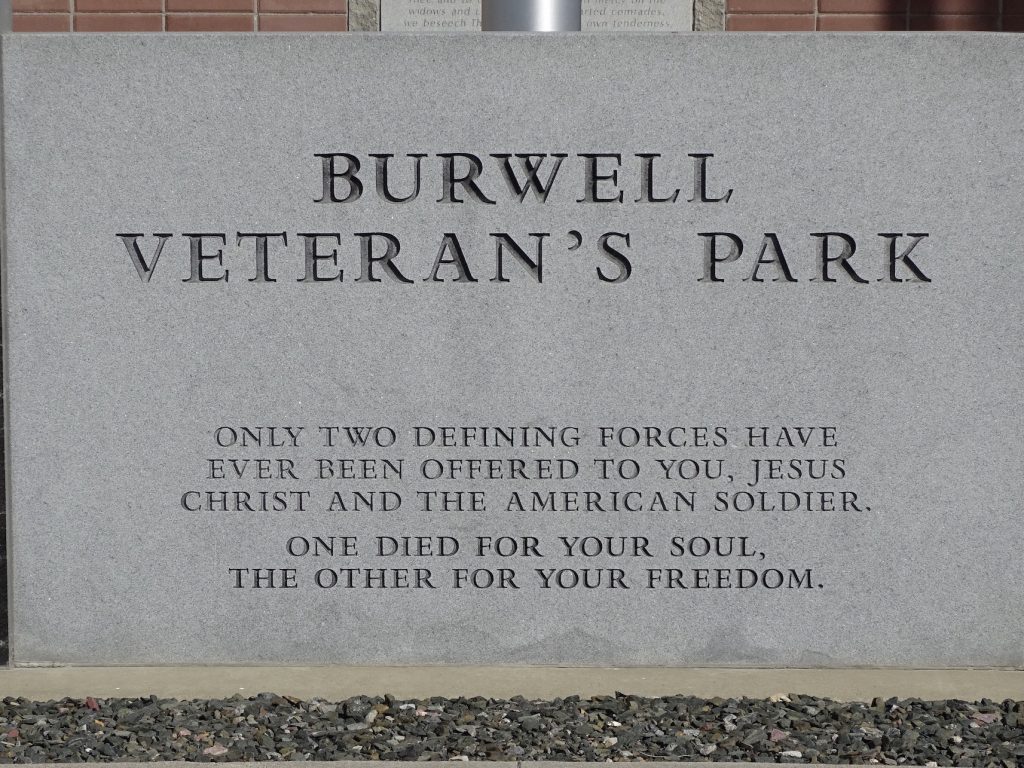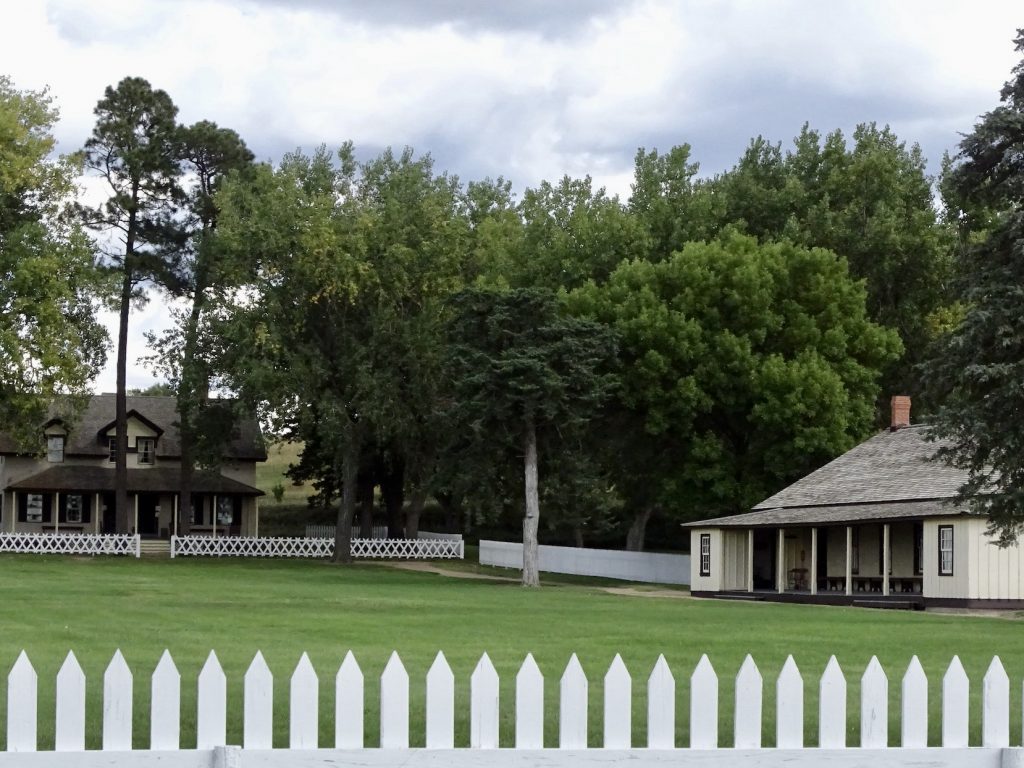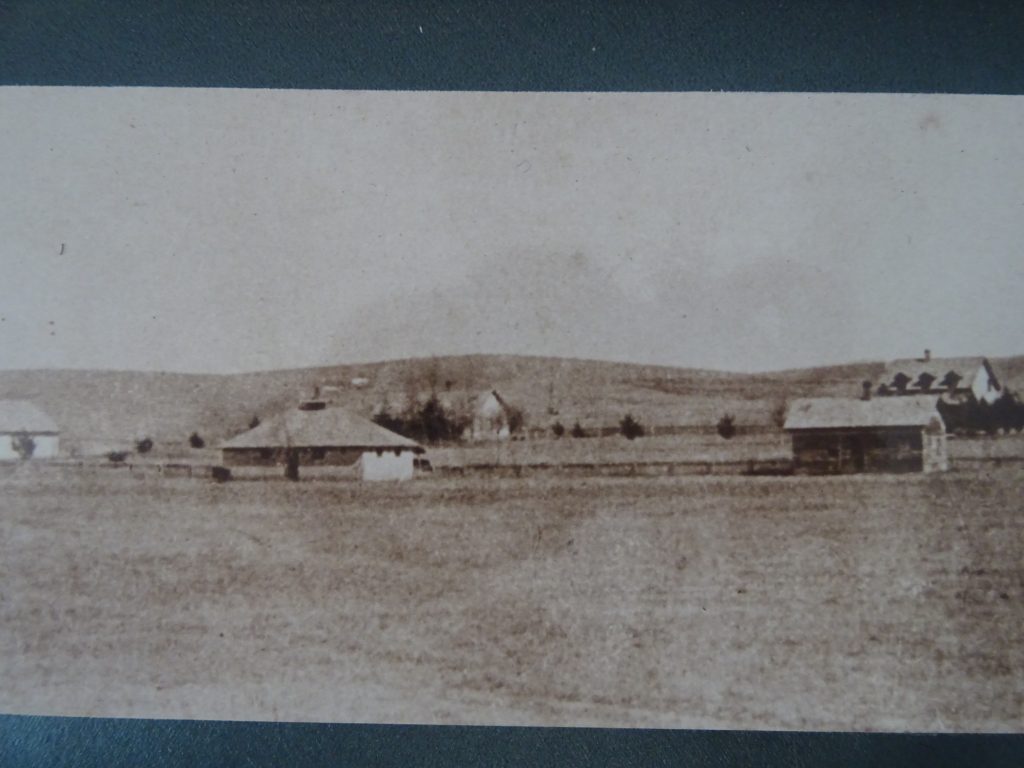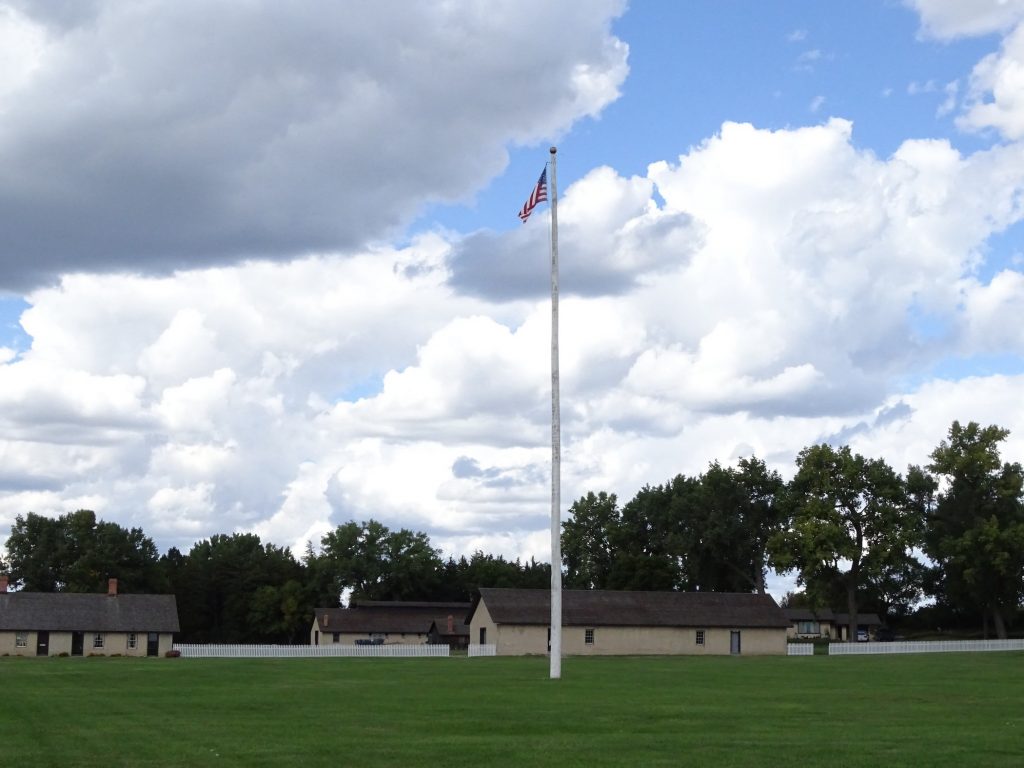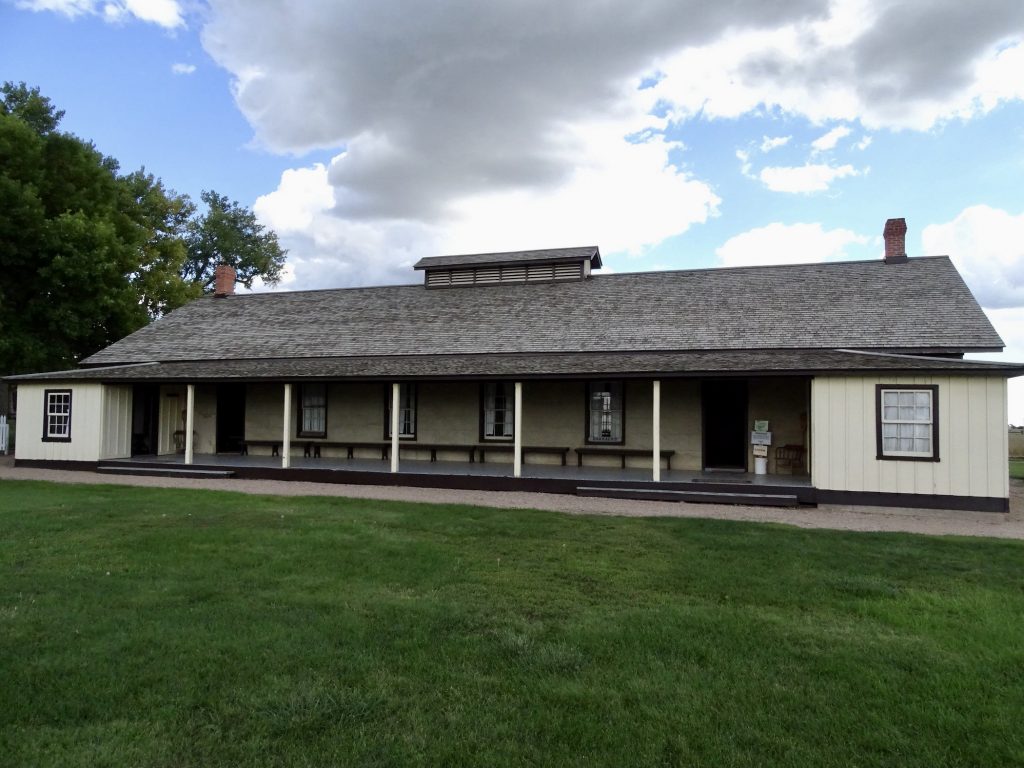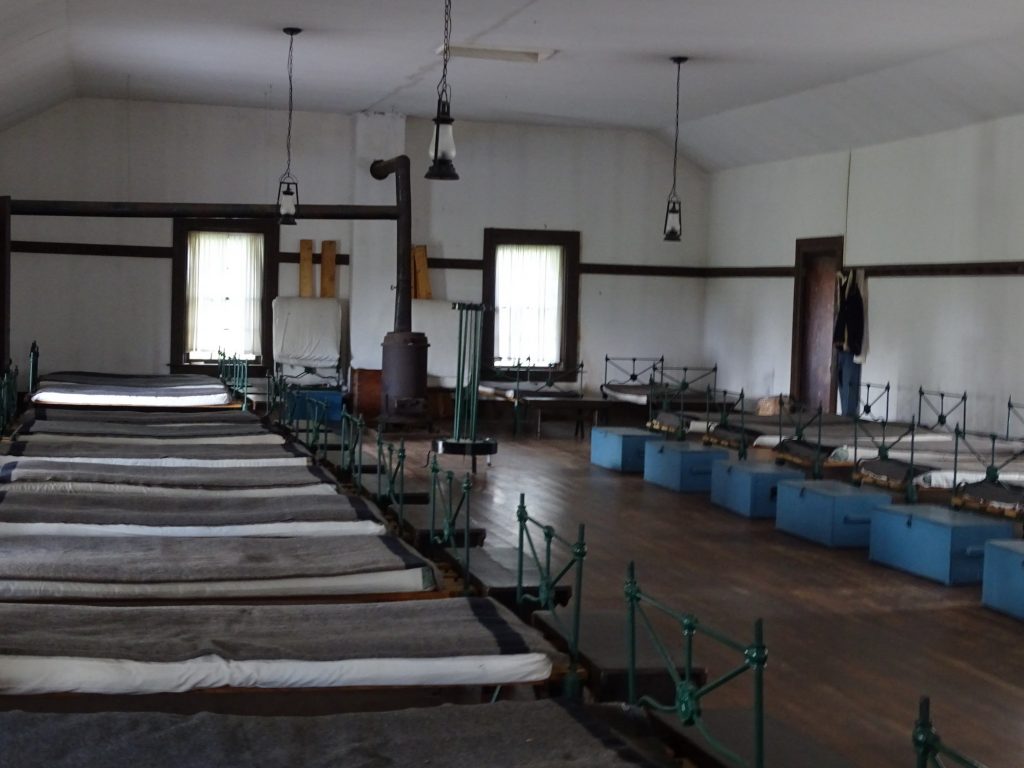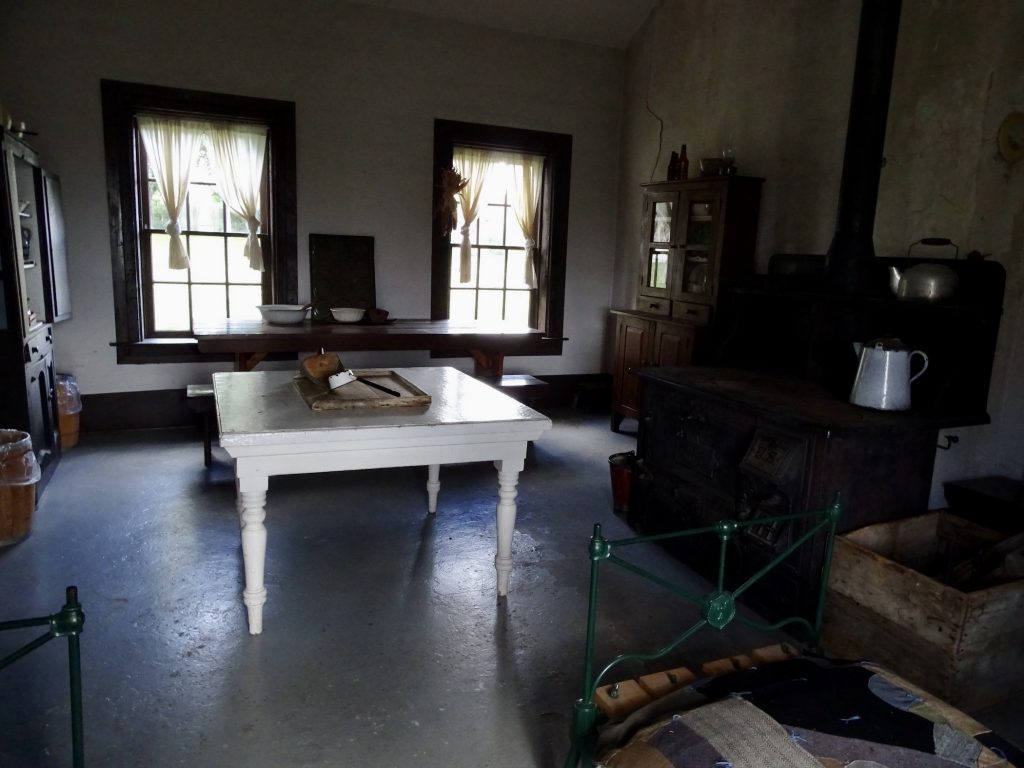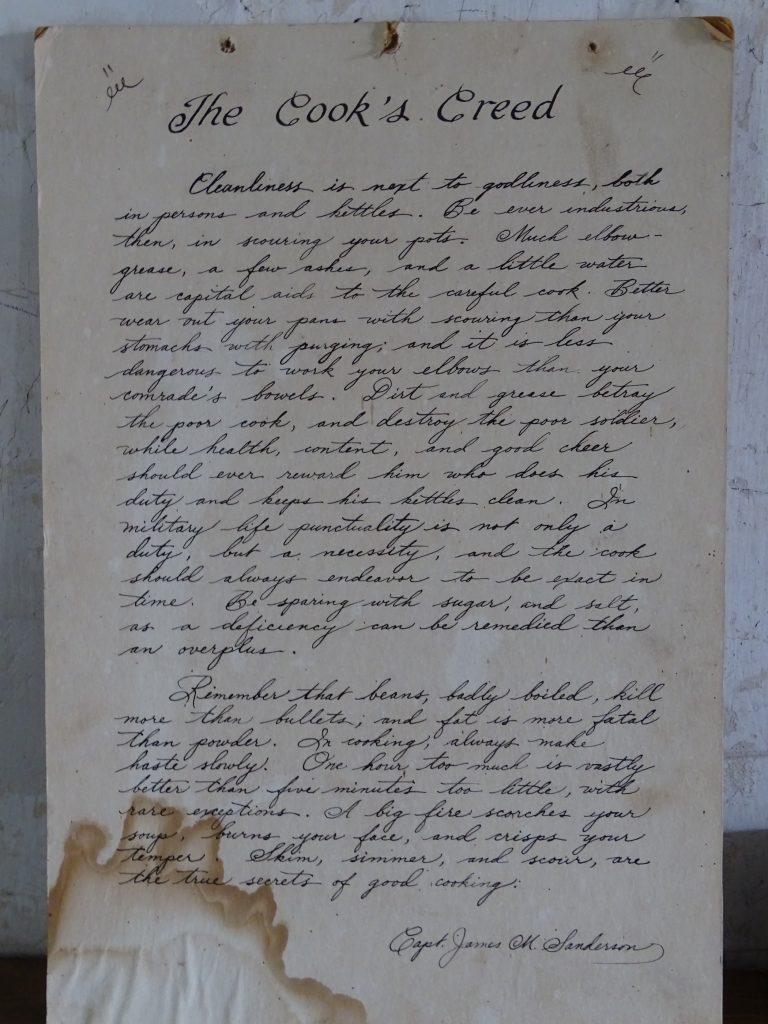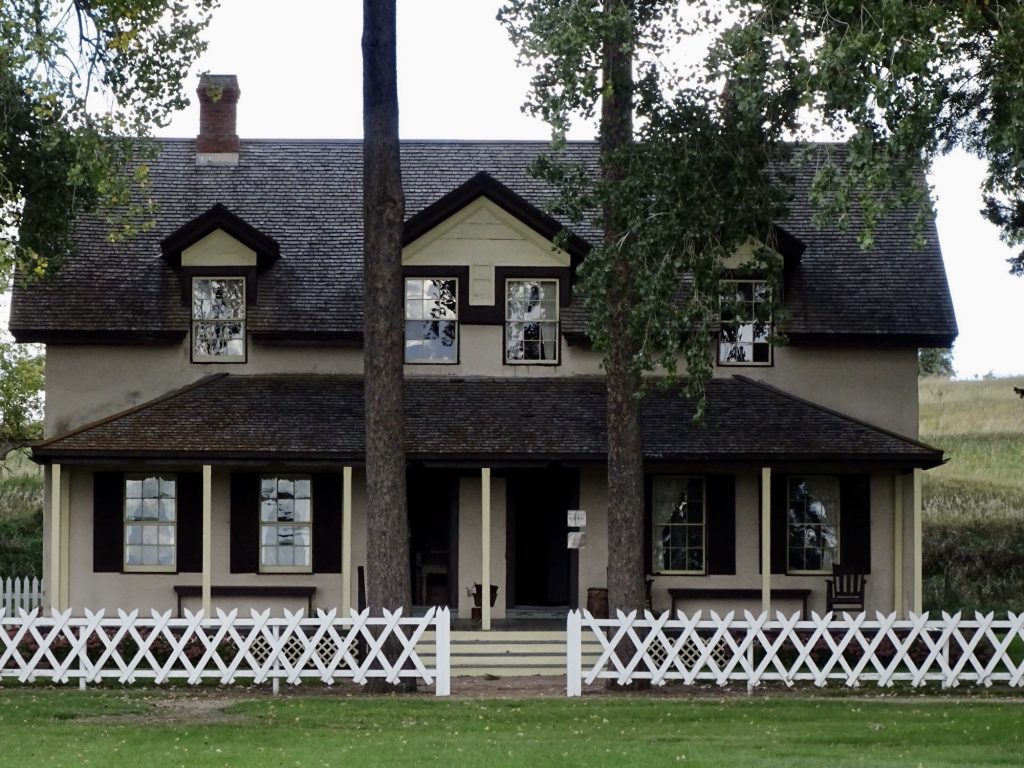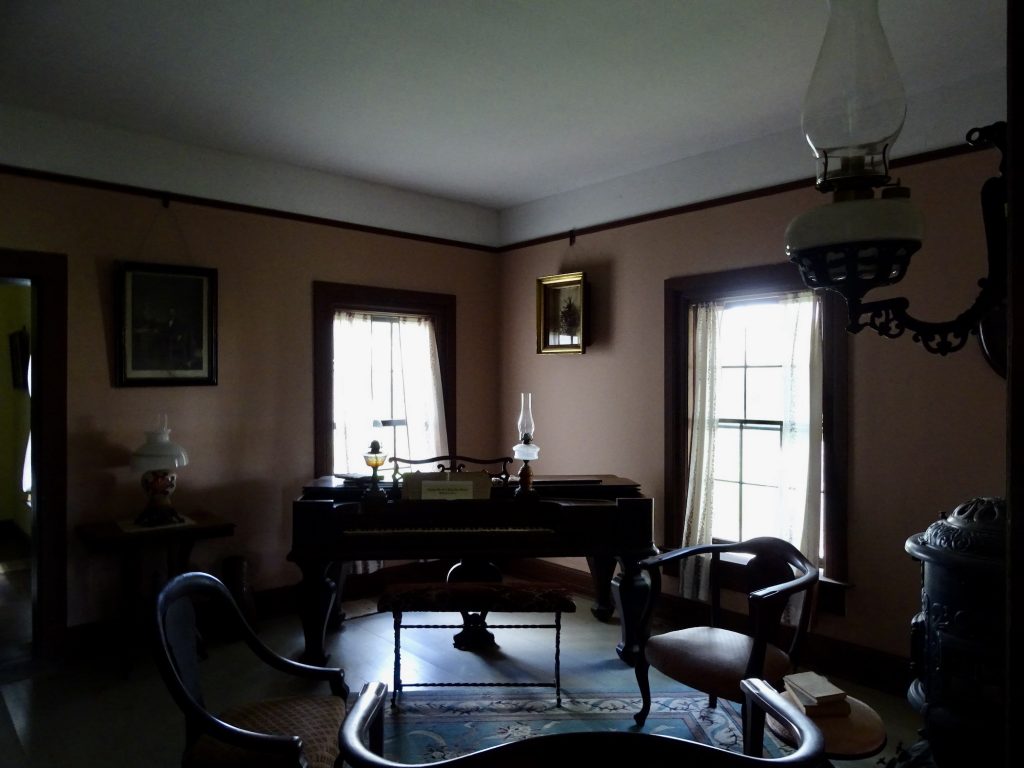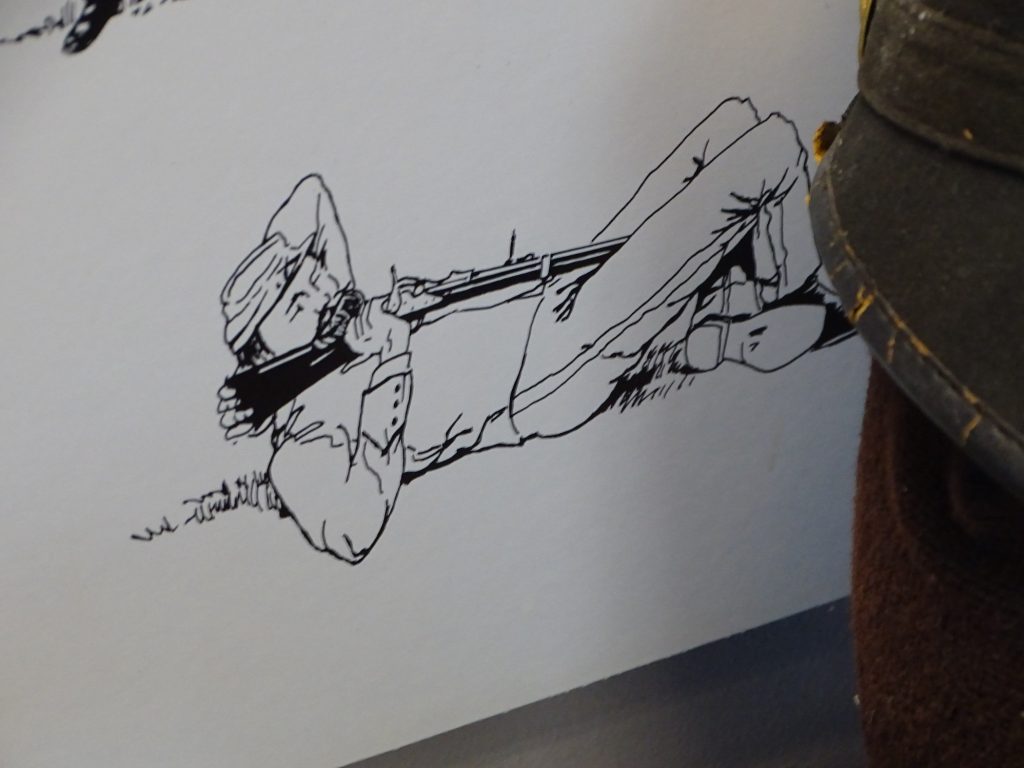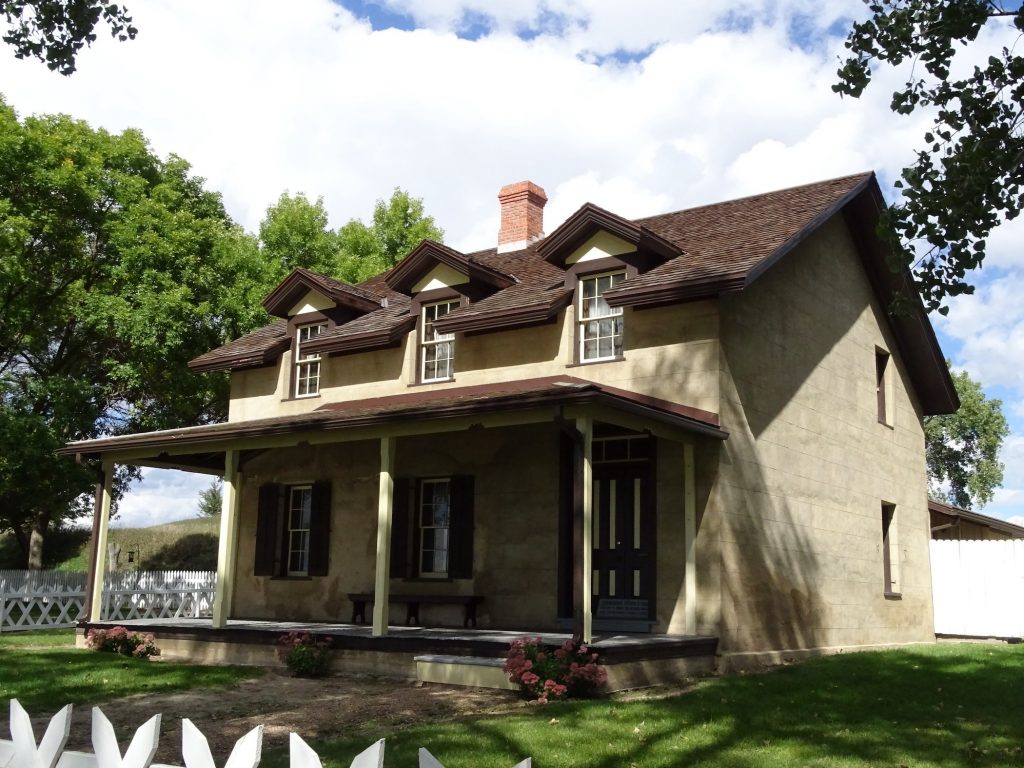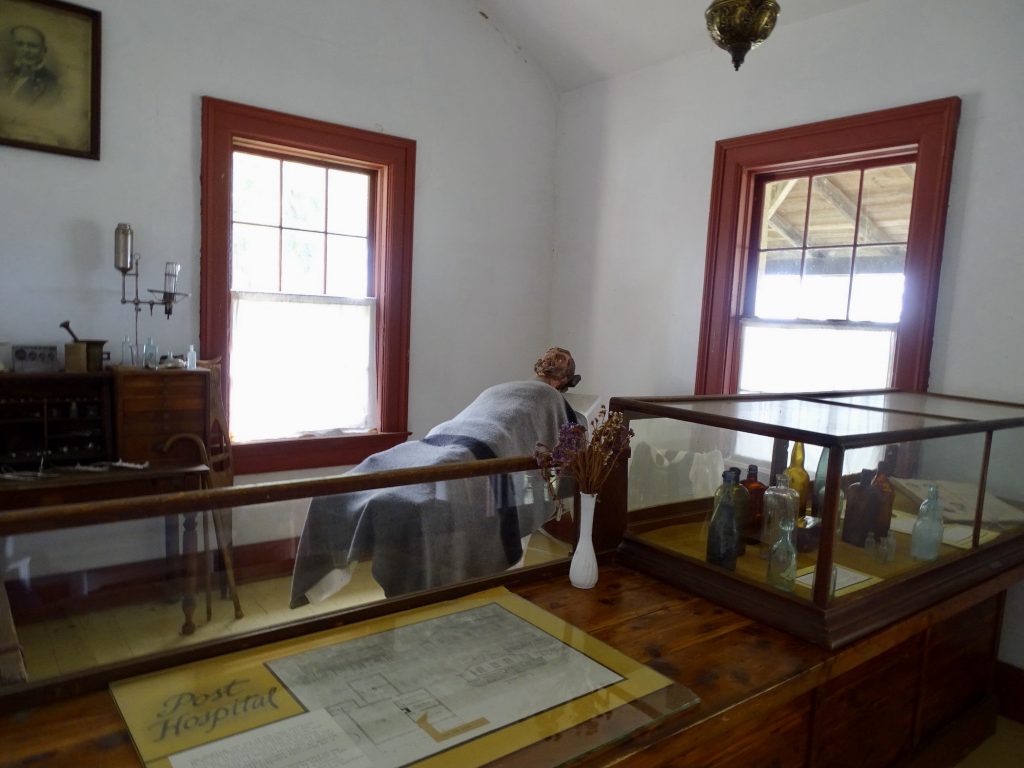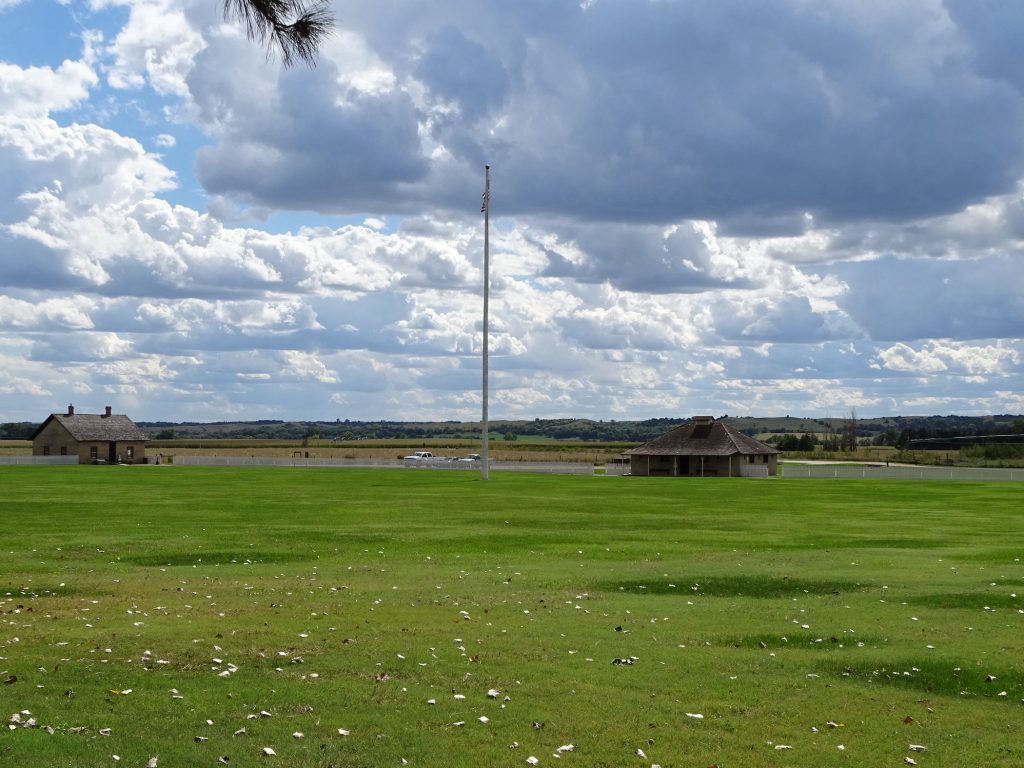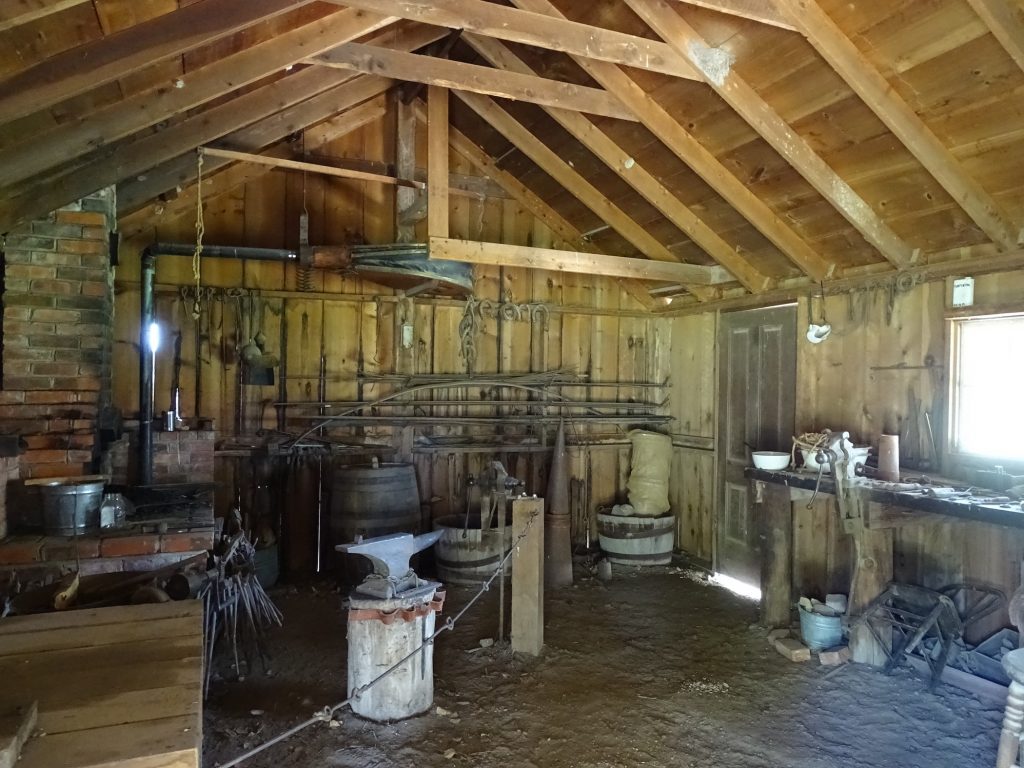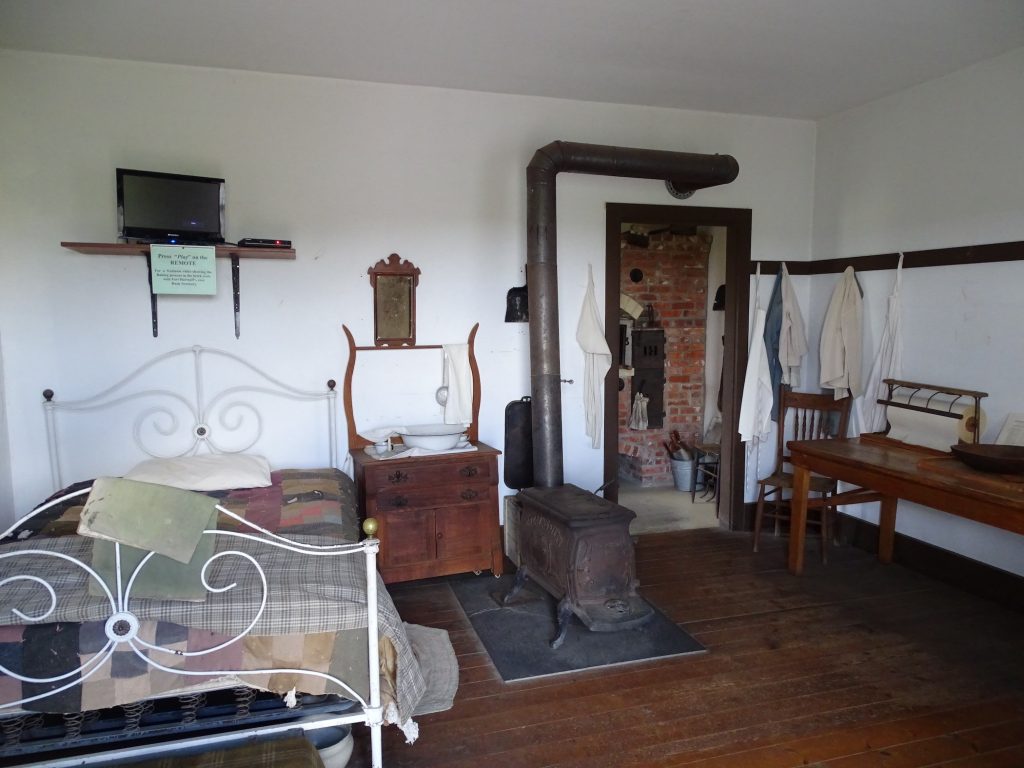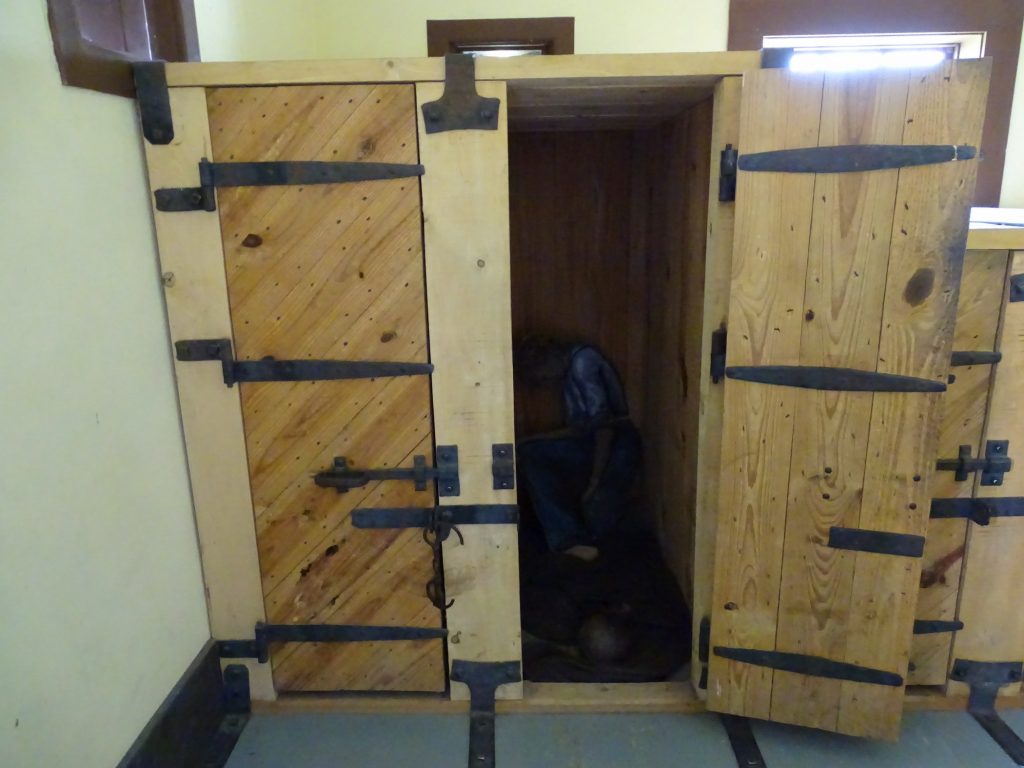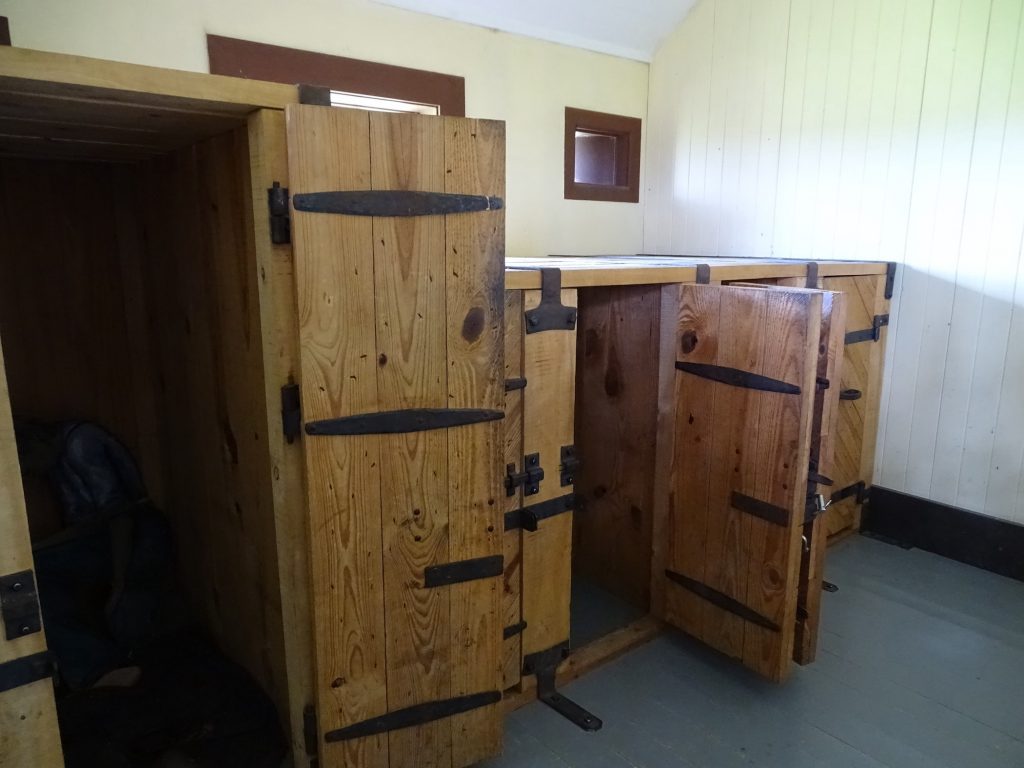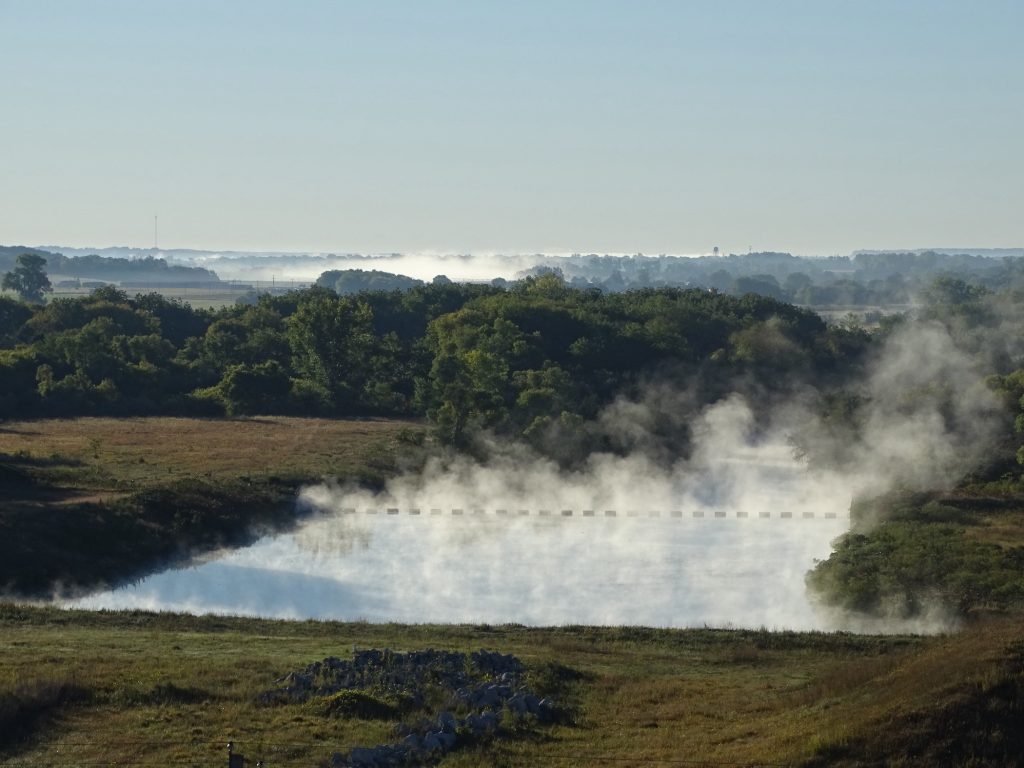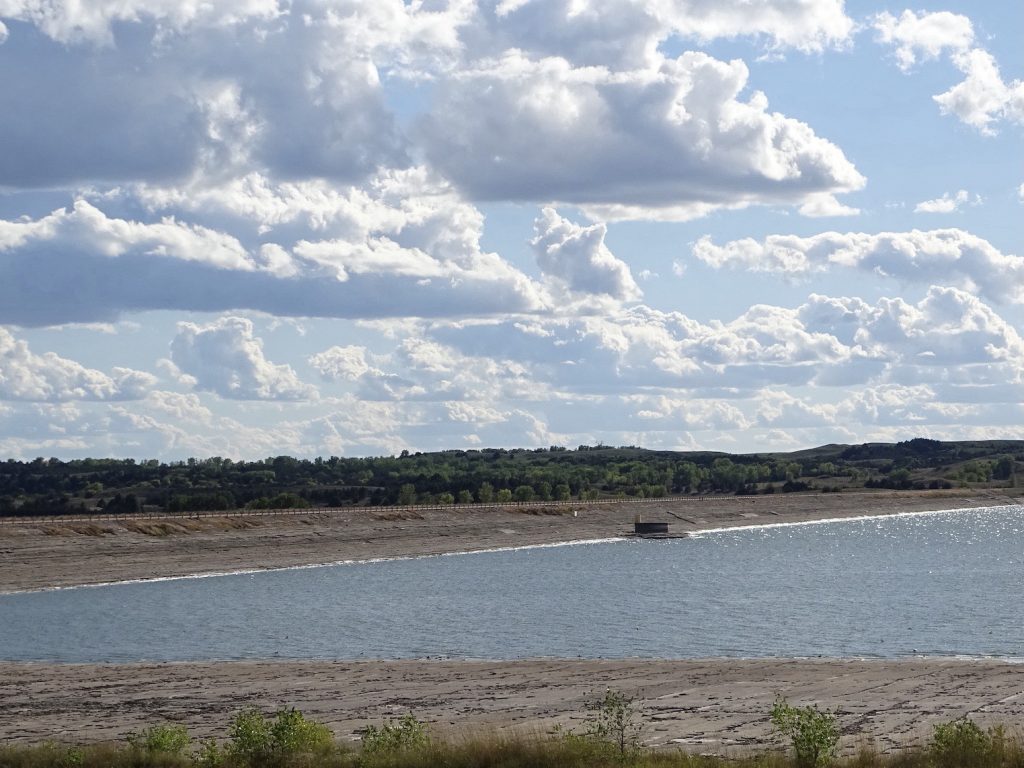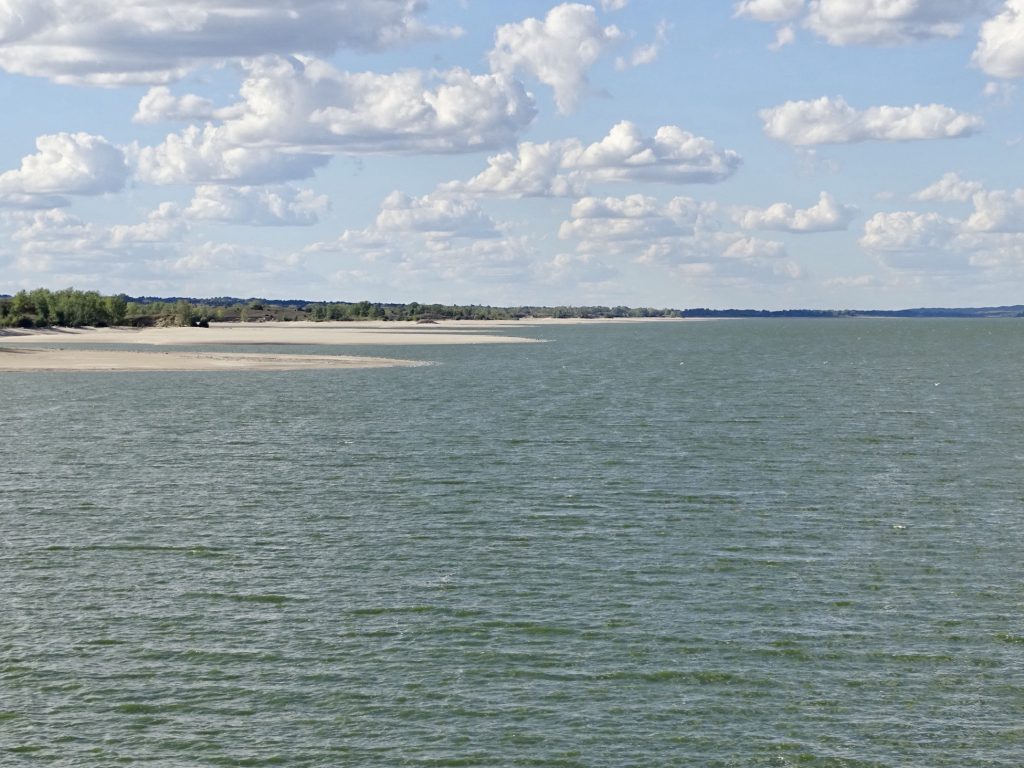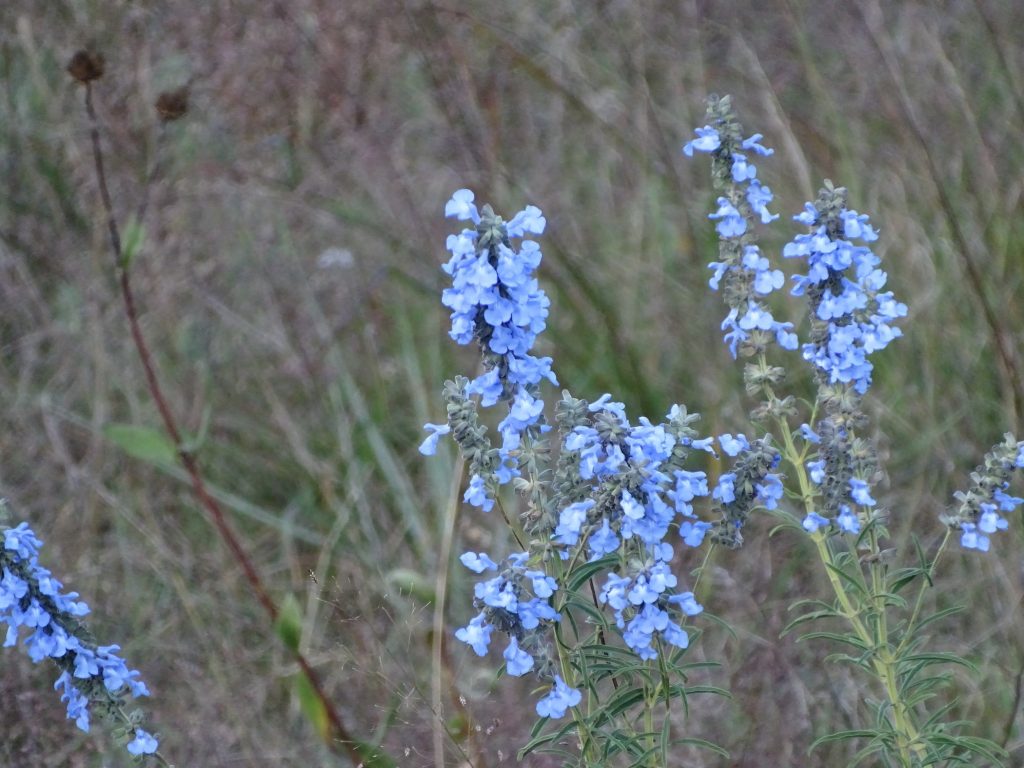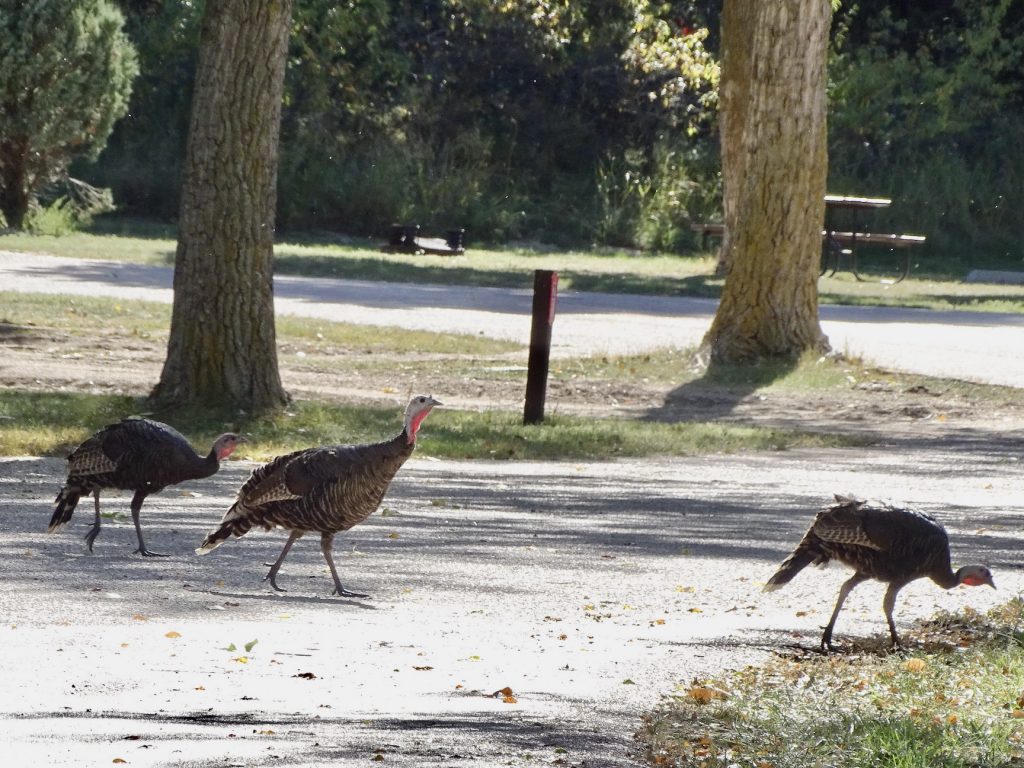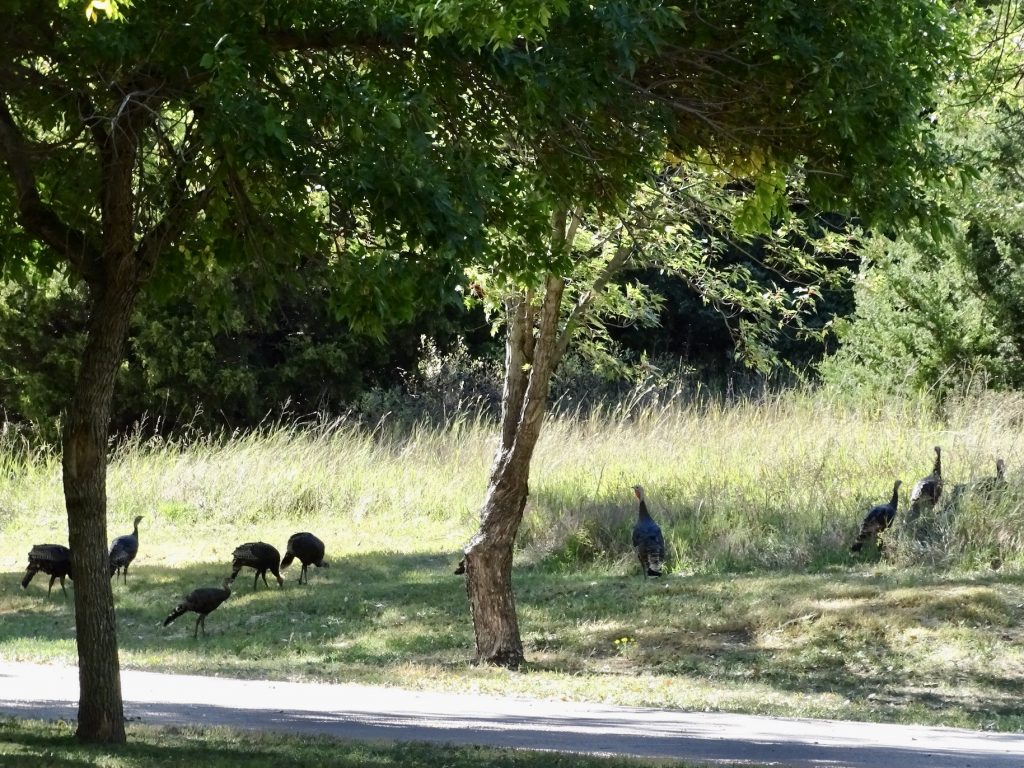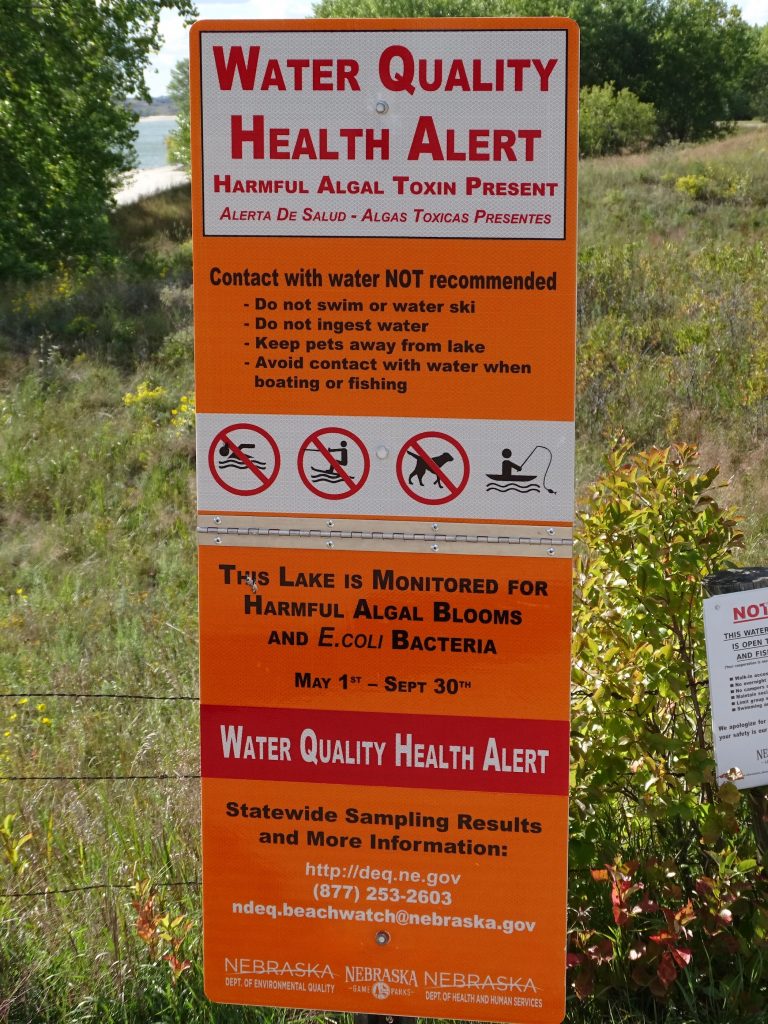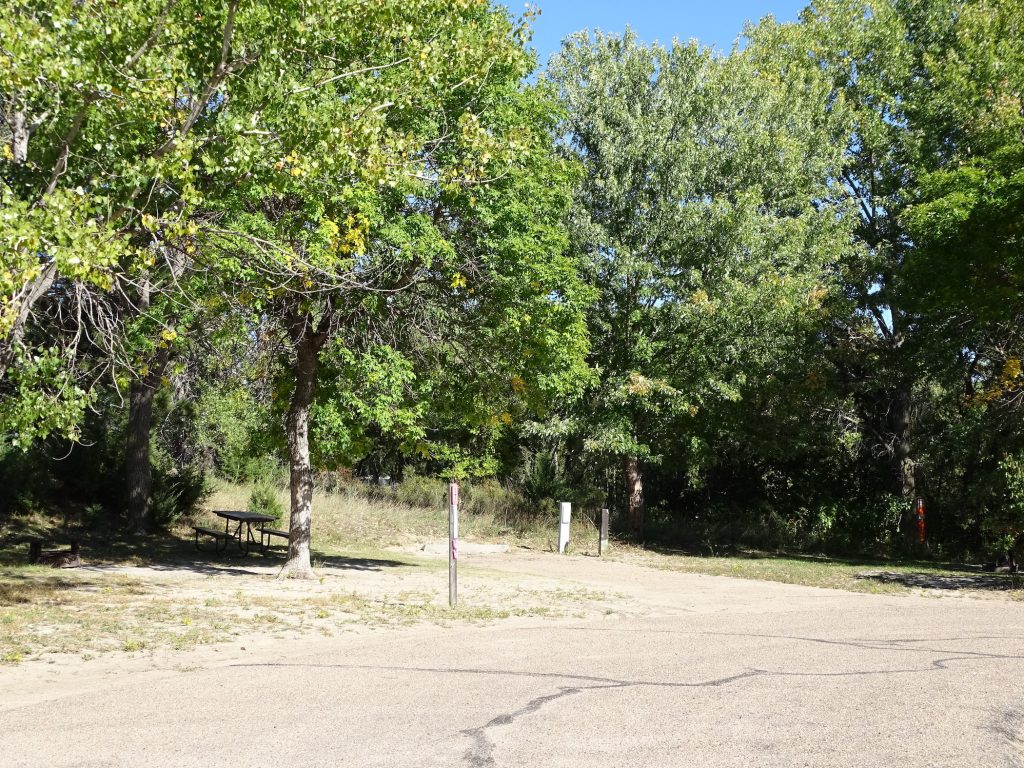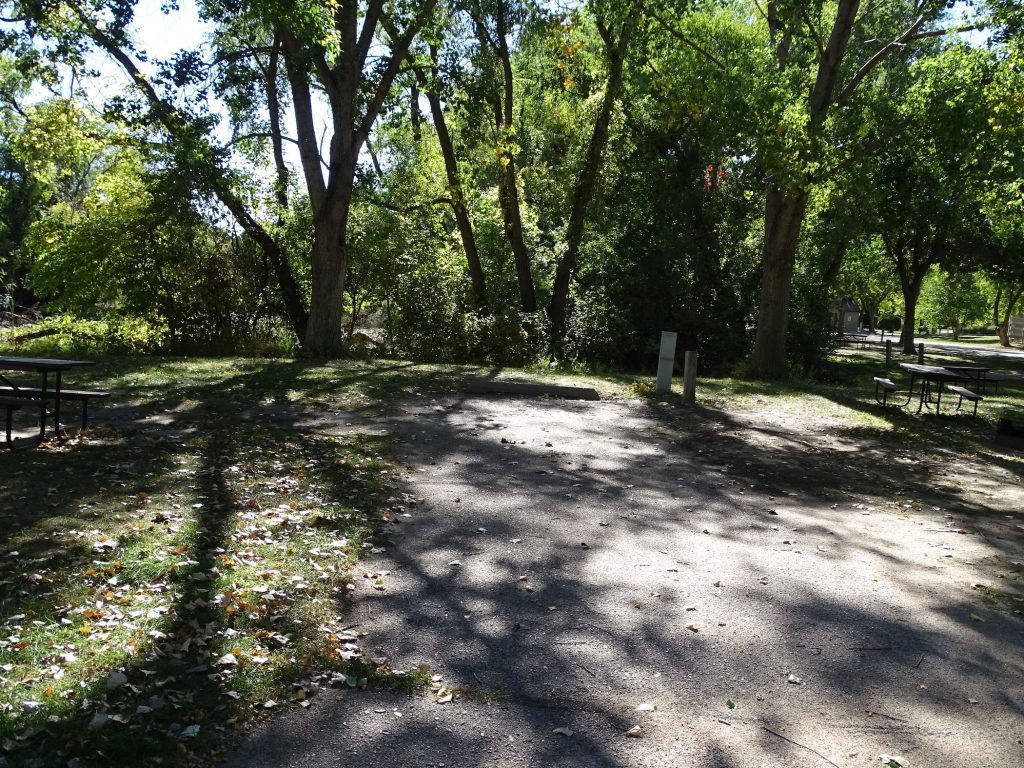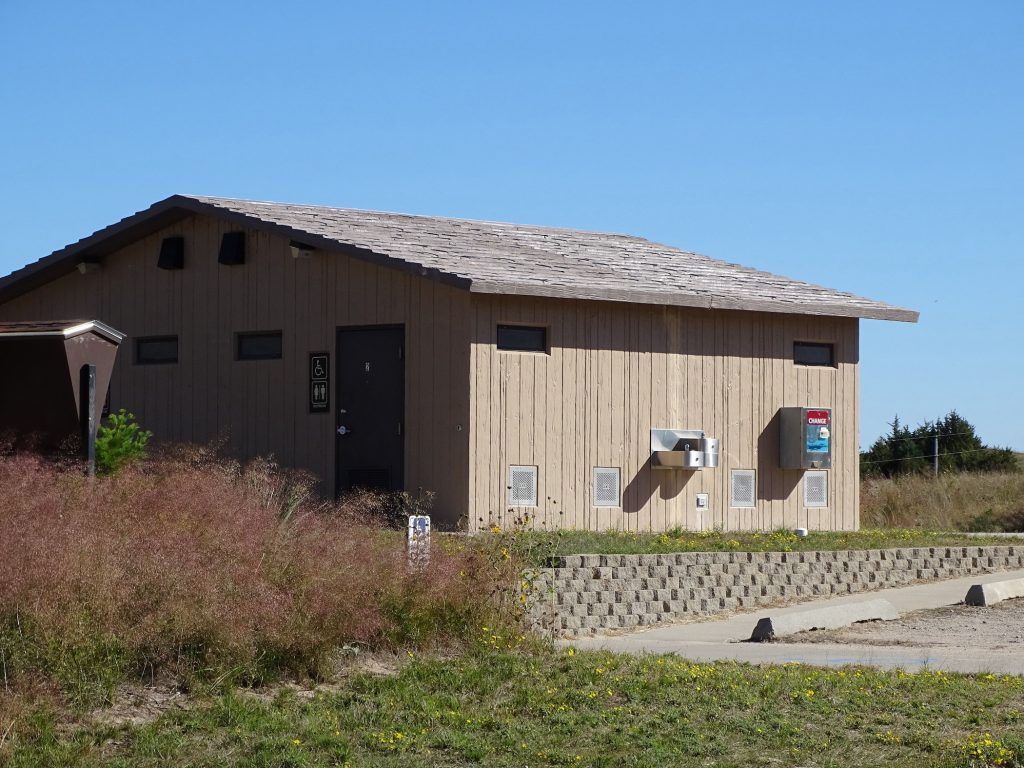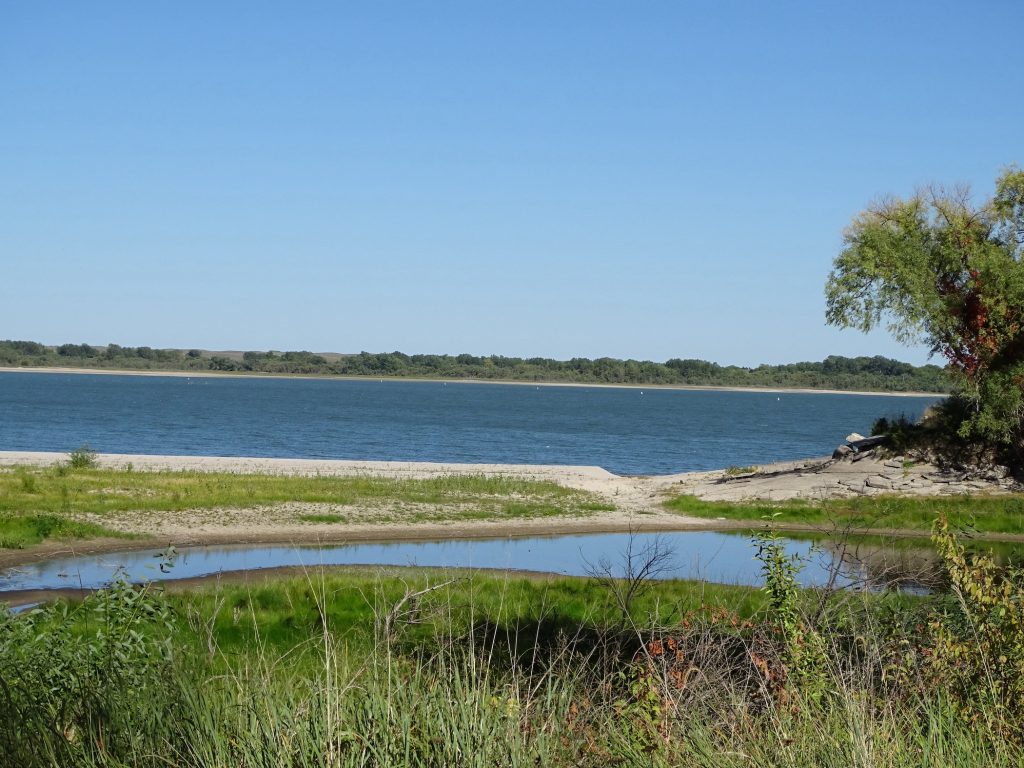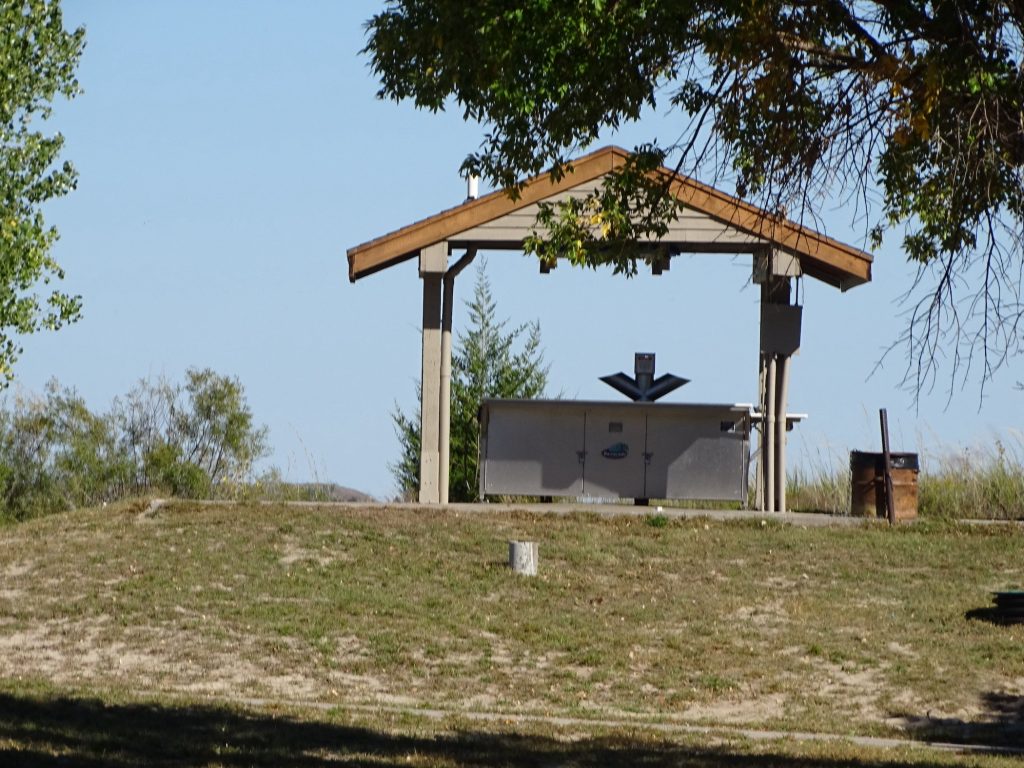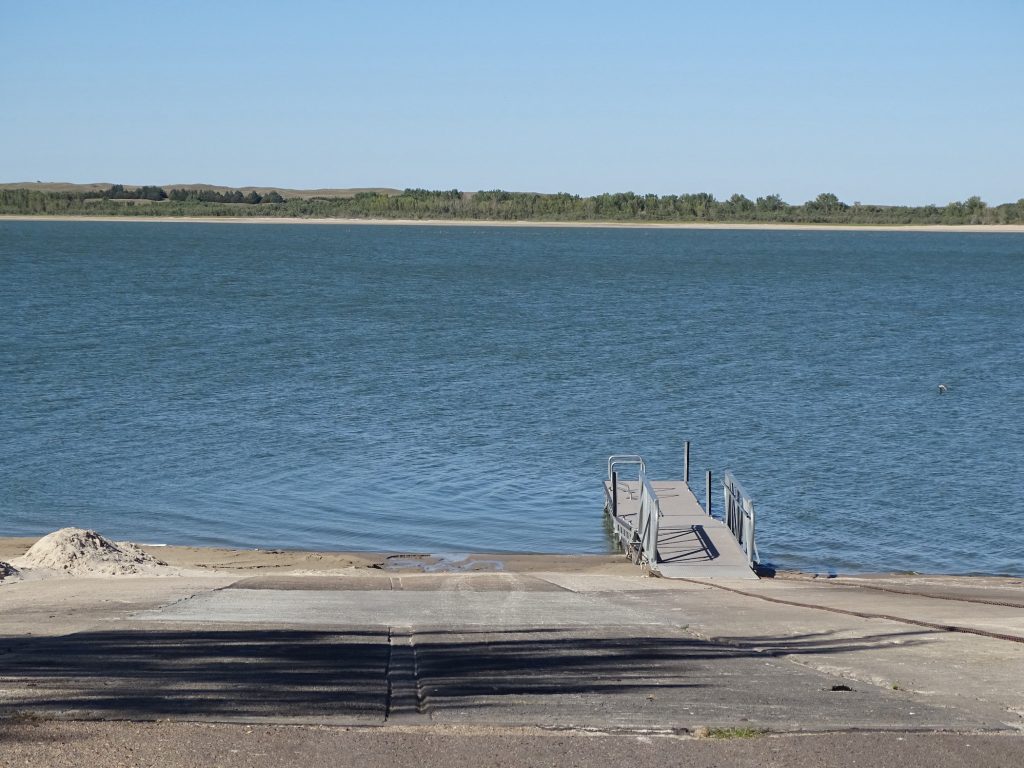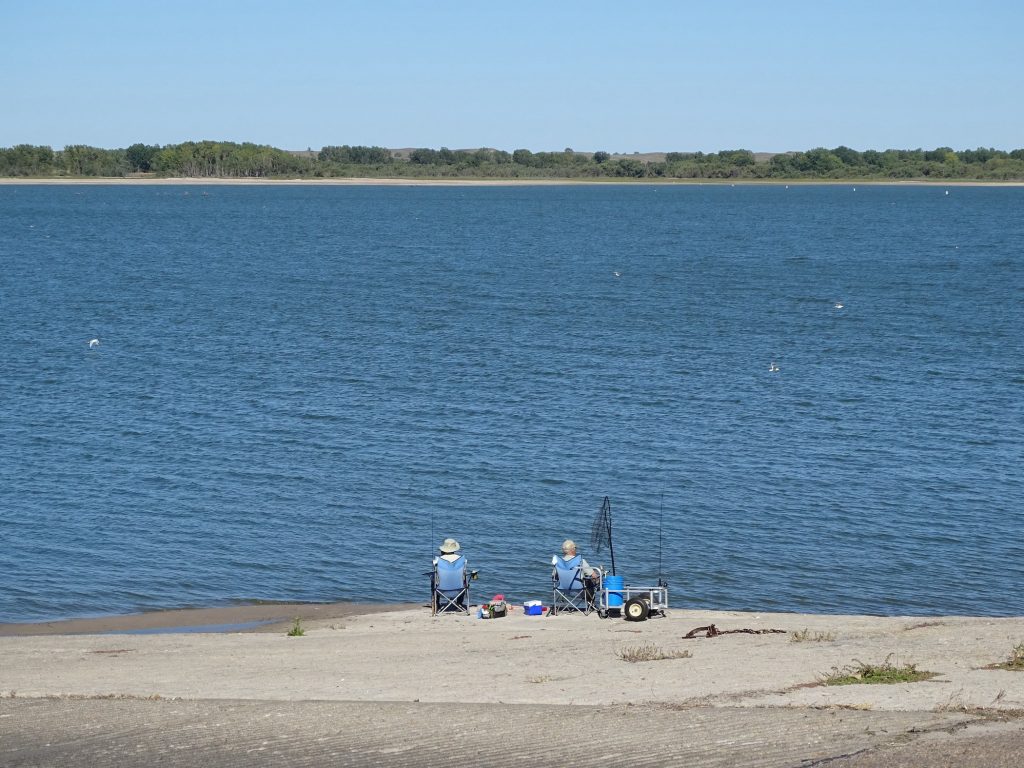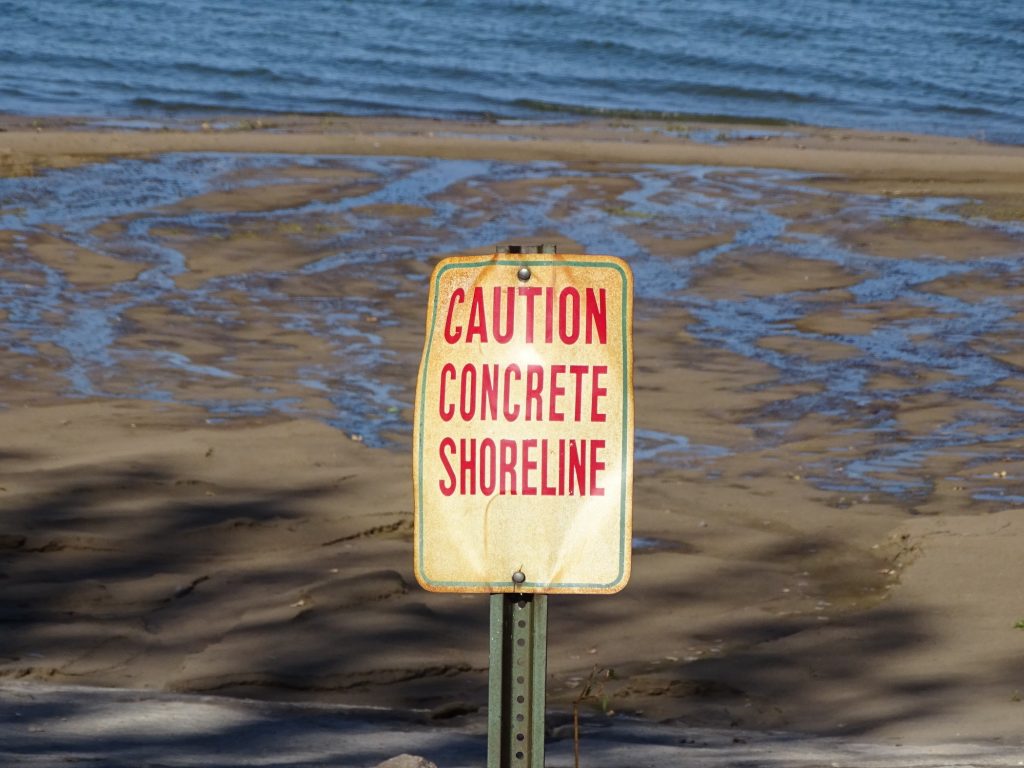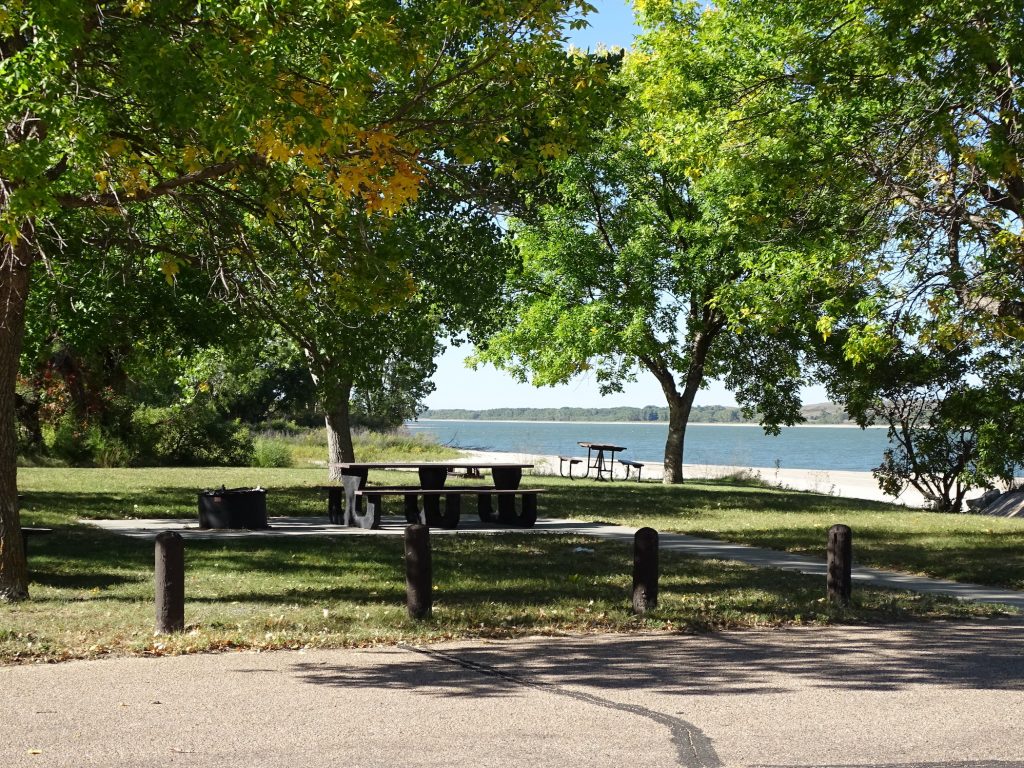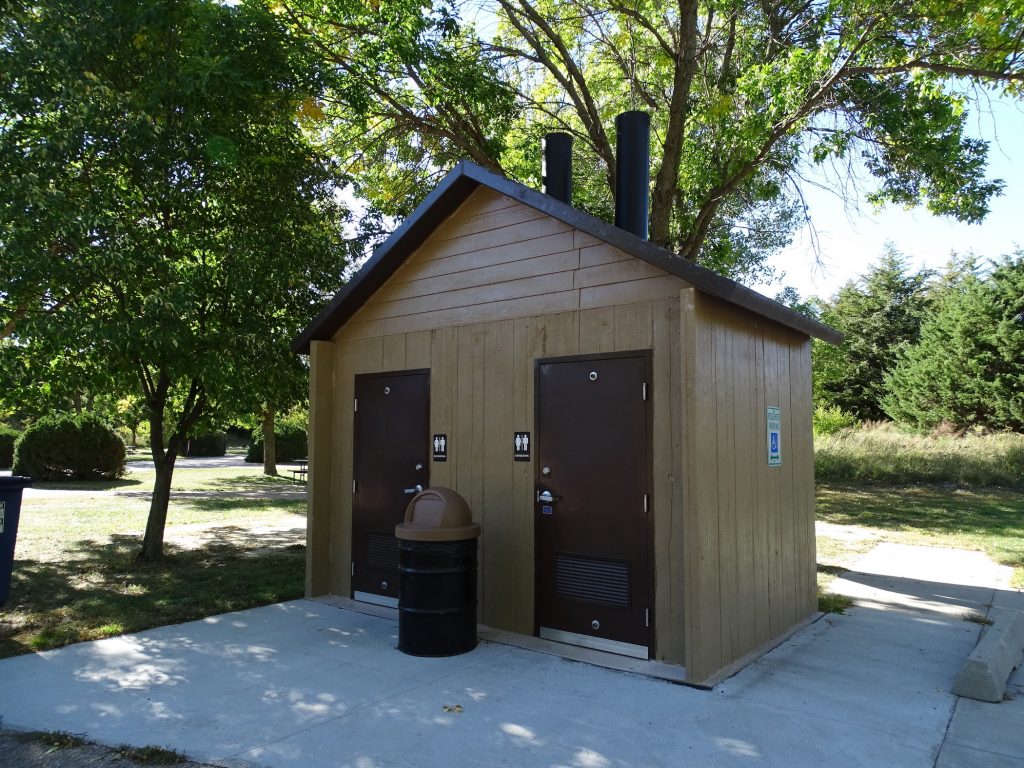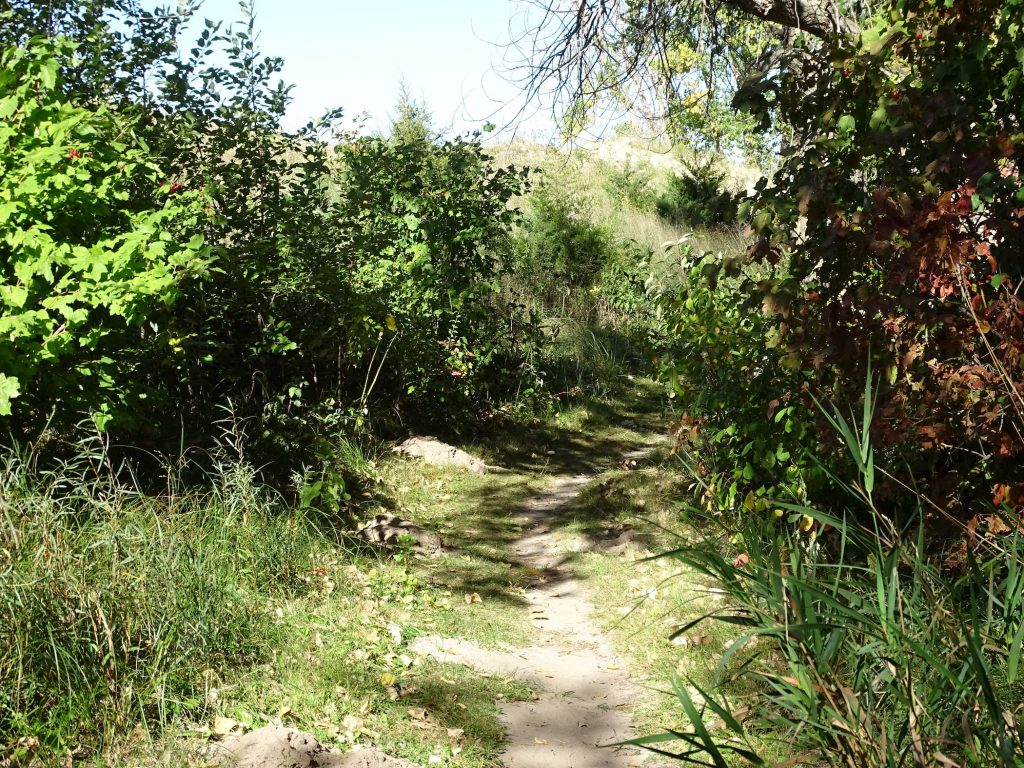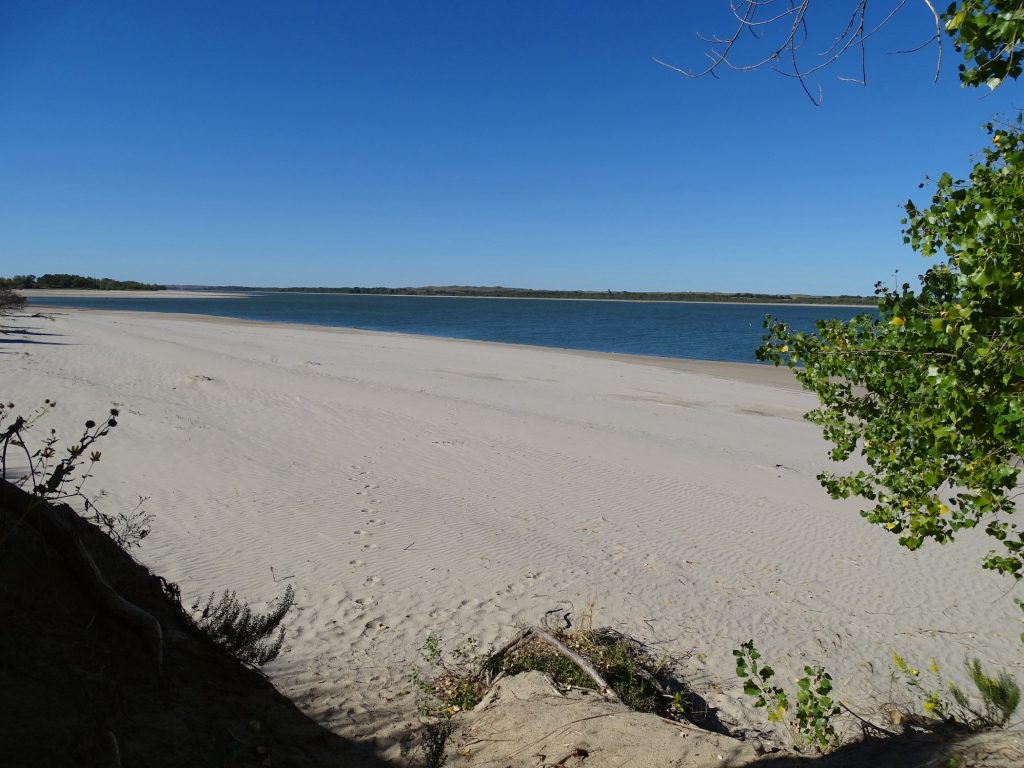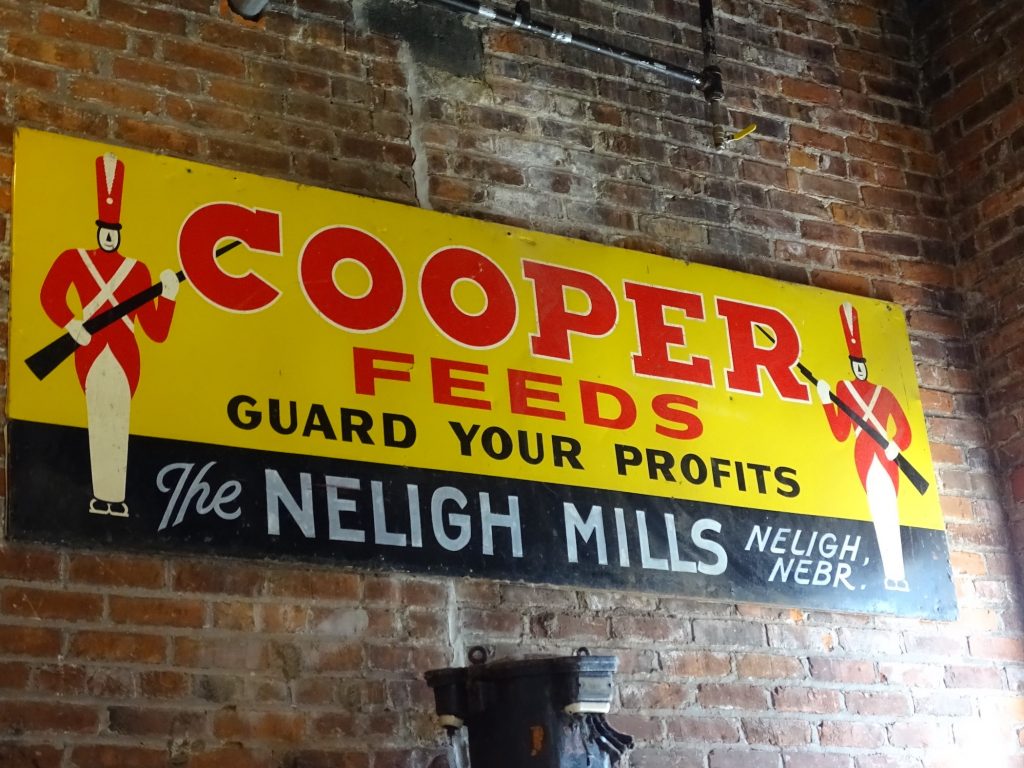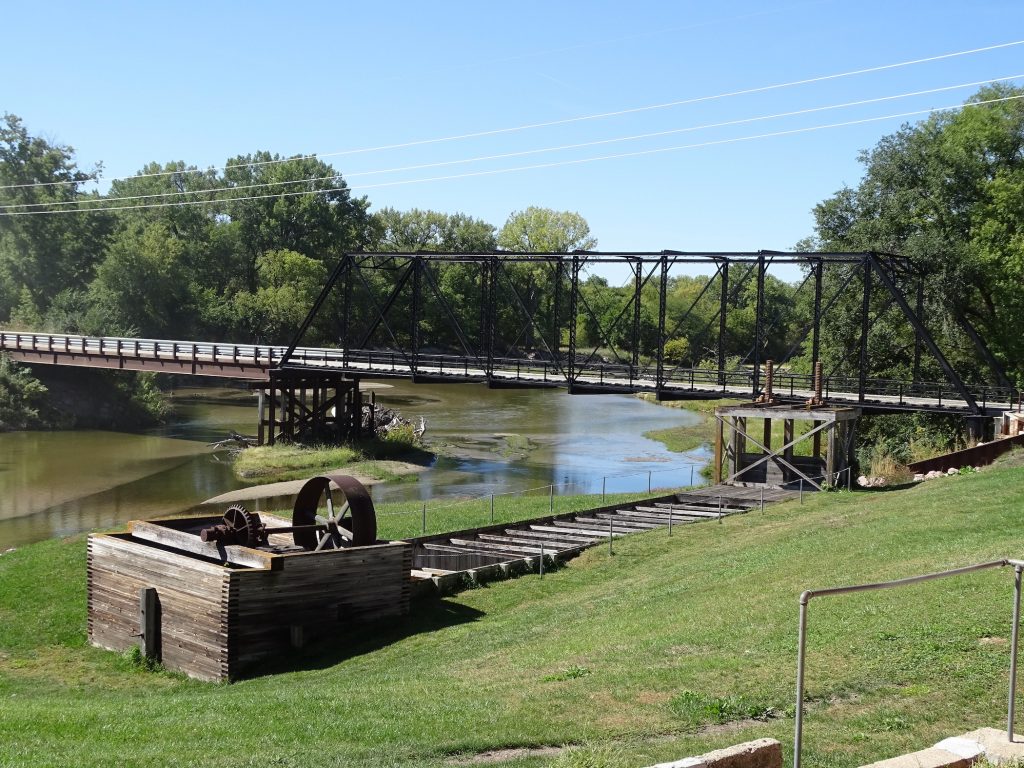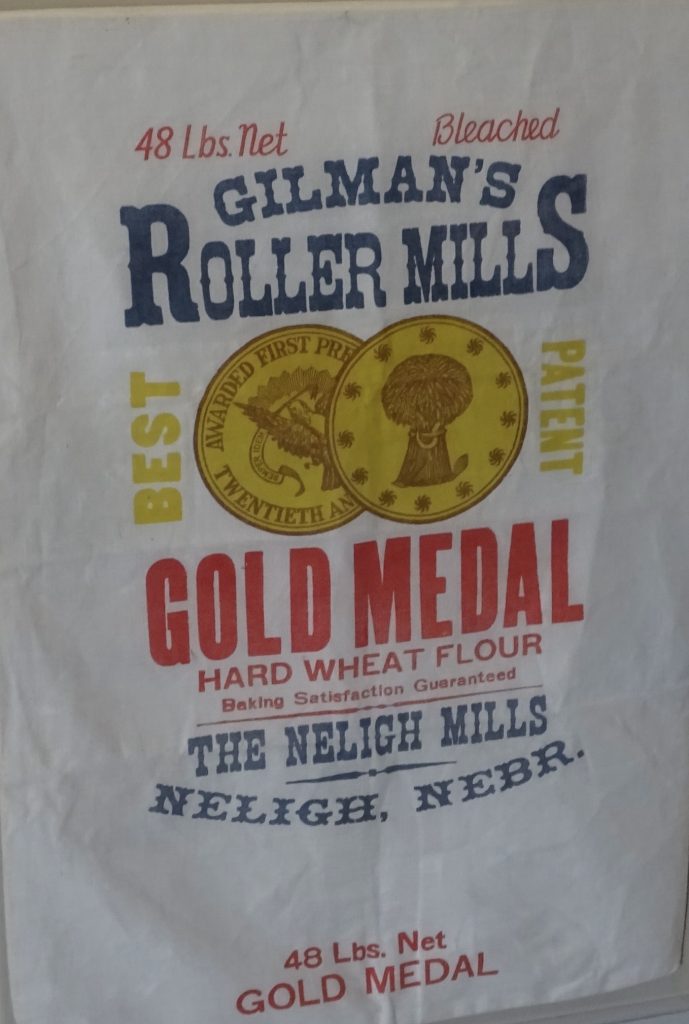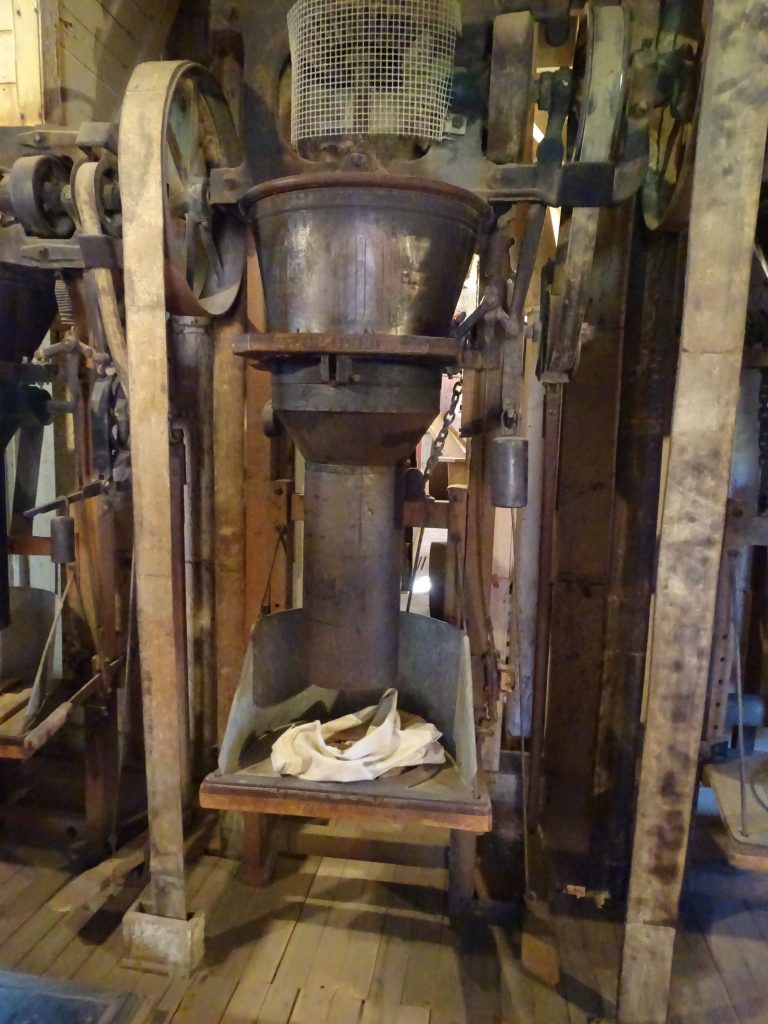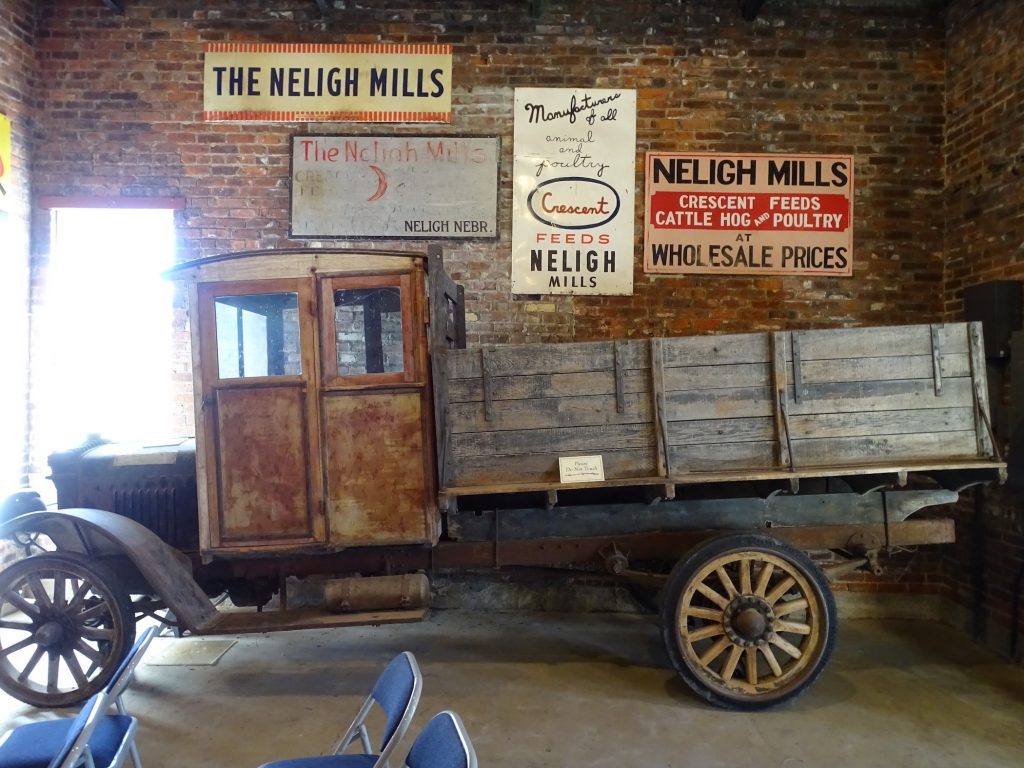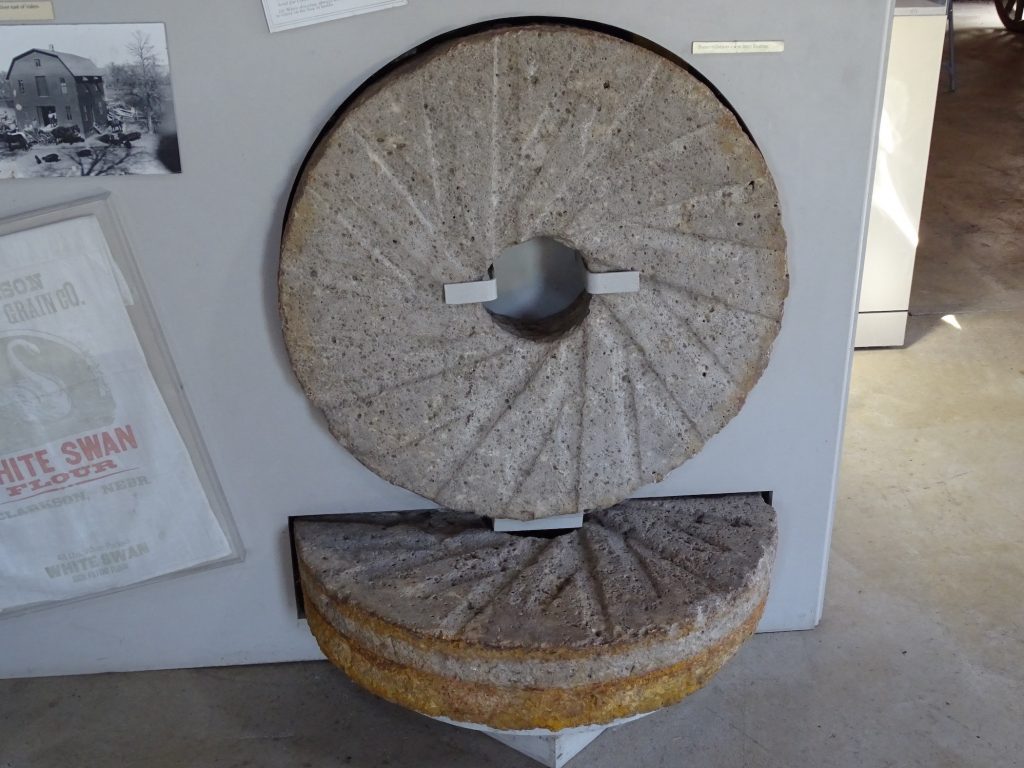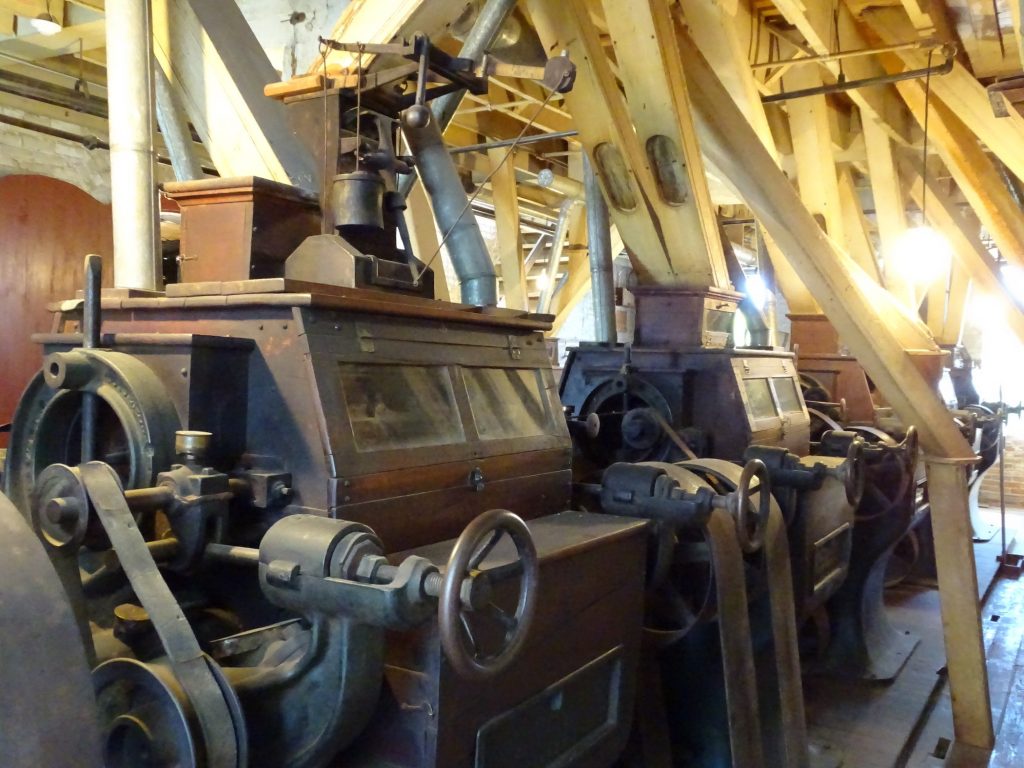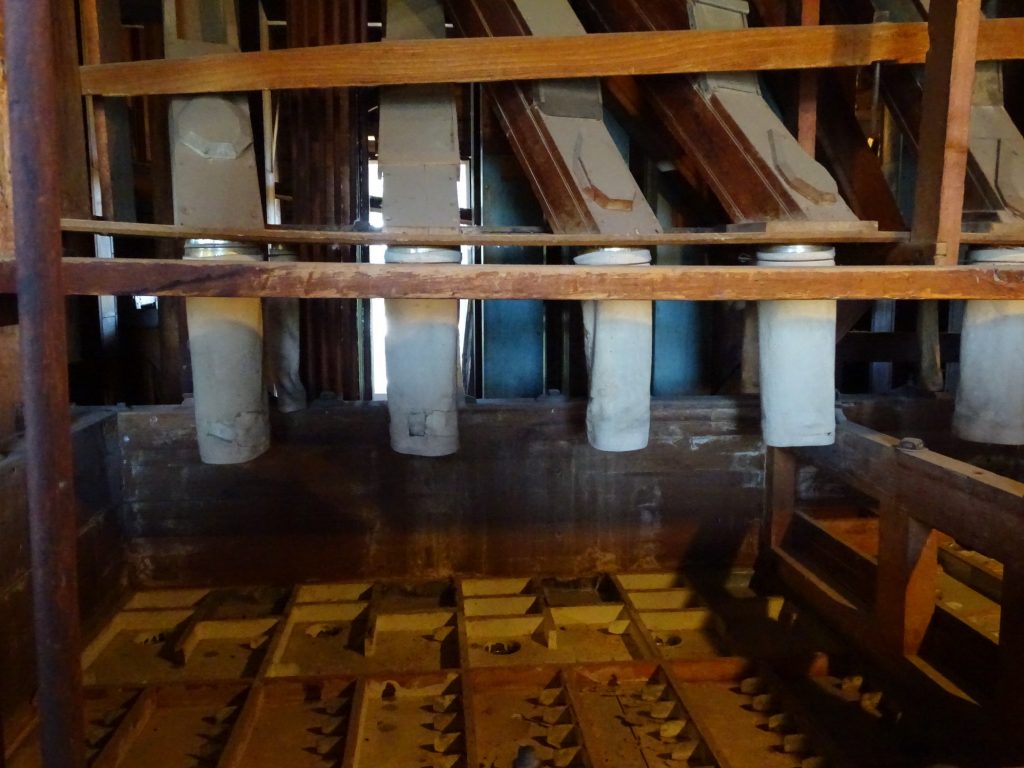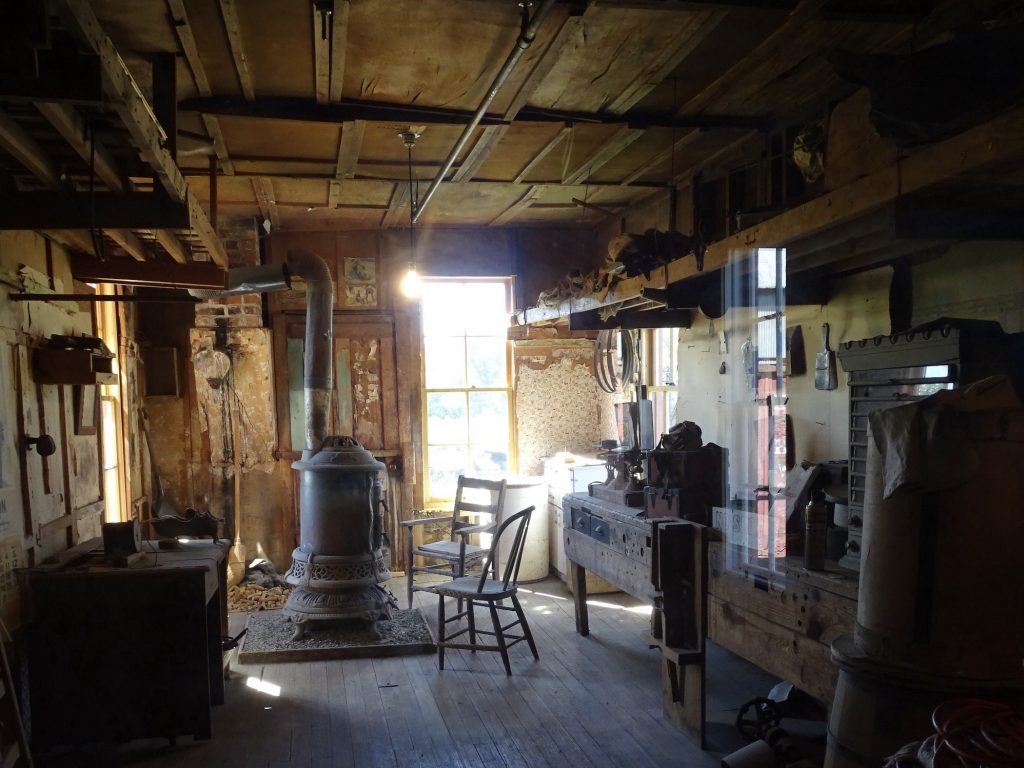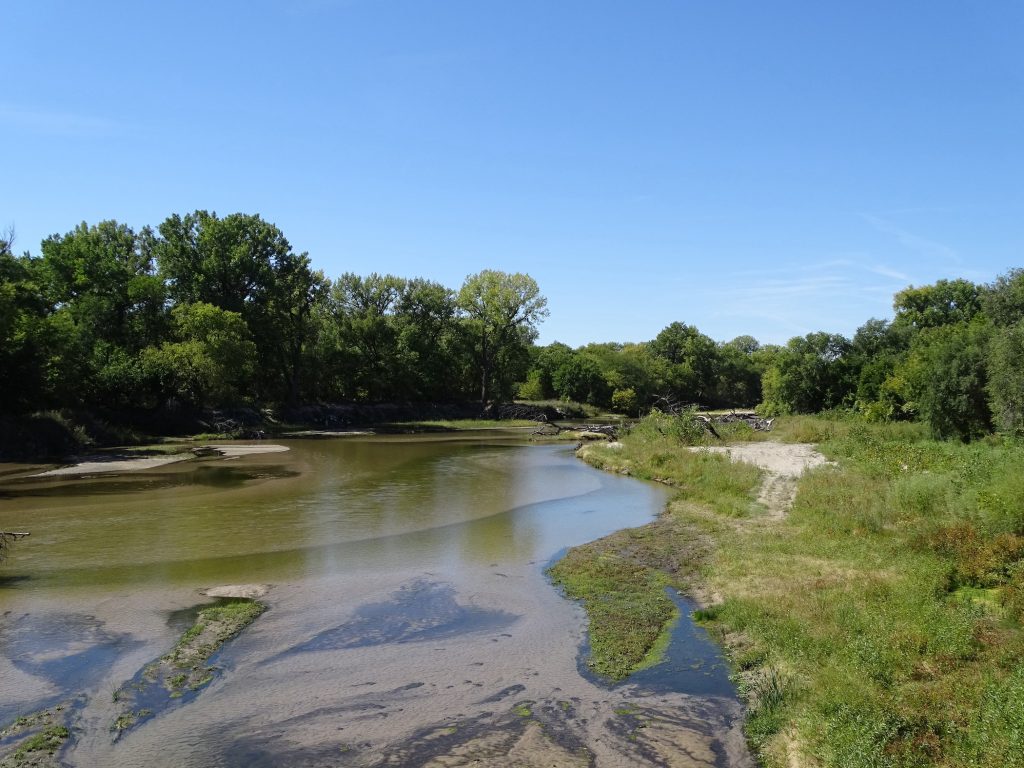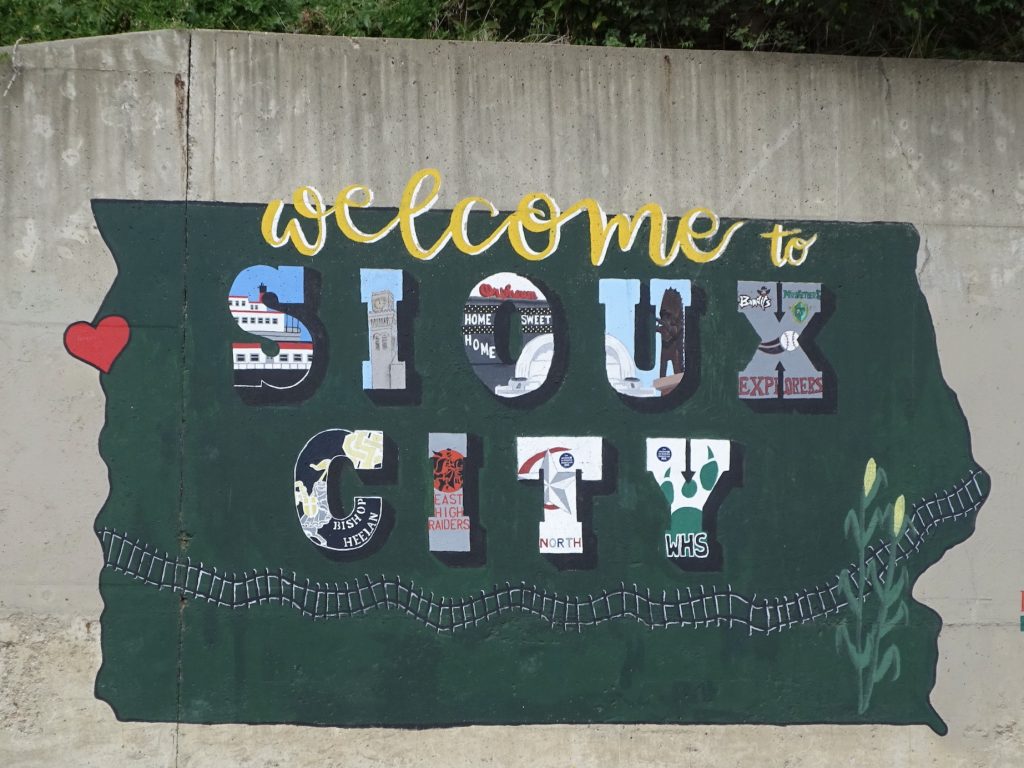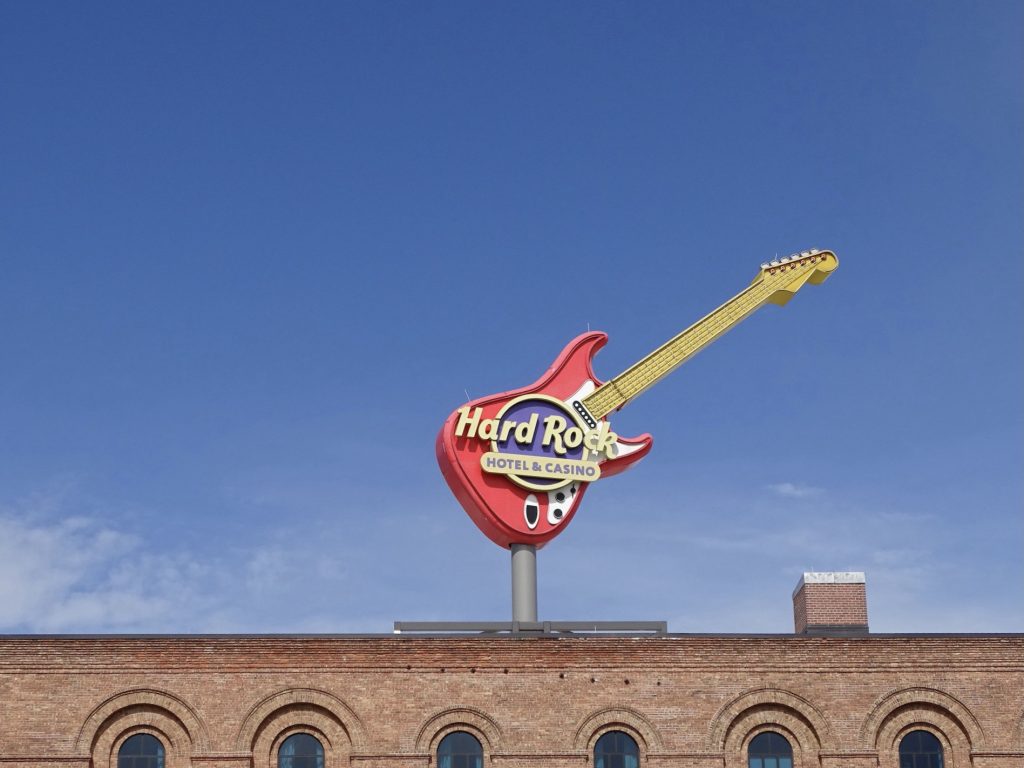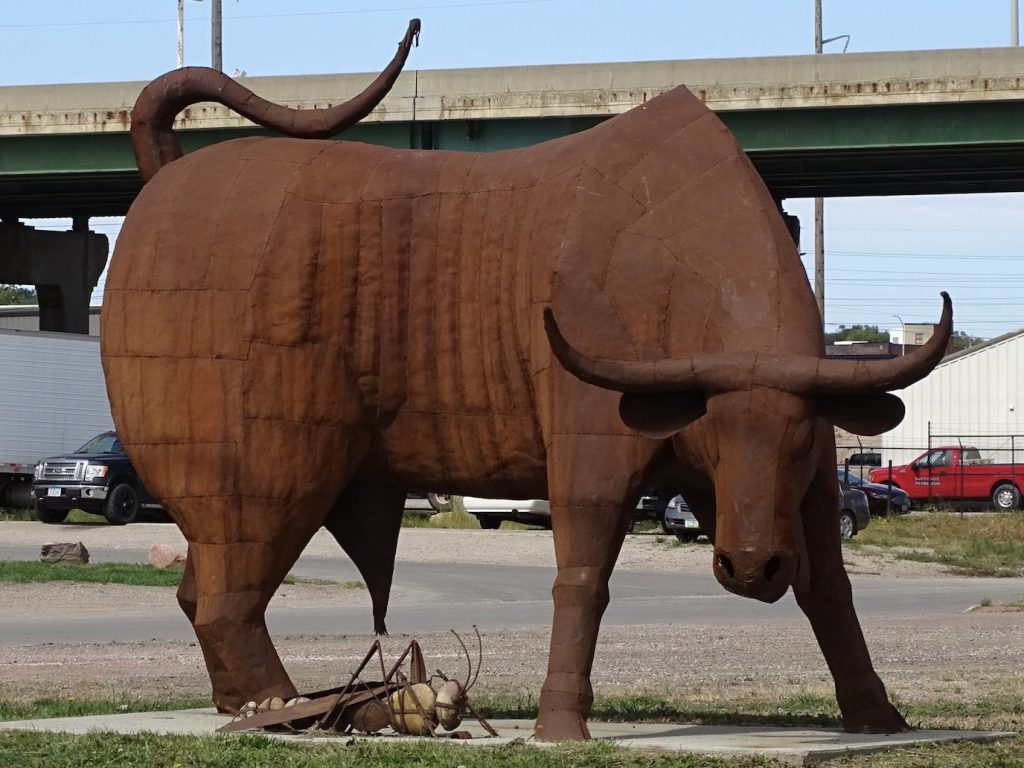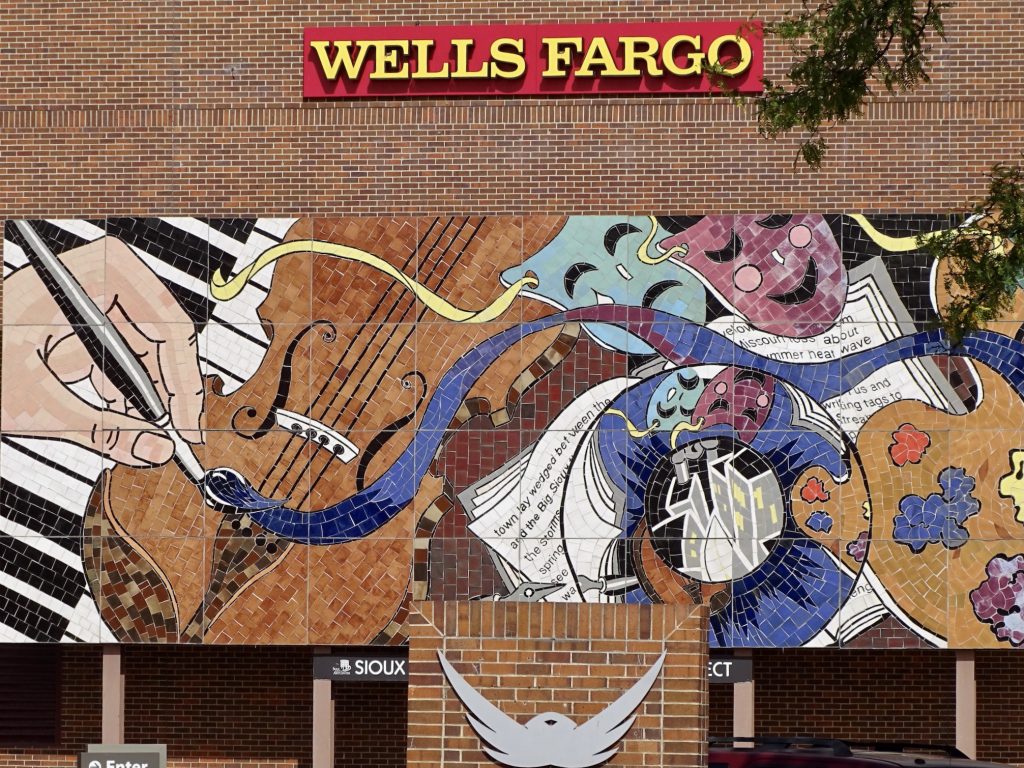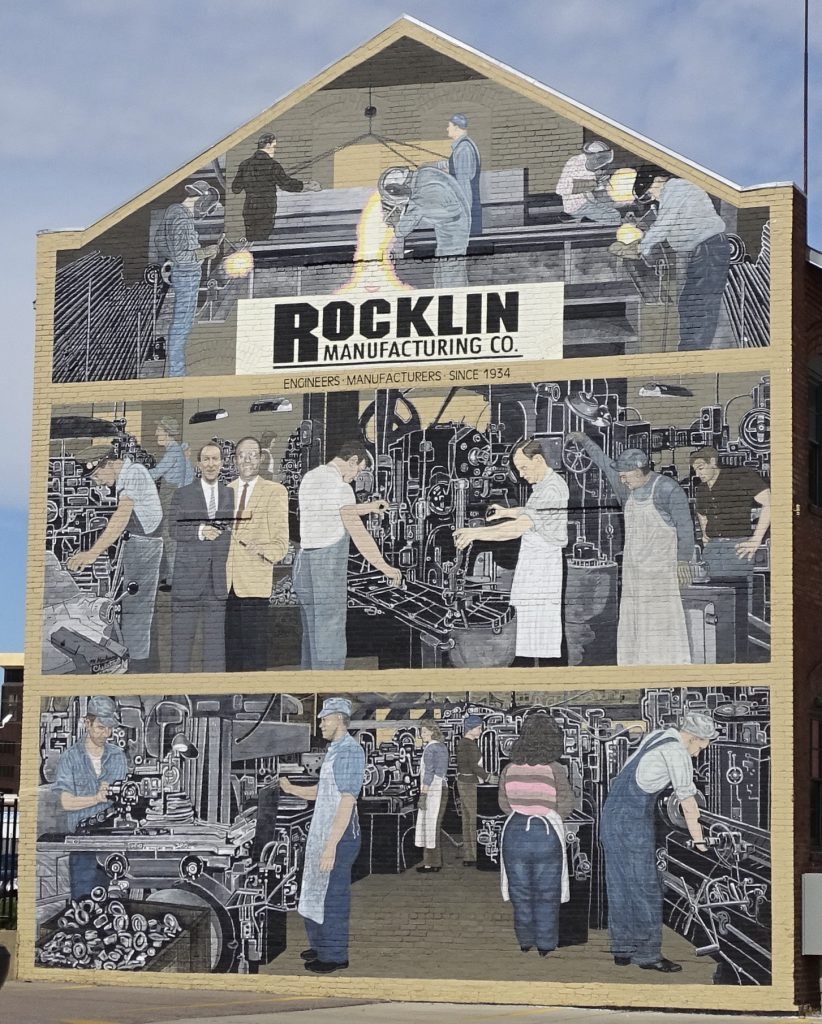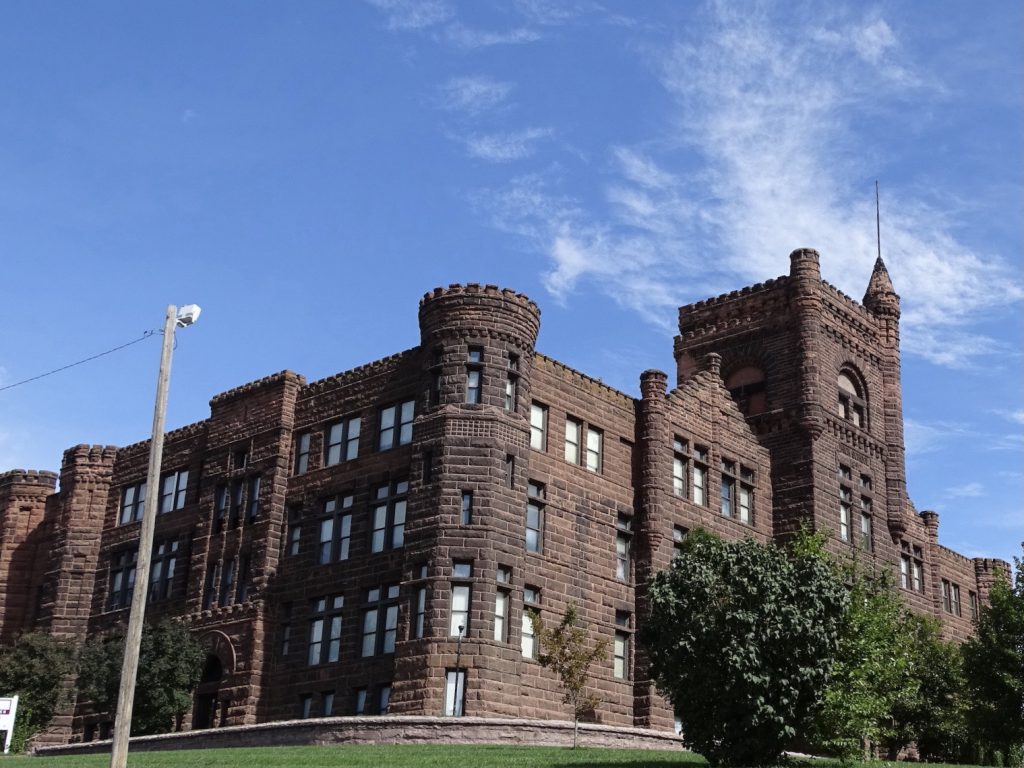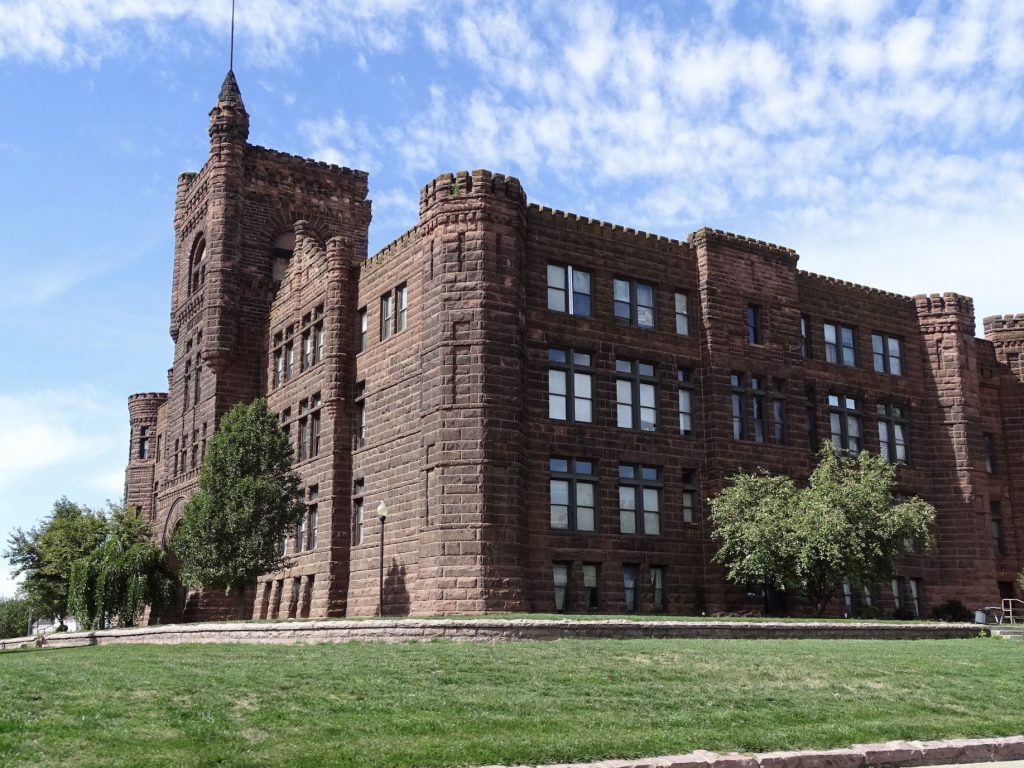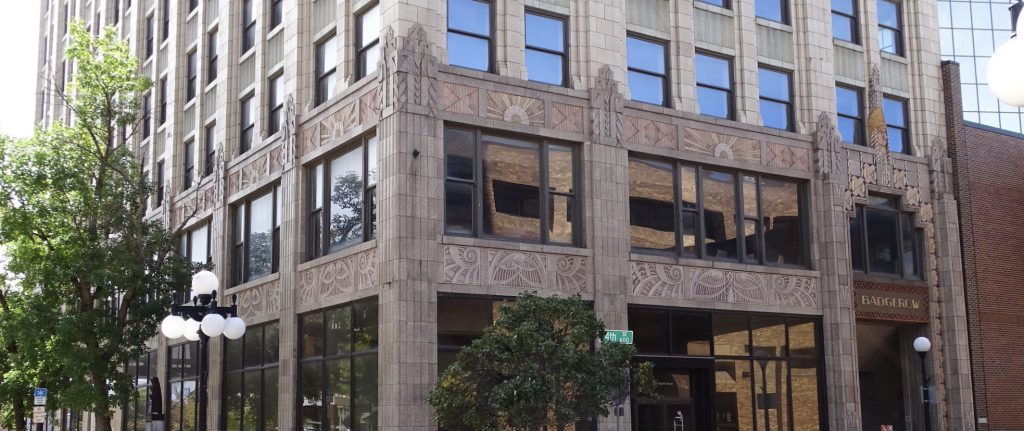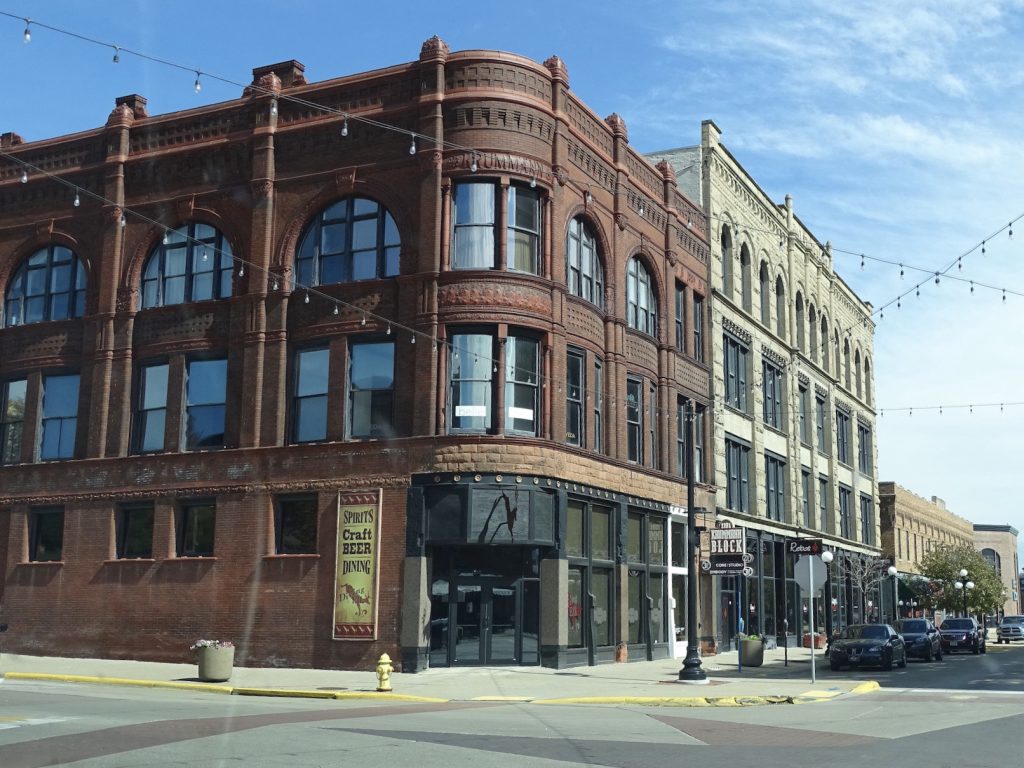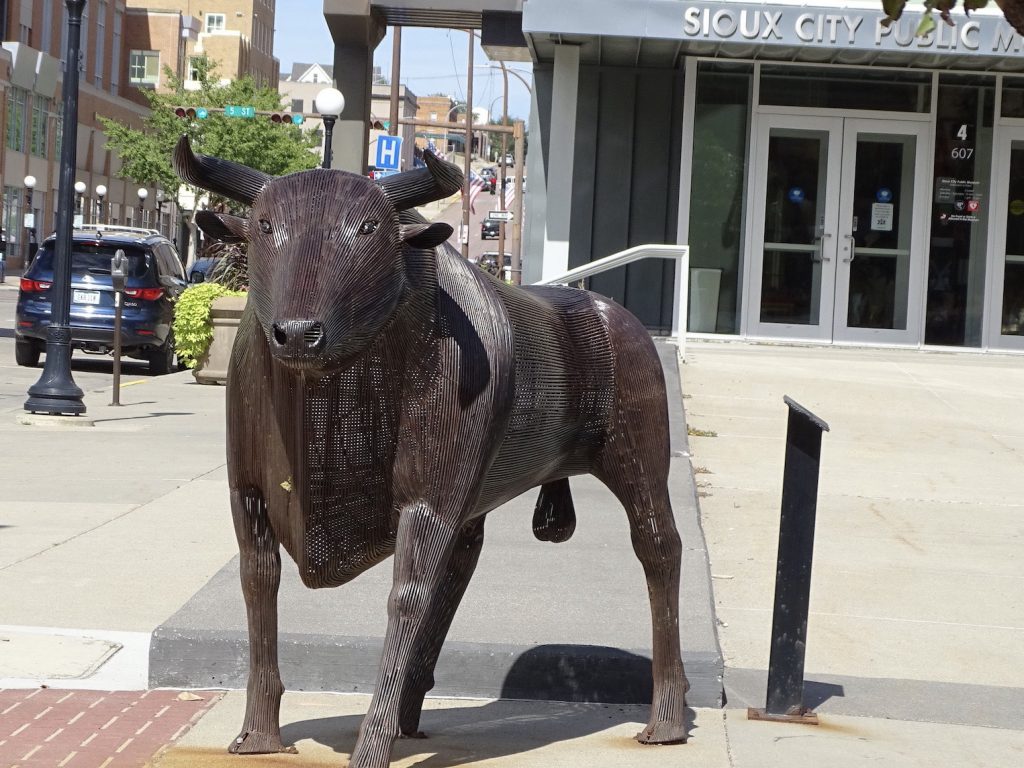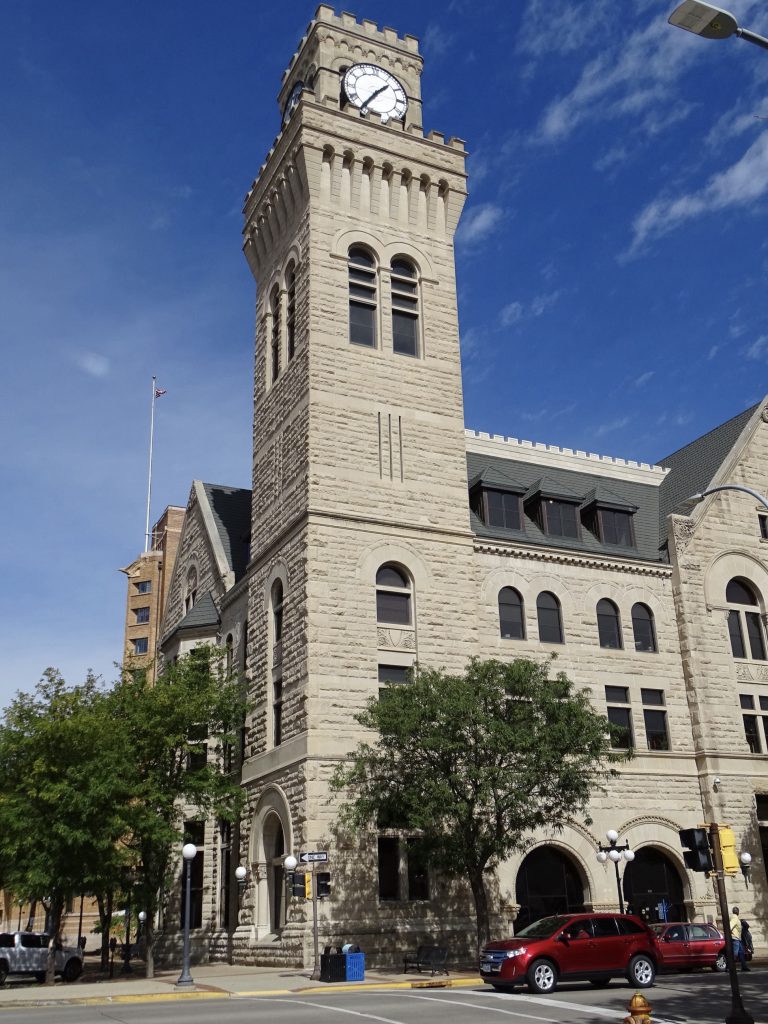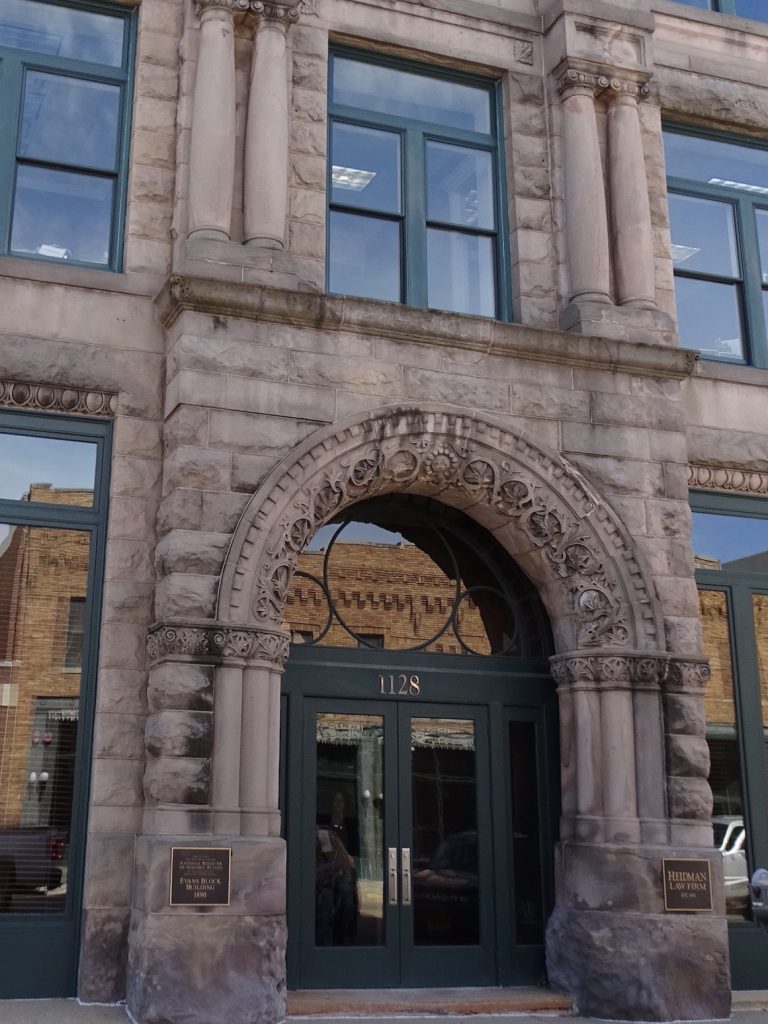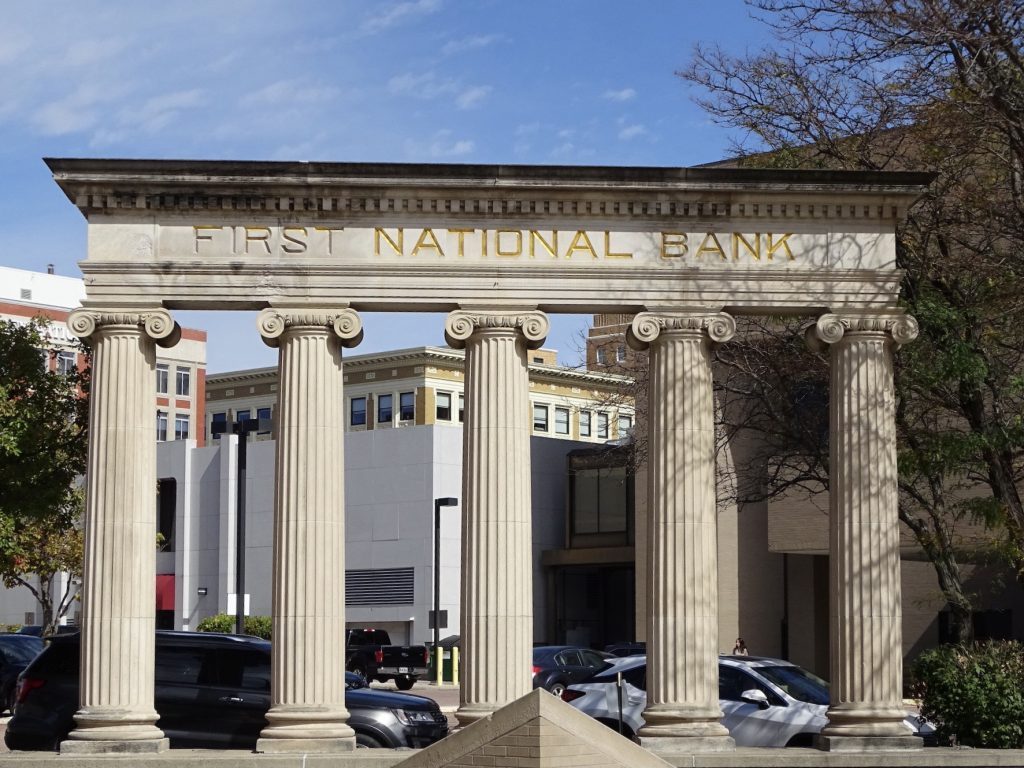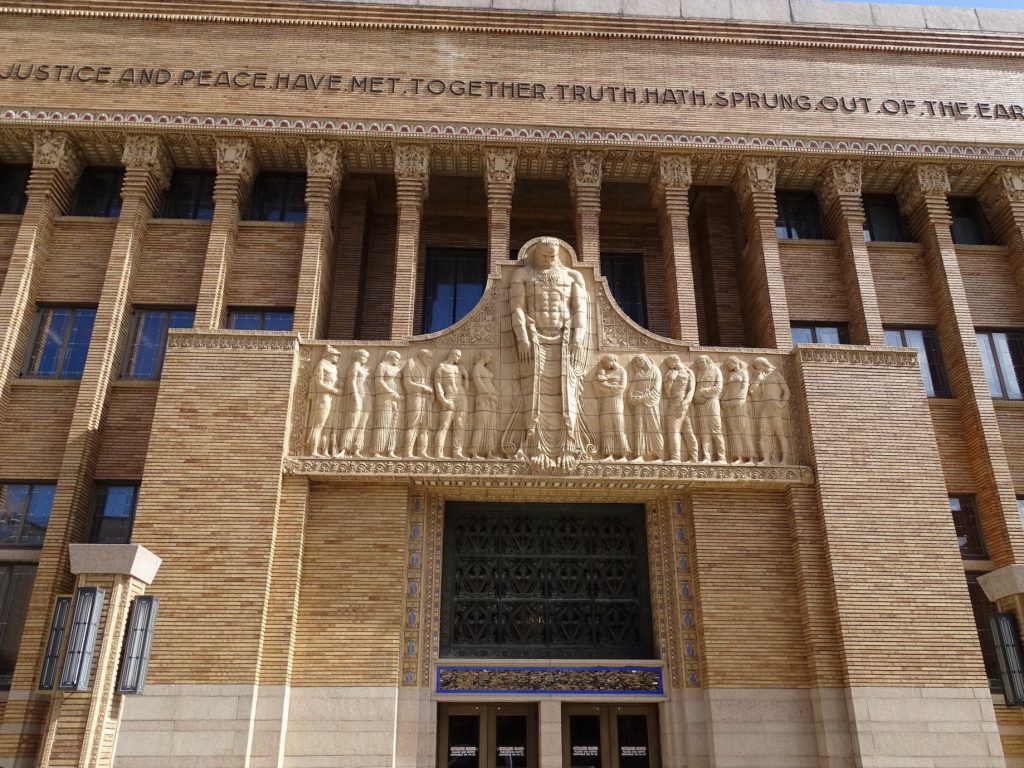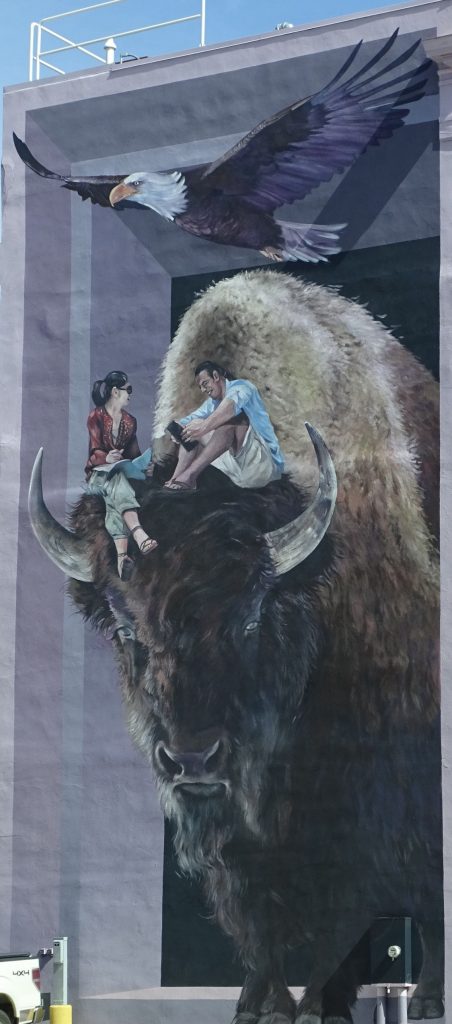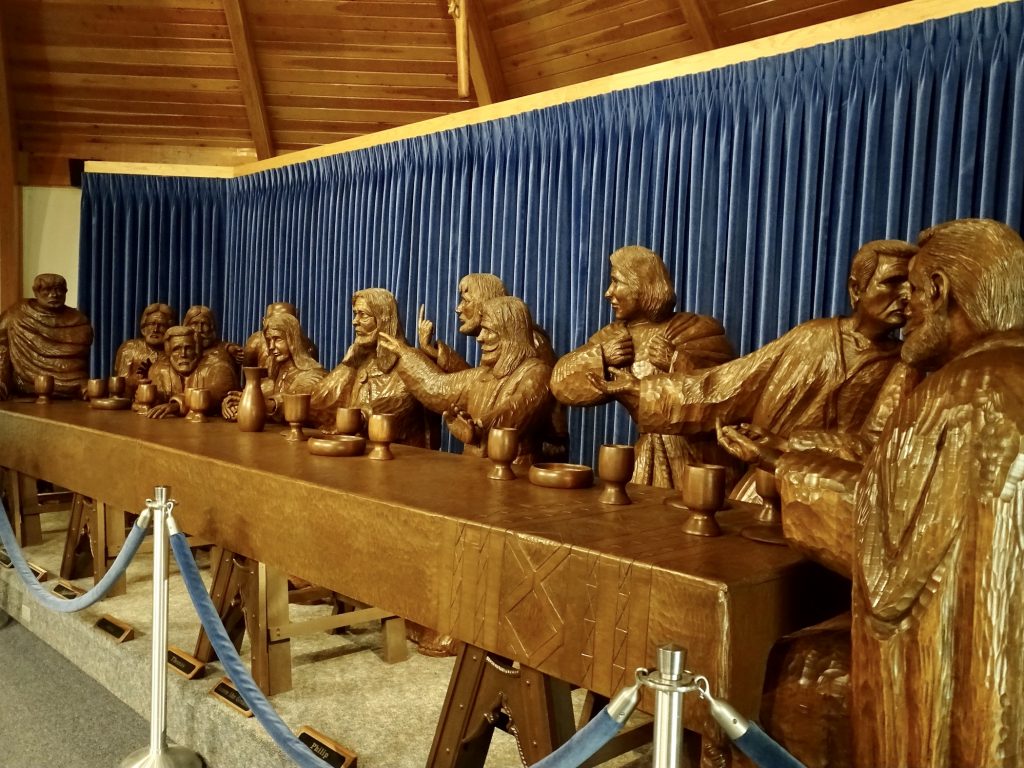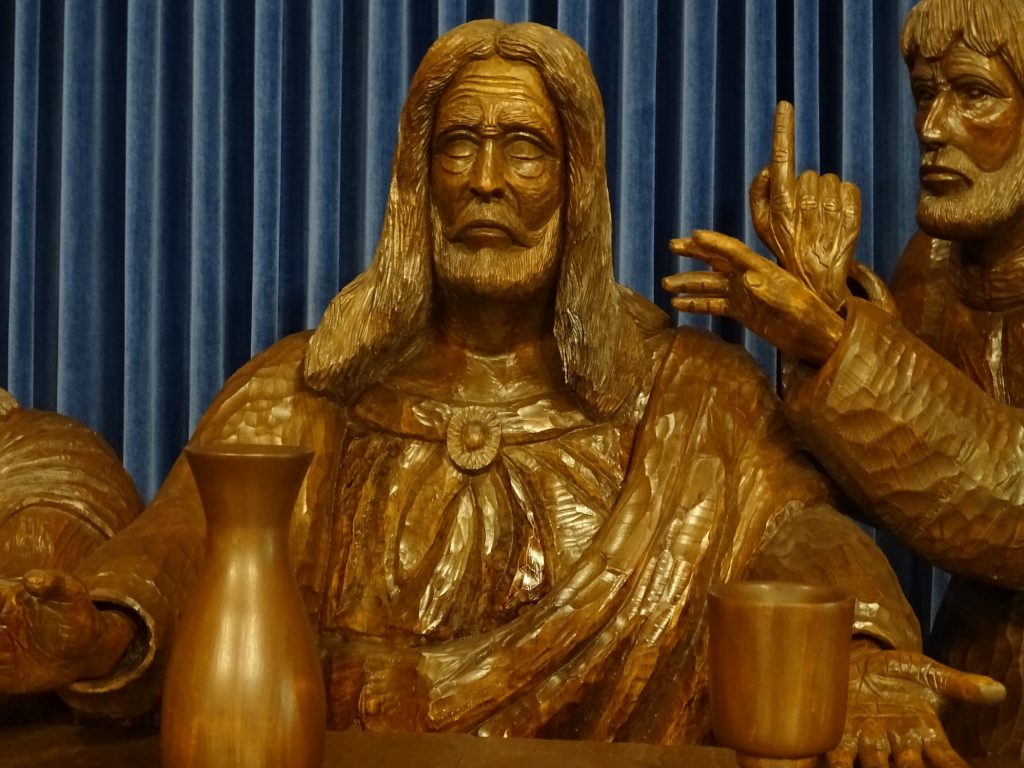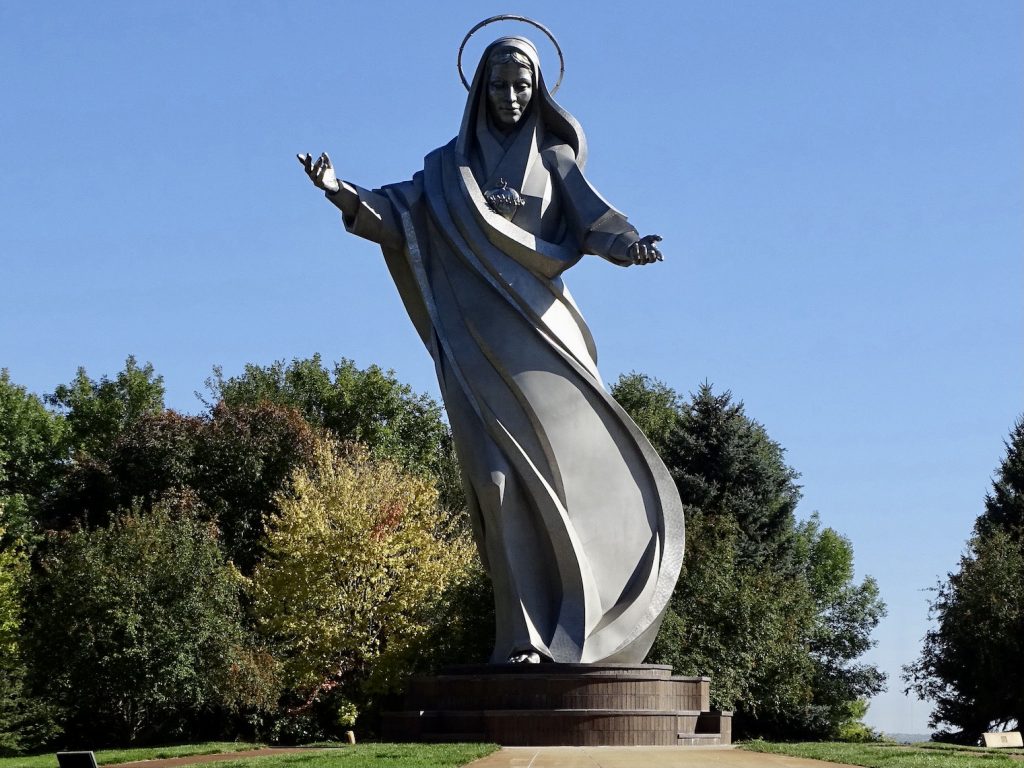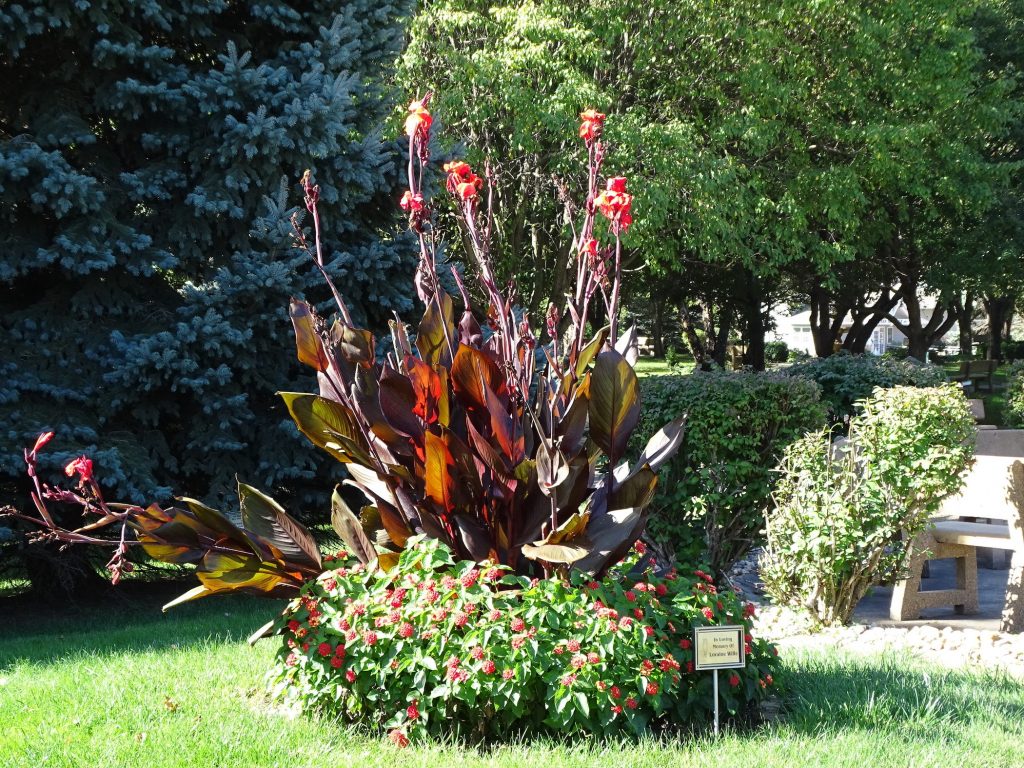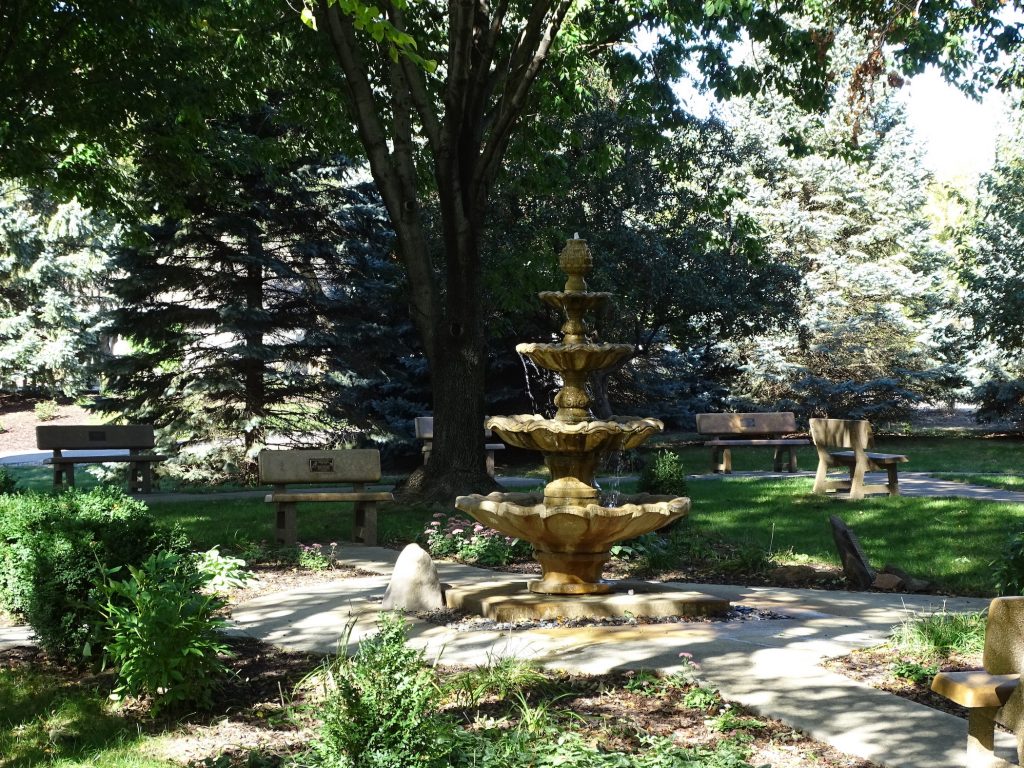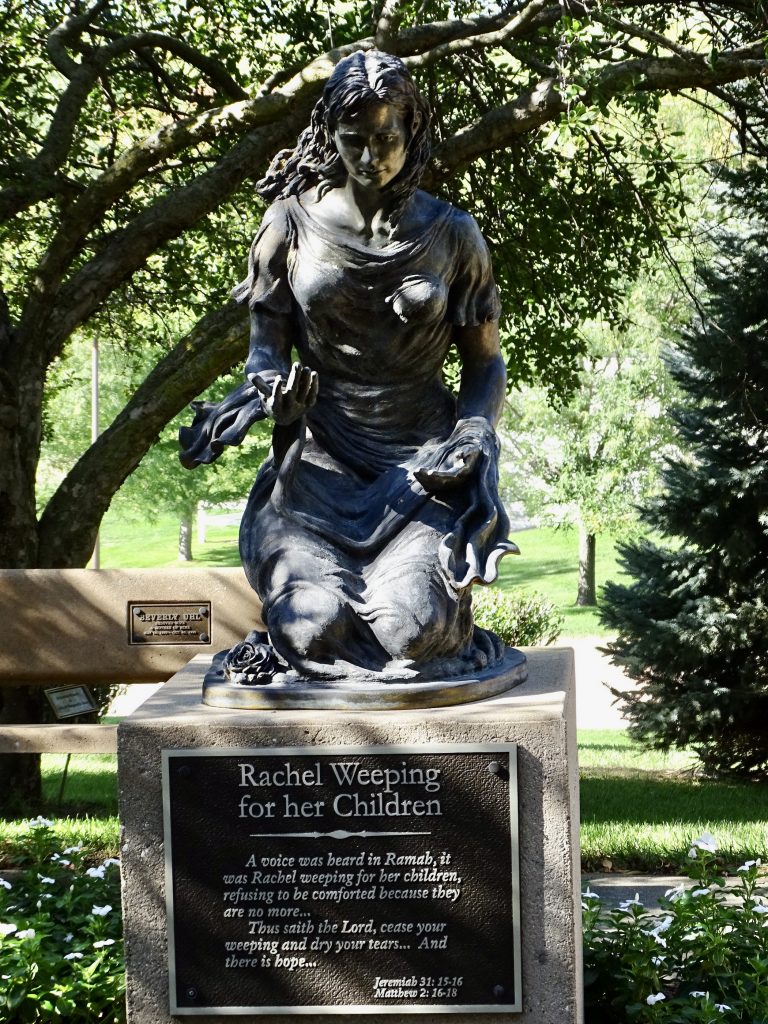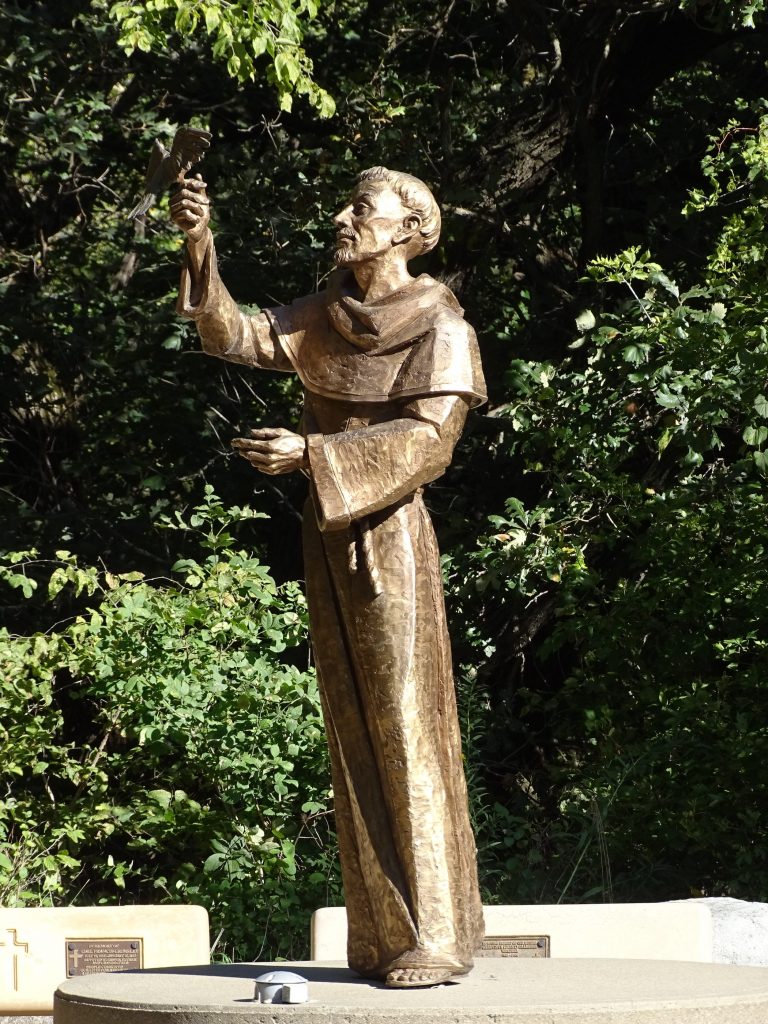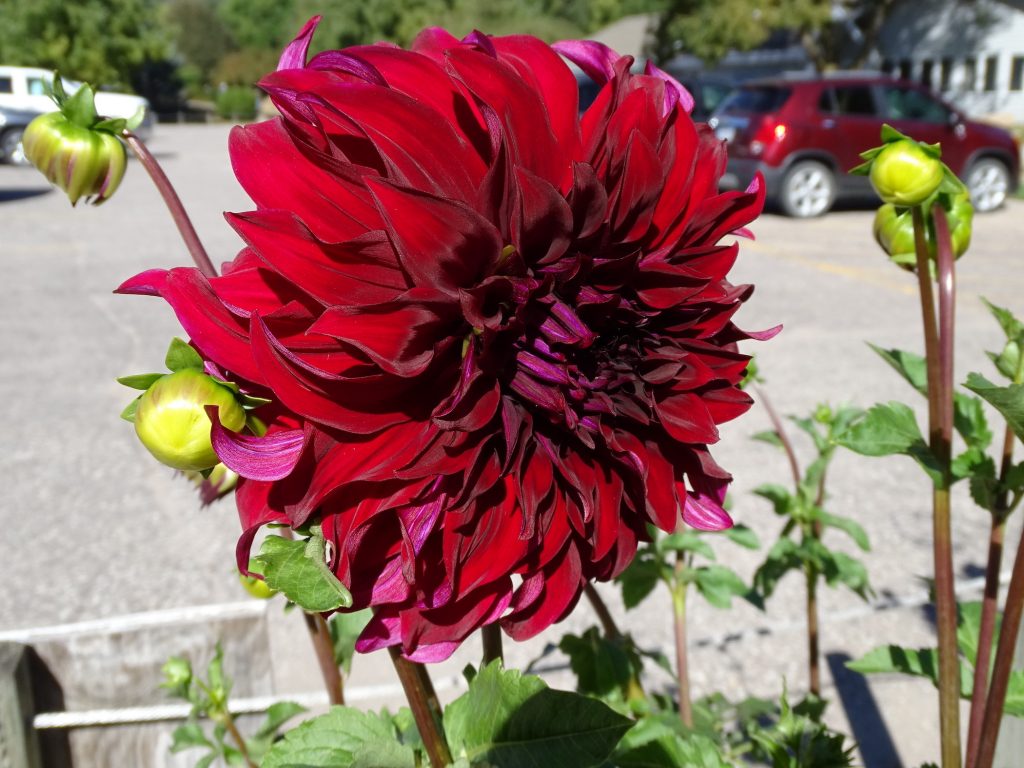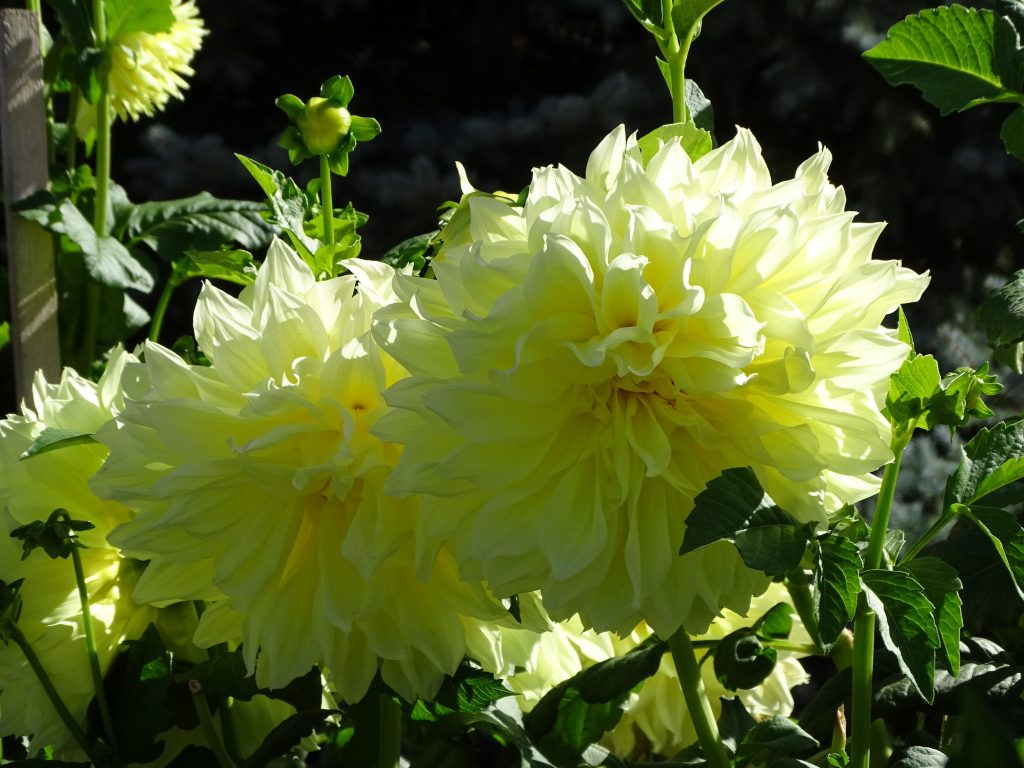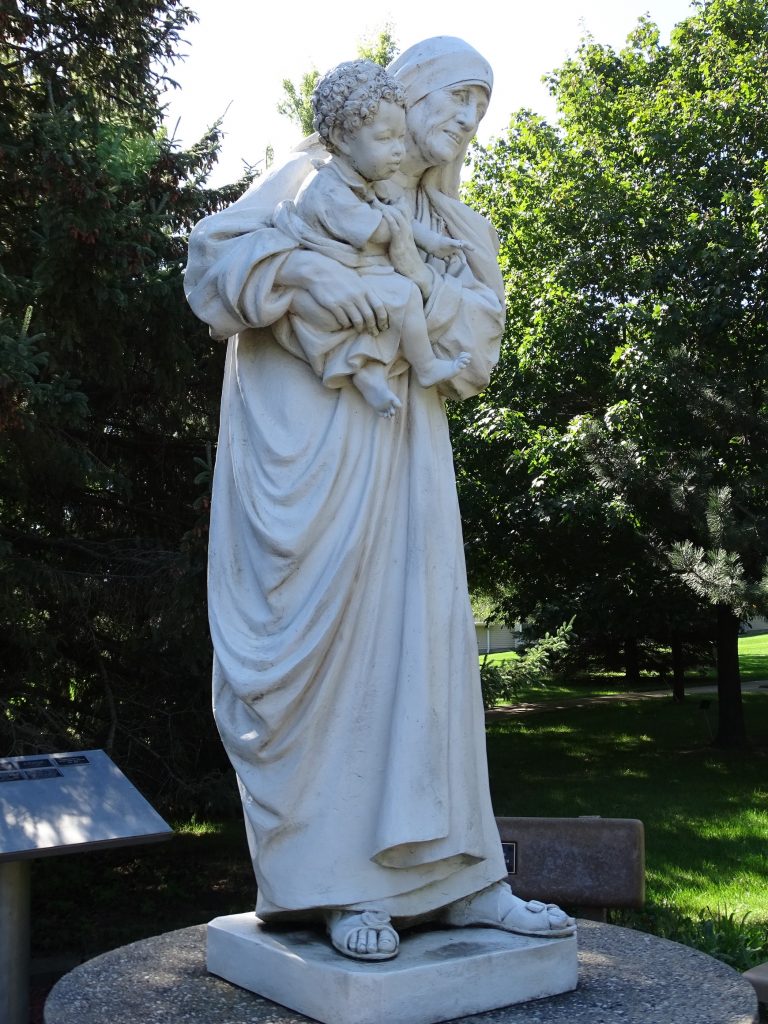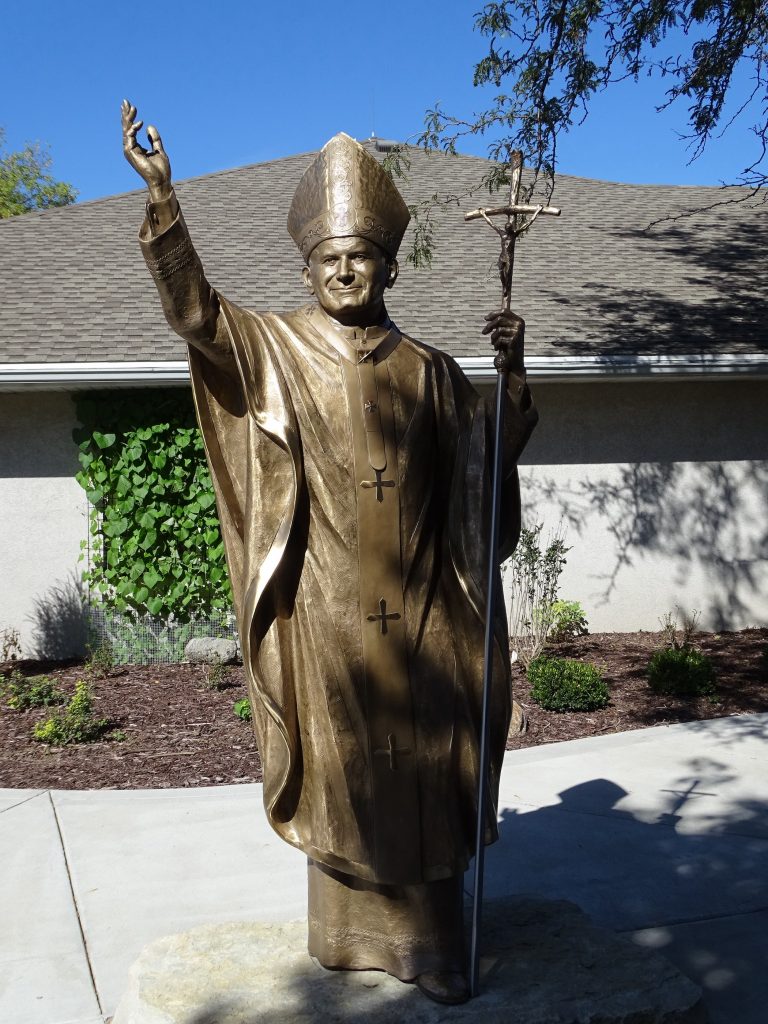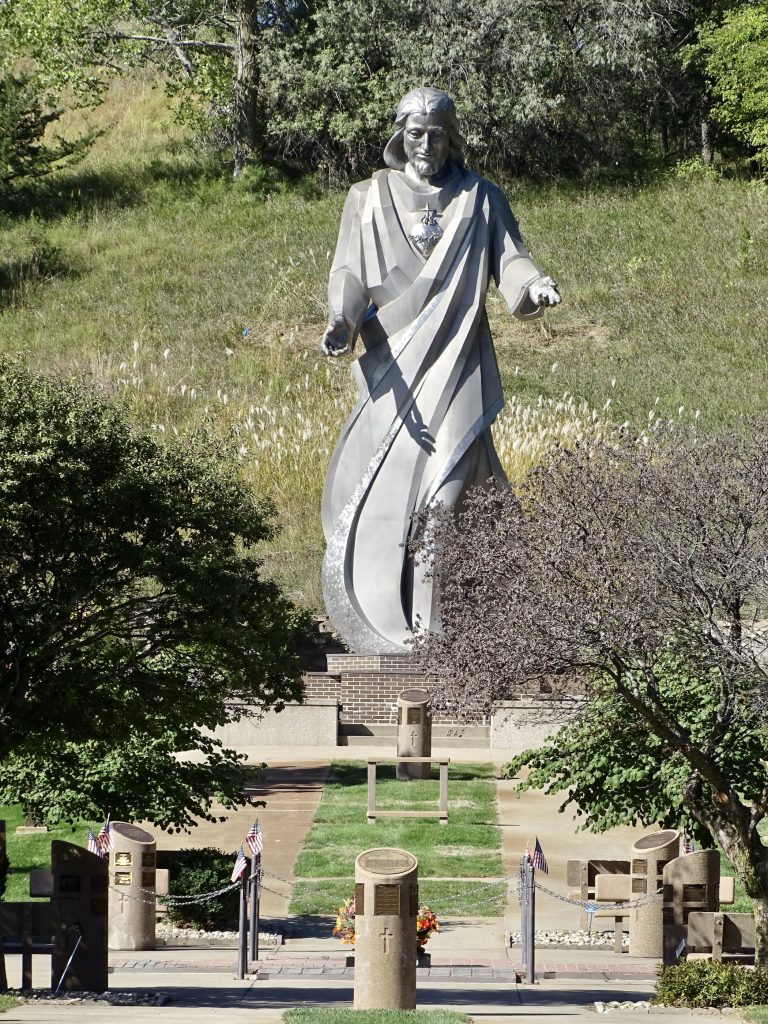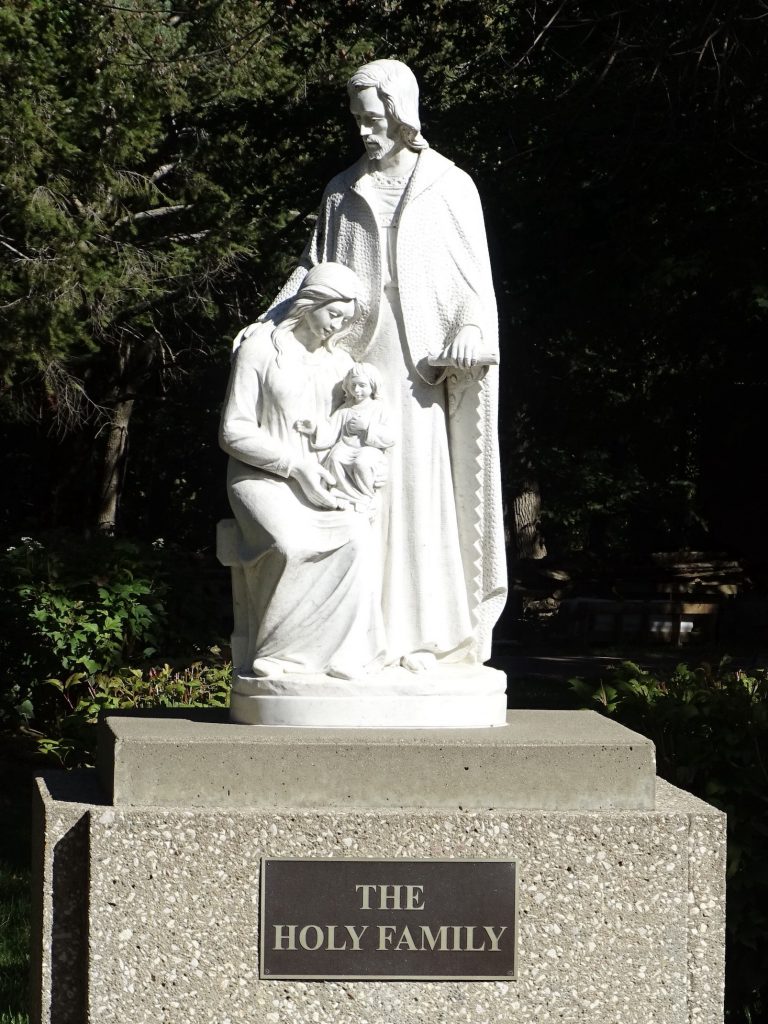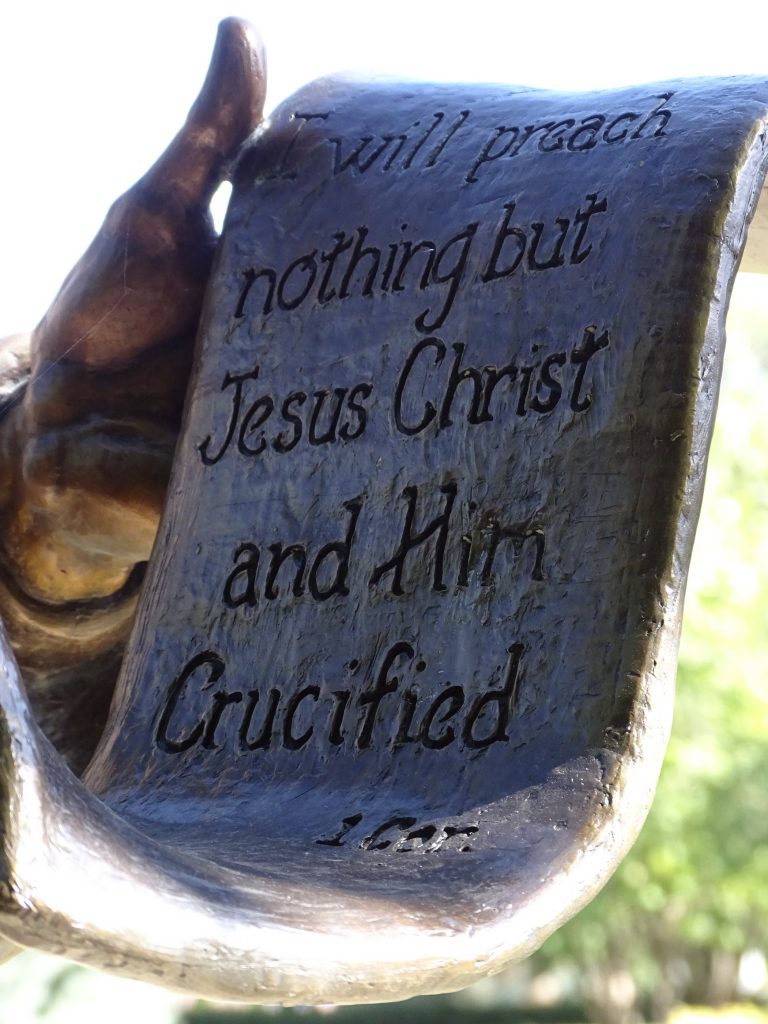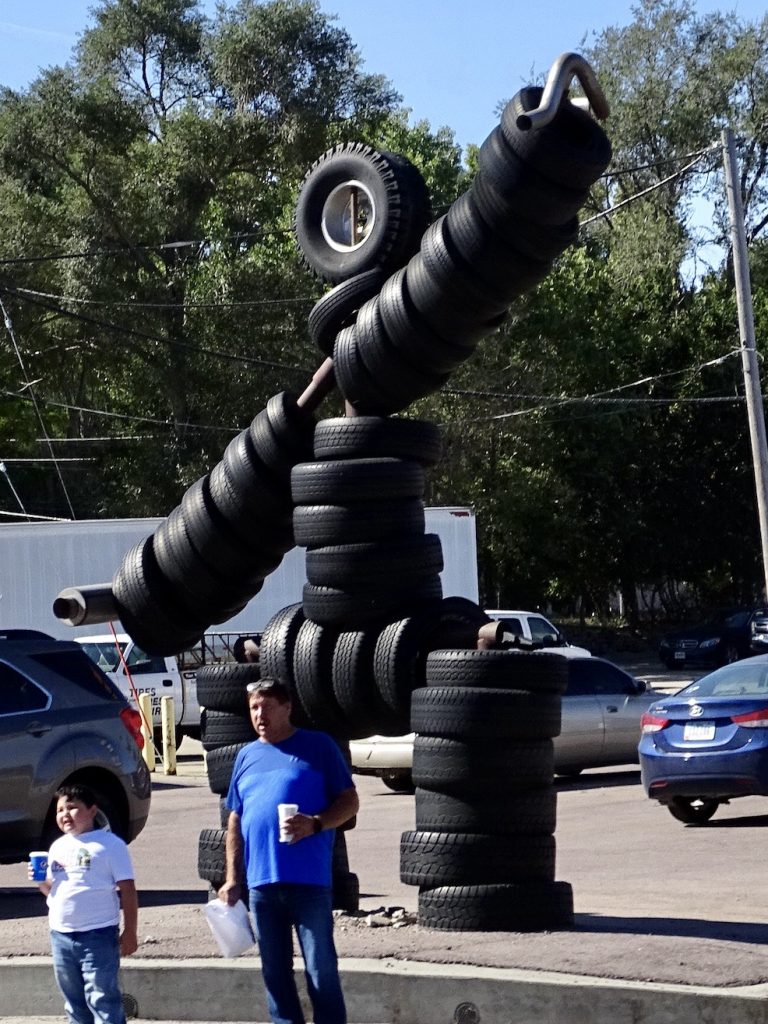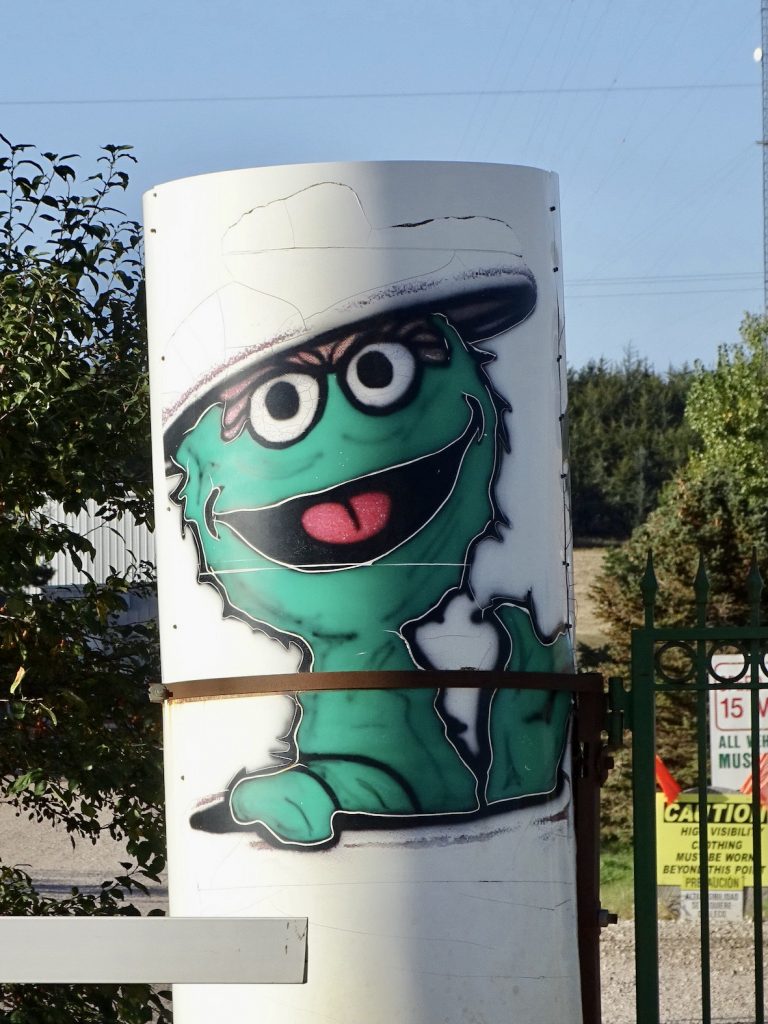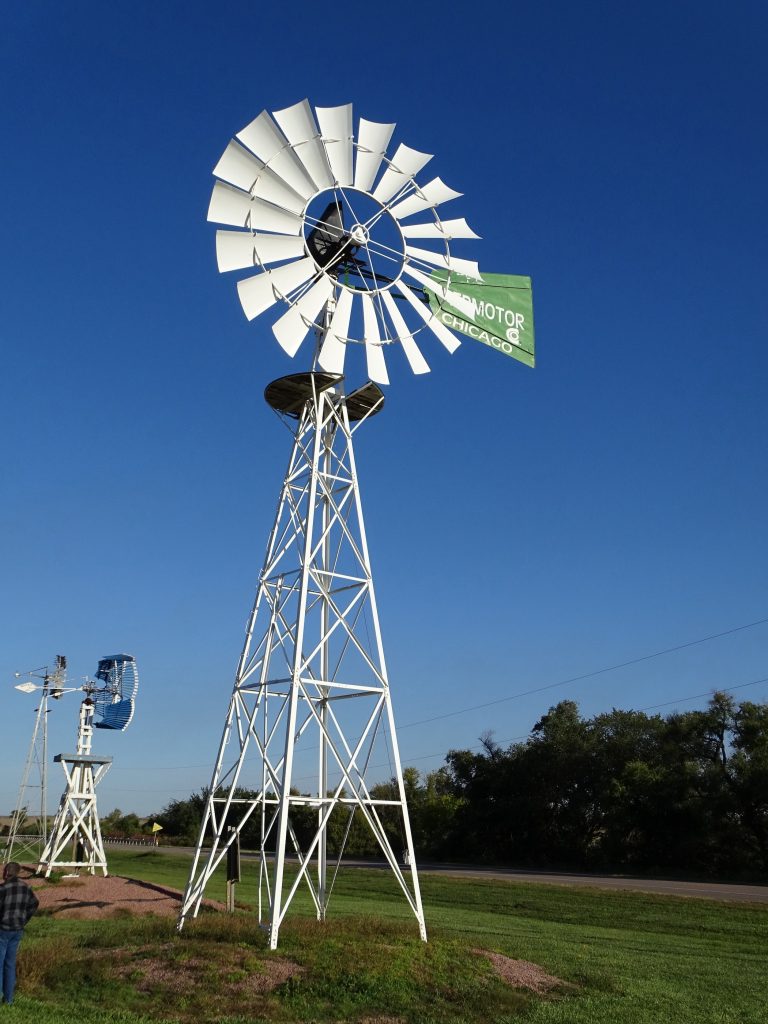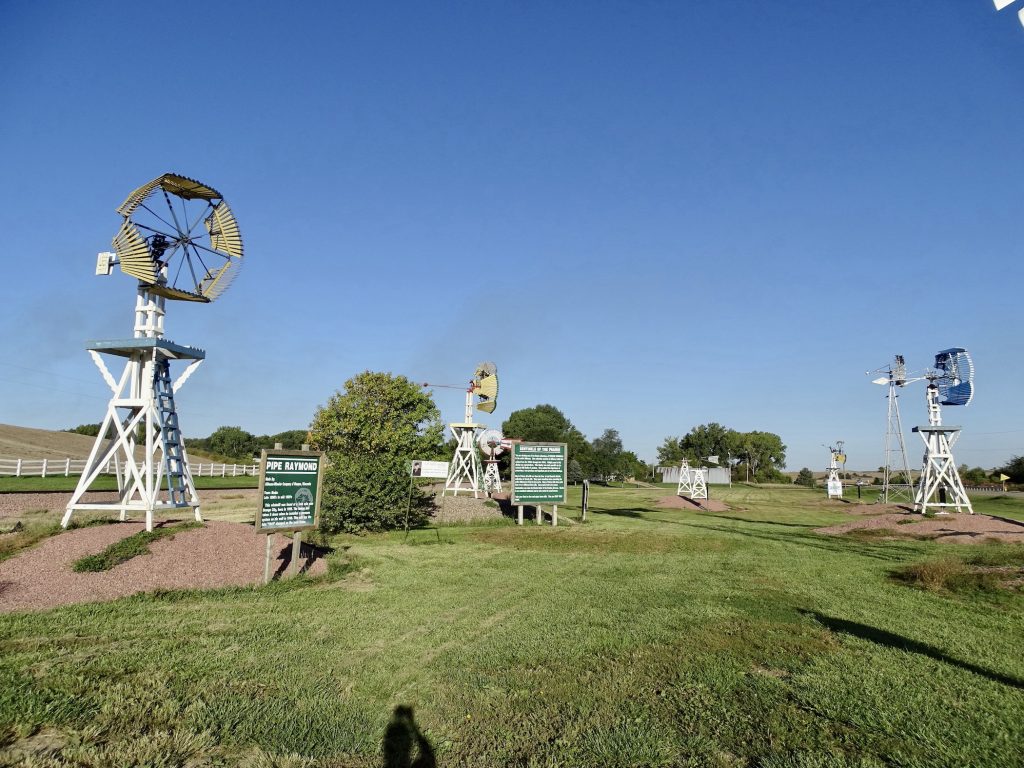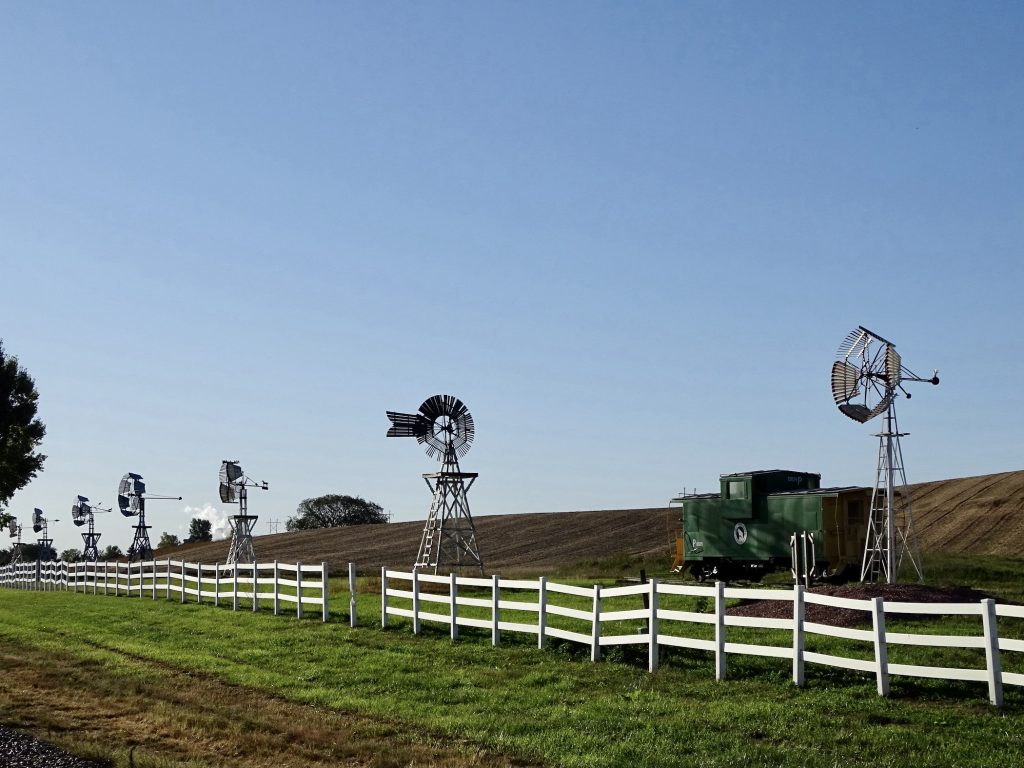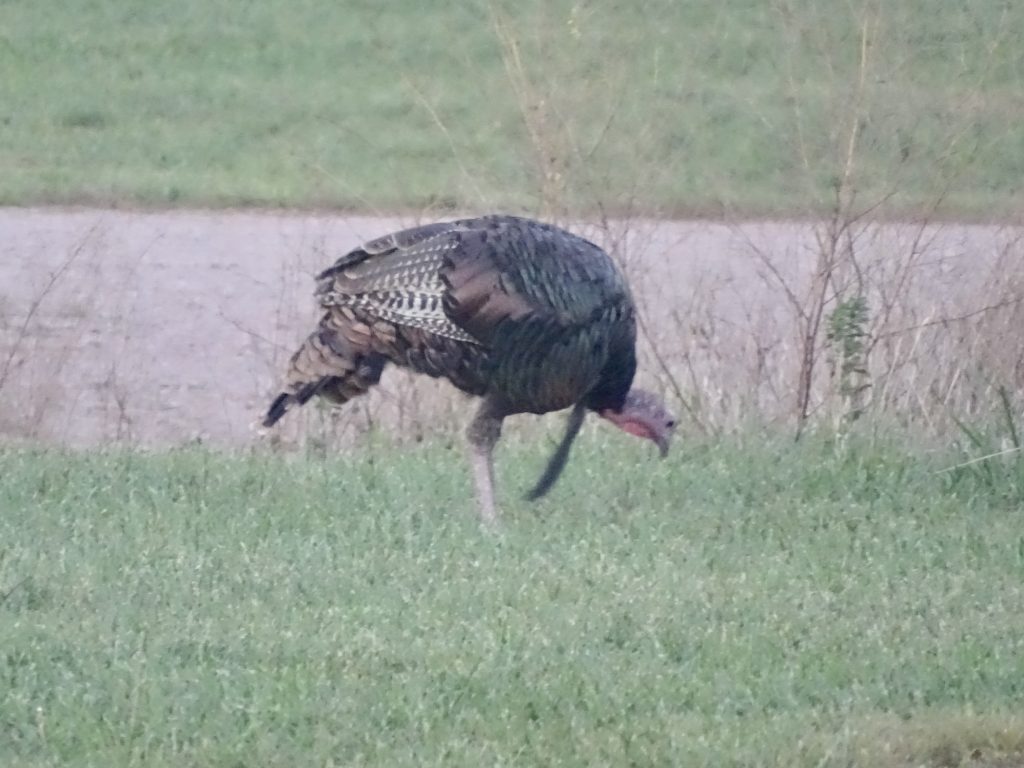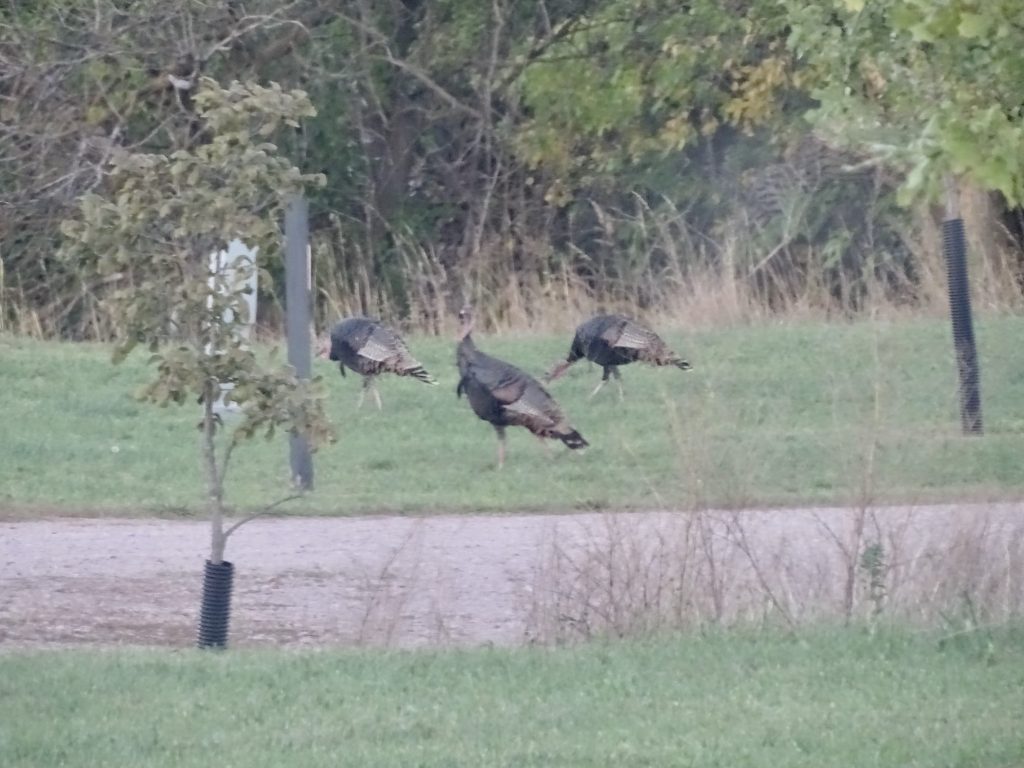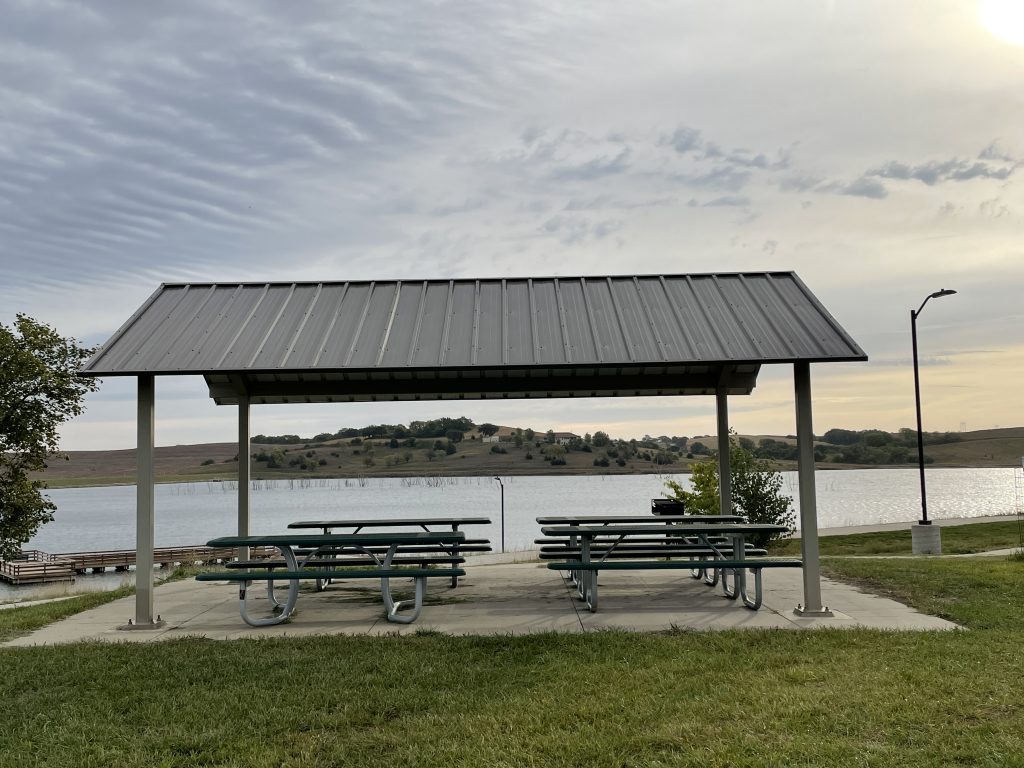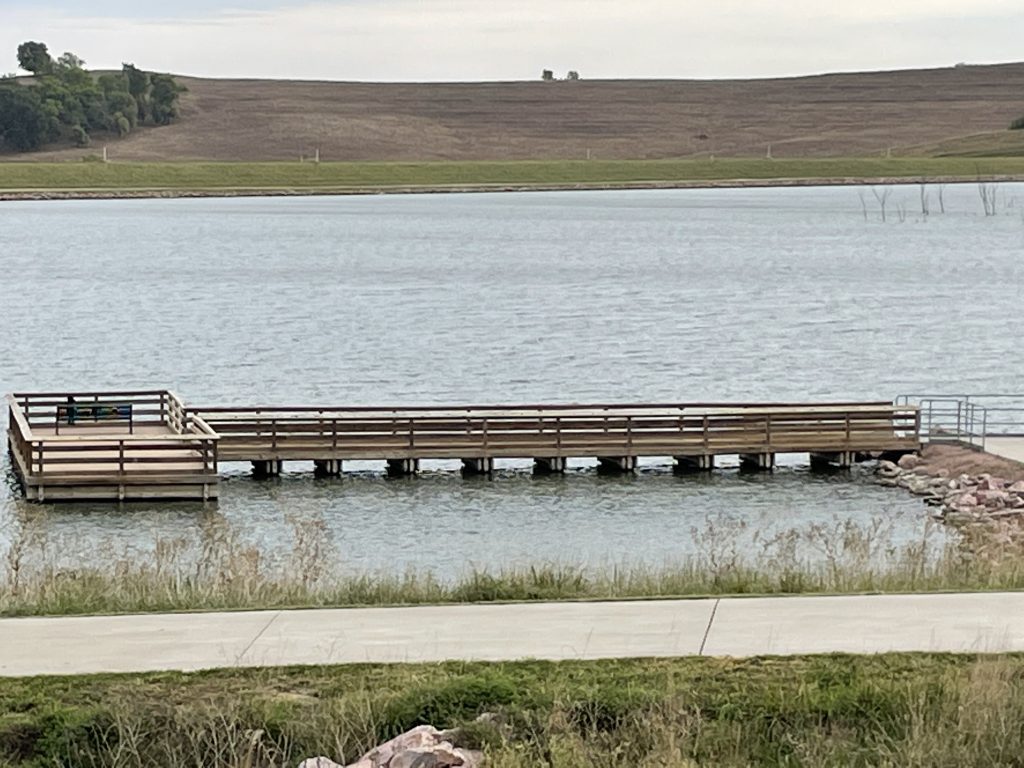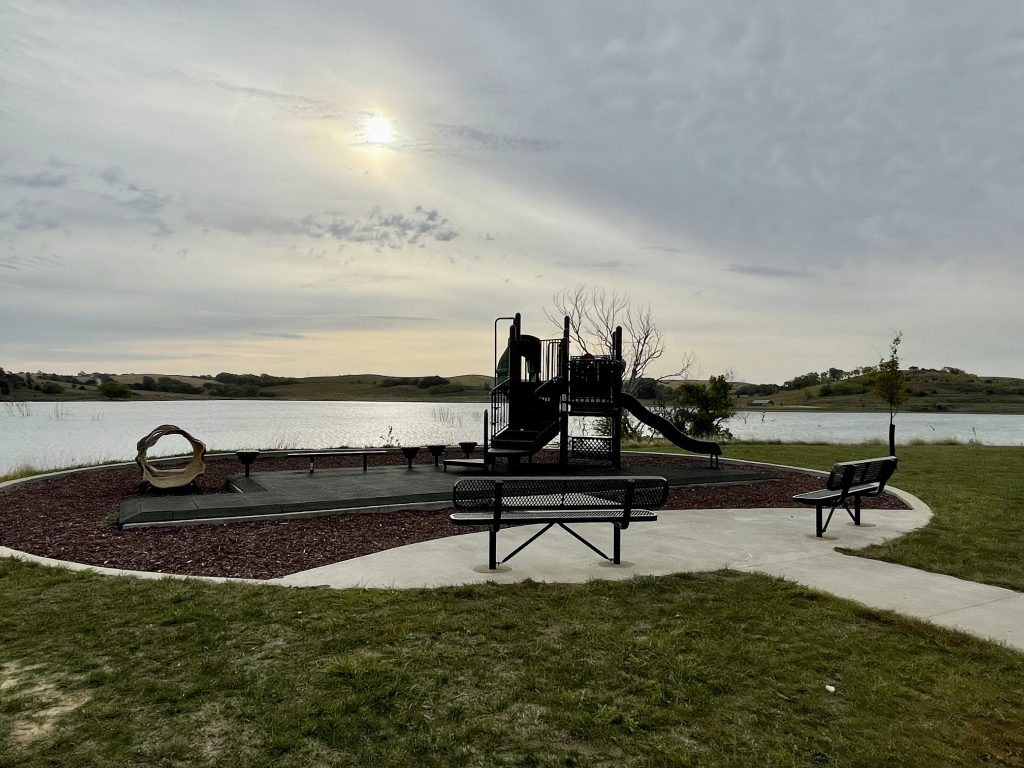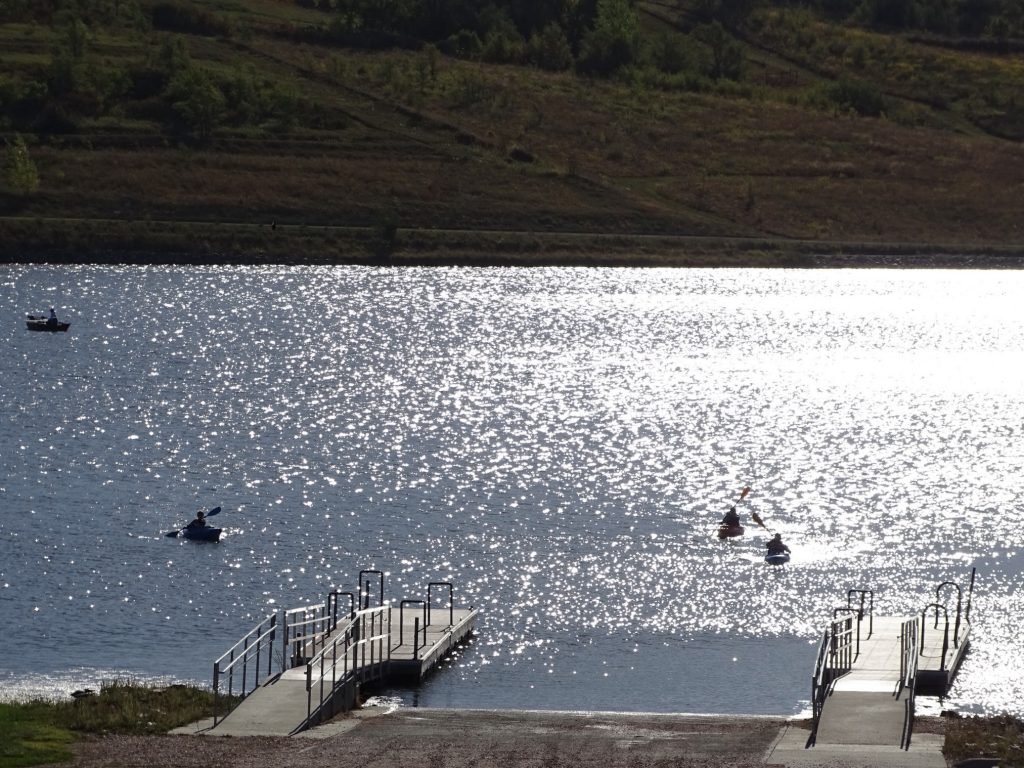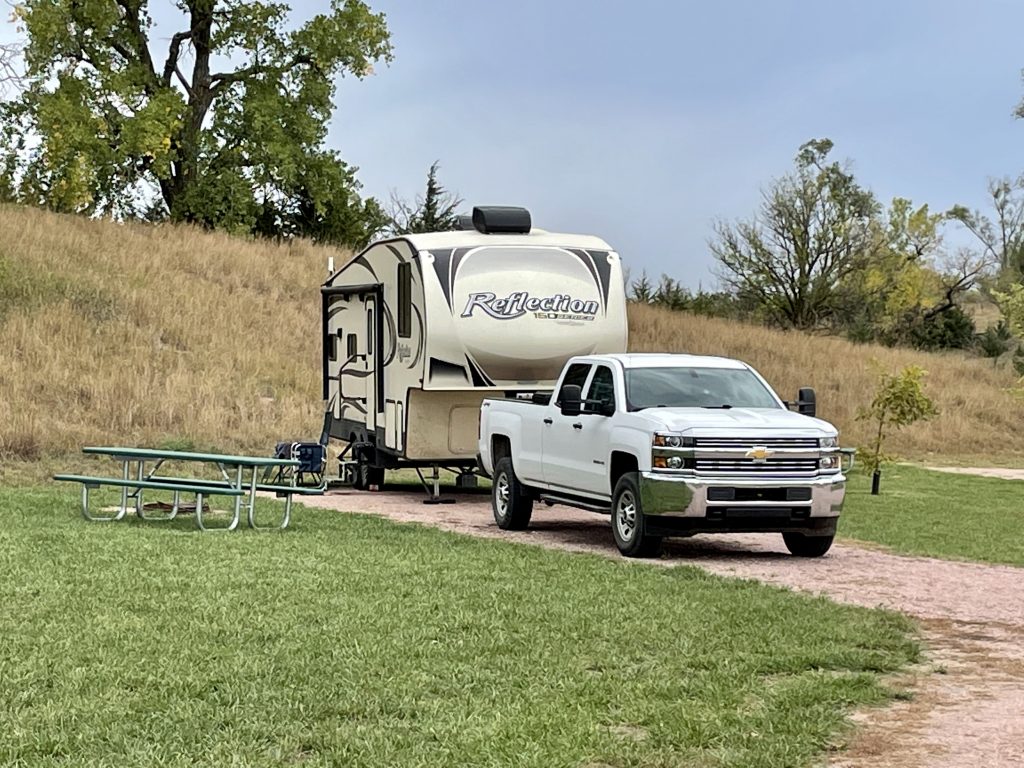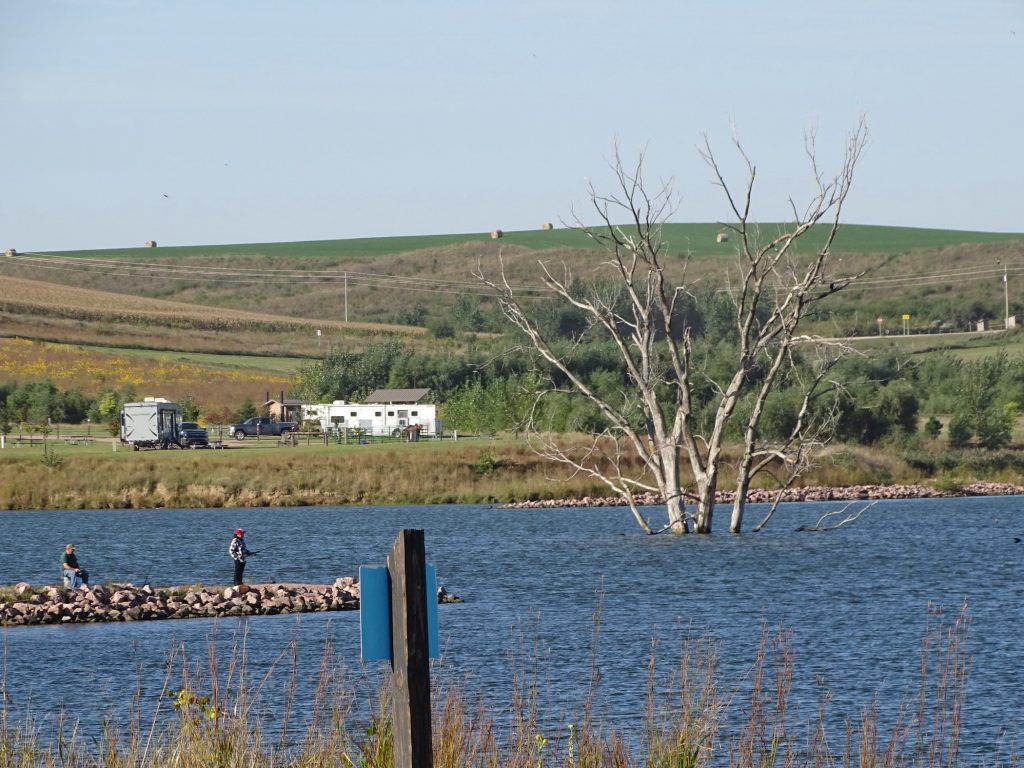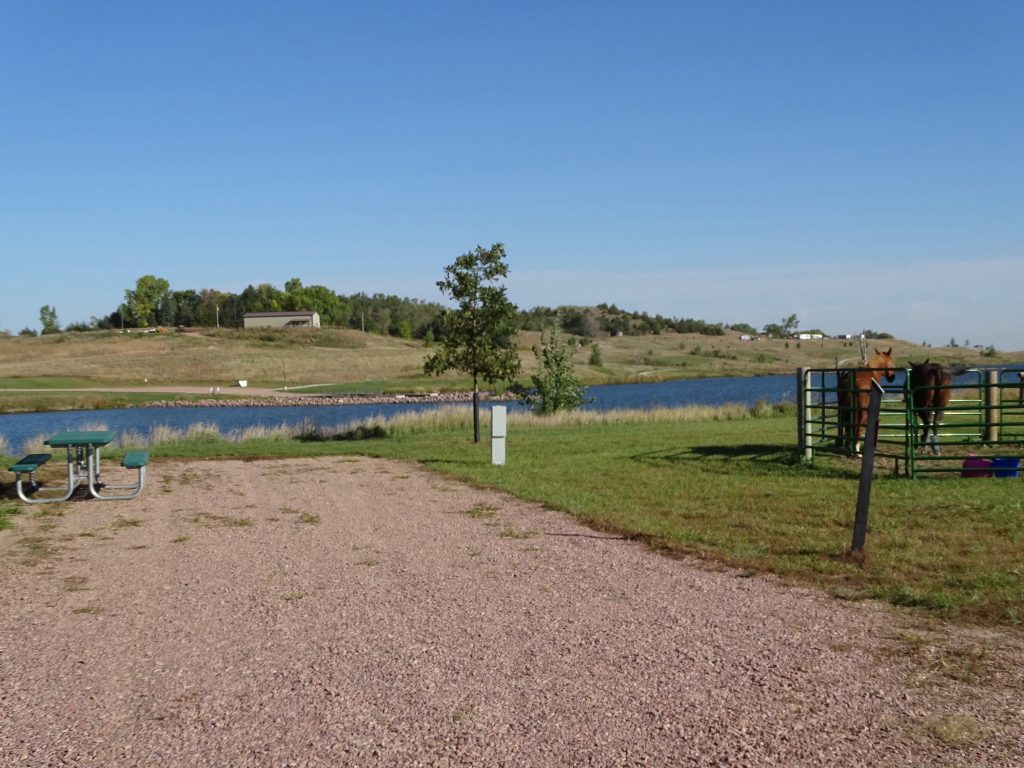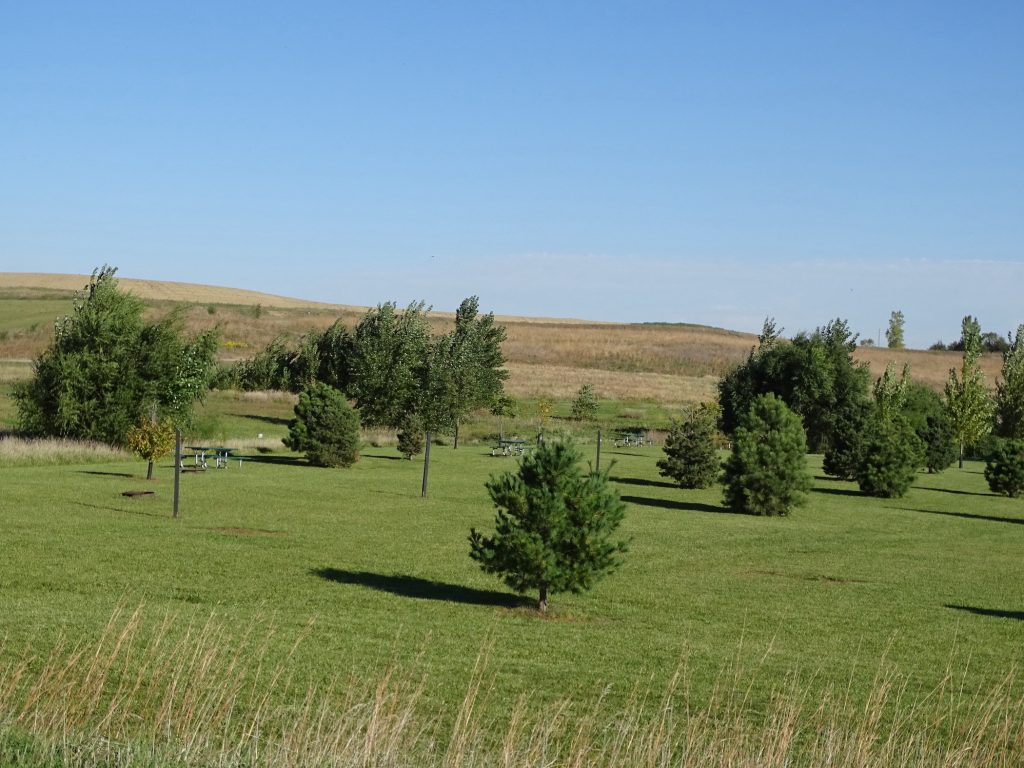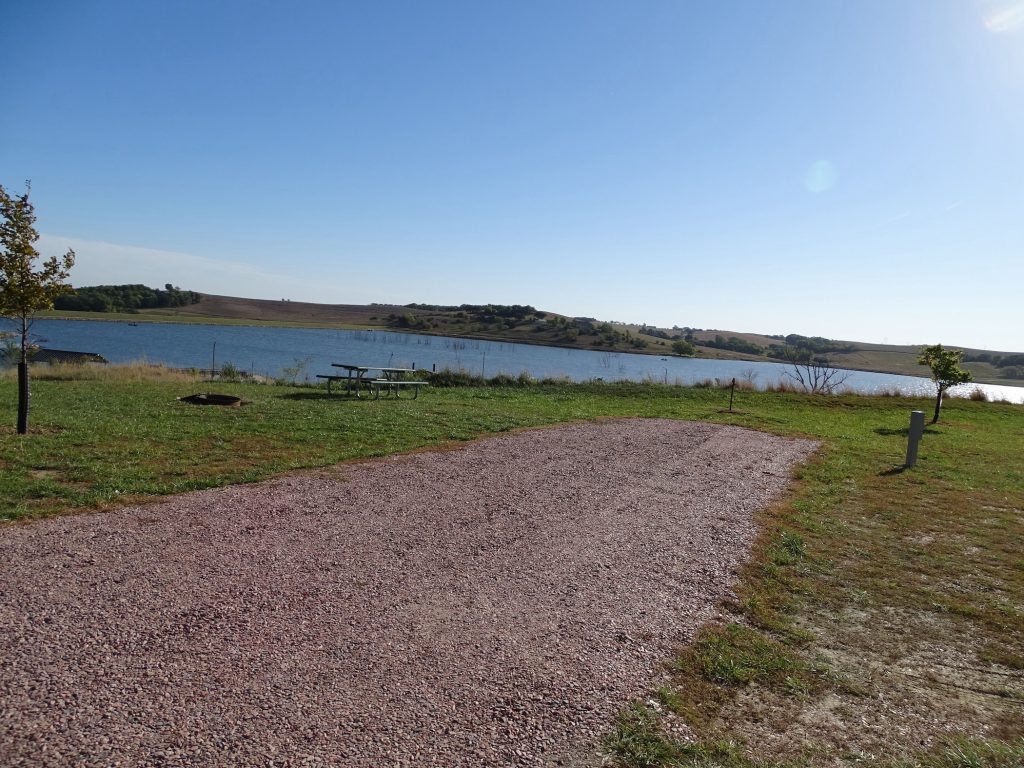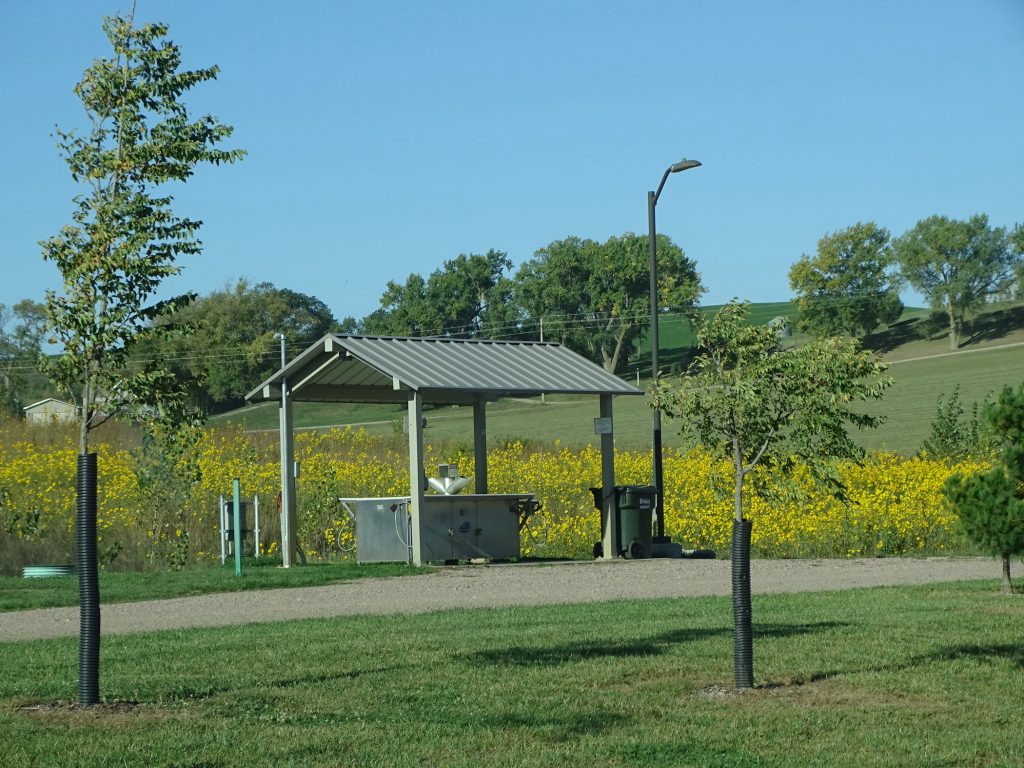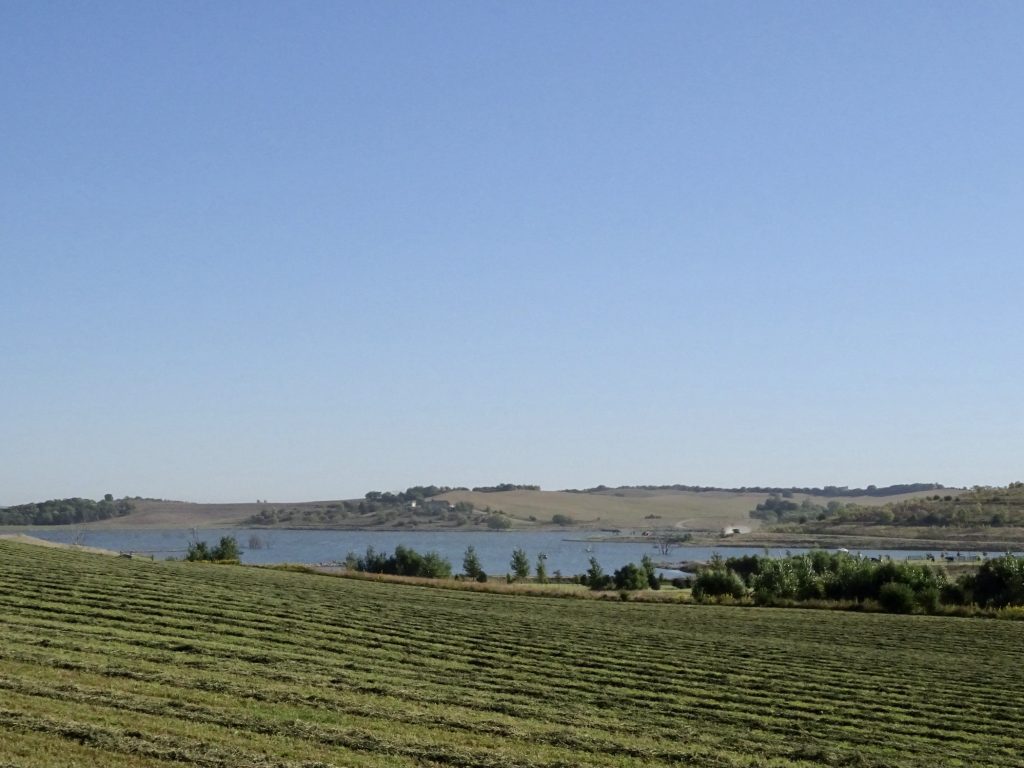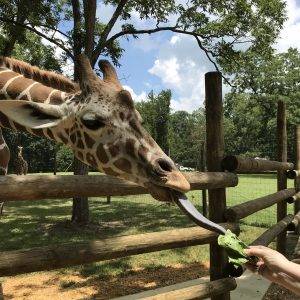On Monday, September 20, MW let me sleep a little later than planned after a restless night. I couldn’t get to sleep, so I got up at 11ish and moved to the recliner. Just as I was coming down the stairs, the wind went from nothing to about 25 mph in an instant. It was strange! Wind is really interesting. My Dad was always a big weather guy, and he turned me on to Ventusky.com. There you can see the normal weather radar stuff, but the map also has layers for air pressure, humidity, and a lot of other things. It even shows wave directions and heights for you surfers out there. The wind speed and gust layers are mesmerizing, especially when storms are rolling through. The air quality layer comes in handy to track smoke plumes during the summer months if you are traveling out west. I used to get these out-of-the-blue phone calls: “Talisa, you need to get on Ventusky RIGHT NOW! There’s something VERY INTERSTING going on in Texas!” (He lived in Georgia, and I lived in North Carolina.) “Talisa, stop what you’re doing and check out the low pressure system on Ventusky! I’ve never seen anything like that in all my life!” I sure miss those calls now.
It was a very grey, cool morning as we headed out about 7:40 AM. US-30 took us over to North Platte and our first stop of the day, the Golden Spike Tower and Visitor Center. You may recall that we visited the Golden Spike National Historical Park in Utah where the last spike was pounded in to join the east and west tracks and change the frontier as we knew it. Well the link between the two sites is the Union Pacific Railroad, one of the lines that met in Utah. Prior to the final spike being driven in 1869, North Platte, or “Hell on Wheels” town as it was known at the time, was built up with shop facilities for the railroad. Those facilities eventually built up to become the world’s largest railroad yard, and it IS big…8 miles long covering 2,850 acres! In 2008, the old observation tower was opened to the public, and you can now watch the entire yard from eight stories up. On any given day up to 14,000 rail cars pass through the Bailey Yard, named for a former Union Pacific president. Incoming trains are pulled apart and their cars sorted in a complex, now automated system to ensure cargo reaches the right destination. Seventeen inbound, 16 departure tracks, and 114 “bowl” tracks keep everything moving, and operations and repair shops are open 24 hours a day. What was once a totally manual business now uses ultrasound technology to detect defects, readers to tell which cars are where, and advanced computer systems to keep it all sorted. They do still rely on plain, old-fashioned gravity to send cars down to join once the system decides which track it goes on, though. Cars are pushed up on a hill, called a hump, uncoupled, then rolled downhill onto the correct bowl track. They have retired railroad employees available to explain what is going on in the yard and tell stories of their time working there. This place is fascinating, and everyone could find something to enjoy in a visit.

Memorial Park, North Platte, Nebraska
Once Did the Laramie to Rawlins Run in Wyoming
Kid’s Playground at the Tower

Small Part of the Yard From the Tower 
Overall Yard Pic From the Visitor’s Center

I Bet We All Own Things That… 
…Have Passed Through This Yard

Locomotive Repair Shop
My favorite thing had less to do with trains, though, and more to do with people. During World War II, there were 200 special troop trains operating every day, in addition to regular passenger service. A few days after the attack on Pearl Harbor, a rumor spread through North Platte that Company “D” of the Nebraska National Guard would be coming through town on a troop train. The locals decided a party in their honor would be thrown, and when the train arrived they were ready. It turned out to be Company “D” from Kansas, but that didn’t dampen the festivities. In fact, it started a tradition that lasted until the end of the war. Every day for 51 continuous months, staffed only by volunteers, they threw a party for EVERY troop train that came through town. Seriously…an average of 3,000 to 5,000, and towards the end of the war as many as 8,000, servicemen a DAY! Companies donated goods and services, and Union Pacific provided the building and basic supplies. Railroad employees, their spouses, and the townspeople made sandwiches, coffee, cookies, etc. To quote the signage, “In March 1945, the canteen distributed 40,161 homemade cookies, 30,679 hard boiled eggs, 6,547 doughnuts, and 6,939 cakes, all donated by volunteers during a time of national food rationing.” Just WOW! There were also homemade popcorn balls, some of which contained the name and address of a single young woman who would be that soldier’s pen pal. There were actually “Popcorn Ball Marriages” after the war. Prior to arrival in North Platte, conductors would alert the servicemen that they could get free services at the next stop. Then the engineer would blow the horn a certain distance out of town to let the party hosts know they were coming in. There was a video of soldiers and townspeople who participated, and I was almost bawling listening to the men talk about what it meant to them. “…We know you call us ‘your boys’ but I wonder if you realize whom we saw in you? We saw our mothers, our wives, our sisters and daughters and sweethearts…above all this, we saw America…” Honestly, I’m teary-eyed right now just thinking about it. Is it any wonder they are called the “Greatest Generation”?

Poster Pics From… 
…the North Platte Canteen

Location of the Troop Train Canteen 
Crossing the North Platte River
Back on the road, we continued southeast on US-30 to Brady, where we found the Hitchin’ Post Saloon for lunch. MW had the special, a reuben, and I had a pulled pork sandwich. The baked beans were announced on the sign out front and again when the waitress told us about the specials, so we both had to try those. She wasn’t wrong…they were good. (Well, not Talisa’s special baked beans good, but anybody else’s baked beans good.) After lunch, we continued southeast to Gothenburg and our next stop for the day. Located in a nice little park downtown is an actual Pony Express Station. I’m pretty sure almost everyone in America has heard of the Pony Express, but also sure that most people don’t realize they only ran for a little over 18 months. Manning a Pony Express station and riding the route from Missouri to California were among the most dangerous jobs at the time due to issues with the Paiutes. Approximately 186 stations were spaced about 10 miles apart along the route. Incoming riders would leap off of a weary horse and onto a fresh mount, carrying only the mail pouch. The only additional items were a gun and a water sack, and riders couldn’t weight over 125 pounds. The lines ran day and night, and a single rider typically covered between 75 and 100 miles, unless an emergency required him to remain for another leg, thus staying in the saddle for over 20 hours. Riders were paid for the danger at $125 a month, more than double the rate for skilled labor at the time. The most famous alumni is Buffalo Bill Cody, who joined the company at the age of 15. This log house was built in 1854 about 4 miles east of Fort McPherson in Lincoln County, Nebraska, and originally used as a ranch house and fur trading post. In 1860-61, it became a Pony Express station, and when they quit running, the log structure later functioned as a stage station for the Overland Trail and served several functions on the Upper ’96’ Ranch. You can stop by and see the exterior any time, and the interior has seasonal hours.

Was Anyone Aware That Alfred E. Newman is Real, Alive, and Working As a Sportscaster on a Cable Station????? 

Pony Express Station – In Remarkable Shape

Pretty Sure the… 
…Tchotchkes Aren’t Authentic
We pointed Brutus north on NE-47 to Arnold. Most of the terrain thus far was pure, flat farmland. North of Arnold, however, the hills started creeping back in. I love the changes that happen over the course of a couple hundred miles. Turning east on NE-92, we zig-zagged over to Sargent where we came upon the neatest town decorations we’ve ever seen…cutouts of people scattered everywhere in everyday situations. I captured a few for you. From there it was a short jog northeast to Calamus State Recreation Area. Let me just say, the road southeast to get there was HORRIBLE!

It’s Corn Harvest Time 
Lots of Hay, Too

Is That Mountains Out There? 
Yep!

Along a Fenceline Just Outside of Town 
Outside an Old Gas Station

At the Rodeo Grounds

On Buildings… 
…in Town

Outside the Church 
Approaching the Sidewalk
Tuesday started with lunch in Burwell at 308 Steak House & Grill, where we both had pretty good sandwich fare. MW couldn’t resist the apple crisp they had on display. After that, we scoped out the laundromat for tomorrow, then headed east on NE-70, south through Ord, where we popped into the hardware store.

Saw This Fellow at the Park 
Unusual Coloring for Crane/Heron
in Nebraska

Burwell’s Big Claim to Fame 

Throwing Down Some Truth
Then it was north to the attraction for the day, Fort Hartsuff State Historical Park. Located near Elyria, Nebraska, this fort was an infantry post from 1874 to 1881. Soldiers there were tasked with protecting not only the area’s settlers, but also the Pawnee, who were constantly being harrassed by the Sioux. Although there are some now, there were no trees in the area when they built the fort, so the buildings were made of a mixture or gravel, lime, and cement, much like concrete. A couple of the buildings survived almost intact, and all were restored. We ran into a neighbor who walks there every day who said his wife actually visited people living in the Commanding Officer’s Quarters when she was young. That is pretty amazing! Most of these western forts were built so quickly and of wood, so they were scavenged and deteriorated to almost nothing fairly fast. After its decommissioning, the property was owned by Union Pacific, but unused. In 1897 it was sold to local folks and became headquarters for a farm. Then in 1961 this site, a small part of the original 1280 acres, was donated to the state with the stipulation that it be restored and maintained. Nebraska has done a great job with that. Today the grounds are open year-round, but the buildings are seasonal. There is a big Spring Muster reenactment every year and living history demonstrations most weekends in the summer months. Interestingly enough, during its time as a fort there was only one skirmish with the Indians, the Battle of the Blowout in 1876. Oddly, this tiny battle that resulted in the death of one soldier, Sergeant William Dougherty, resulted in the awarding of THREE Congressional Medals of Honor…Lt. Charles Heyl, Cpl. Patrick Leonard, and Cpl. Jepthal Lytton. We found it odd that a tiny skirmish that involved only 11 or so soldiers would result in three coveted medals. I have to admit, I was no less confused after reading the Medal of Honor (MOH) detail. Heyl – “Voluntarily, and with most conspicuous gallantry, charged with 3 men upon 6 Indians who were entrenched upon a hillside.” Leonard – “Gallantry in action.” Lytton – “Gallantry in charge on hostile Sioux.” I’ve read a lot of MOH citations. Honestly, most put me in awe and make me cry just thinking about the actions. I sure hope that, to win the highest honor, what these soldiers did was truly courageous, gallant, and worthy. The citations, though, sound like the writers just sucked or somebody was making mountains out of mole hills. Also in 1874, Lt. Thaddeus Capron laid out the town of Calamus near the new fort. Named for the river, it grew to a population of about 65 people and had stores, a saloon, a lawyer, and a school, among other things. There was even a post office. After the fort was abandoned, the town began to decline. A bad wind storm in August of 1885 that destroyed the school and other buildings, secured its fate. Today the only indication that Calamus ever existed is a historical marker. As we rode back through Burwell, we stopped to see Veteran’s Park, then headed for Petunia.

Now 
Then
(Museum Photo – I’m Not THAT Old!)

I Think They Missed the Mark on That Flag Size

Enlisted Barracks 
Probably Cold in a Nebraska Winter

The Cook Slept in the Kitchen

We Could All Get Something From This

Officer’s Quarters 
Very Elegant

This Couldn’t Possibly Work
(From a Wall Display)

Commanding Officer’s Quarters 
Surgeon’s Office
I Think He Lost This Guy

Pretty Flat and Must Have Felt Very Remote Back Then

Smithy 
Baker’s Quarters – Oven Through the Door
He Could Nap While He Waited

For Serious Bad Men 
And They Had TWO Smaller Ones!
On Wednesday I headed into Burwell to do laundry and get some work done. The Lost a Soulmate Laundromat (perplexing name) was empty. In scoping it out yesterday, I knew they had a change machine that took $5 bills, but only if they weren’t wrinkled. I was prepared. What I didn’t see was the tiny little sign that said it also wouldn’t take new bills. WHAT??!! I had the bedspread and blankets with me this time and already had everything in SEVEN machines waiting for money. On top of that, I had a client call in 10 minutes!! I ran out to the truck and hurried over to the bank on the square. There wasn’t a line, and the young man was nice and fast. Great! I made it back before anyone else came in looking for washer space. Whew! Thankfully, my call didn’t come in until a few minutes late, so I was breathing heavy, but ready to go. After finishing the call and the chores, I went to Northside Bar and Cafe to grab a sandwich and use their internet. I have about 75 gb available each month between all of my devices, but uploading pics to the blog just eats up a lot. It’s always nice when I can find a place with free wifi. Of course, I also have a vpn to keep curious strangers out of my stuff. After a couple of hours, I headed back to the park. Later we walked around the park and took pics for you guys, then I made baked chicken for supper.

Steam Rising Off of the River in the REALLY Cold Morning Air

Dam 
Water is Low

Pitcher Sage Growing Along the County Road

Out Strolling With Us 
And Their Friends
SIDE NOTE: The sign below was just outside of our camp site at the trailhead to the beach. We aren’t big swimmers, and generally don’t go into the water at the parks, except maybe to canoe a bit. We both found it odd, though, that this was not on the website when we made the reservations. There was some type of Covid warning at the top of the webpage, but no mention of the water being toxic. I don’t know about you, but I kind of think that a warning about poisonous water at a lake with a beach and boating is just a bit more important than a warning about Covid at this point. The other interesting thing is that you can’t touch it, drink it, or even give it to your dogs, but you can fish and then EAT. THE. CATCH!! I guess the assumption is that cooking solves the problem, but NO THANK YOU! I’m not stupid…I know there are potentially E. coli, salmonella, and a bunch of microbial stuff on our food, BUT shouldn’t we at least TRY to start without serious contamination?! I wonder how many people make camping reservations there planning to use the beach, then see this upon arrival? That would REALLY make me mad.
Calamus State Recreation Area is similar to Merritt a week or so ago in that it is spread out into multiple areas around the lake. The west two thirds of the 5,123-acre lake are no wake due to stumps and trees under the surface. Most of the boating activity was fishermen. Amenities include five boat ramps, two canoe access areas, a picnic shelter, plenty of picnic areas, a beach, and a playground. For accommodations there are a group-camping area with eight tent sites at Valley View Flat, non-pad basic sites (access to water, bathrooms, and shower houses) at both Valley View Flat and Hannaman Bayou, and 132 electric (50-amp) sites at Homestead Knolls, Nunda Shoal, and Valley View Flat campgrounds. We were in the Nunda Shoal Campground, where the paved sites were partially shaded. Half of the electric sites are first-come, first-served. (Per the website, our site should have accommodated 50′, but it really wouldn’t because of the hill right behind the pad. A lot of the sites seemed relatively short, so check those pics if you make reservations.) Bathhouses are located in the three electric campgrounds, and there are vault toilets scattered around, too. MW said the showers were fairly clean and operational. Potable water spigots are located at each camping area, however, for RVers the only dump station is in Little York Point at the dam end of the lake. The roads within the park were okay, but the county roads around the lake were pretty bad! Except for occasional noise from the county road, it was very quiet. Something I hadn’t seen though…a lot of the shore areas were concrete! There was cell service, but only PBS for over-the-air TV. All said, since we aren’t water people, we would go back if we needed to be in the area. It wouldn’t be a destination, though. For this stay in September 2021 we paid $99.40 for three nights. The entry fee of $8 per night (non-resident) was covered by our previously purchased Nebraska annual pass.

Electric Campsite 
More Shaded Electric Site

Bathhouse 
View From Campground Road

Fish Cleaning Station 
Boat Ramp and Dock

Shore Fishing 
Huh??

Picnic Area 
Vault Toilets

Path to Beach 
Beach
On Thursday we took our time getting on the road, leaving at a little before 9 AM. That gave me enough time to get caught up with my Mom and do a little work. We headed out through Burwell where we made a quick post office stop, then headed east on NE-70. It was a gorgeous day to be driving through lots of open farmland. We passed a commercial buffalo operation, and out in the middle of the corn fields, we passed a wind energy field with hundreds of turbines, most of which were standing still despite it being a windy day. Seems like a lot of money sitting idle. At Elgin we turned north on NE-14 and stopped in Neligh (pronounced nee-lee) for lunch at Mama’s and Nana’s Cafe, which was basic diner fare. After lunch, we walked over to our real reason for visiting this town, the Neligh Mill Historic Site. This is a pretty cool site…the last intact flour mill built in the 1800s in Nebraska. You can tour the basement and all three floors for free, but they do have a donation jar. There is a 15-minute video and a very informative curator who will do a full, walk-through tour or just show up periodically to answer questions. Back in the day, building a flour mill like this made towns grow out of the prairie and provided a local outlet for farmers to sell their wheat. The town of Neligh was staked out by, and named for, the original builder of the mill, John D. Neligh. He opened the first general store, but was unable to finish the mill project. Another businessman, W. C. Gallaway picked up where he left off, completed construction, and was open for business near the end of August 1874. Once up and running, the mill ran constantly under several different owners until 1959. With an added light plant, the mill also provided electricity for the town from 1900 to 1925. Unlike the mills we are used to in the south with giant wheels sticking off the side, this one used a submerged water wheel that laid horizontal. The river was dammed to build up pressure for the water washing through the wheel. An interesting bit of trivia…flour was first marketed under the Gold Medal name out of this mill, and they continued to use the name until 1940. Somewhere around 1880, the predecessor to General Mills began using the name, too. It wasn’t until 1940 that General Mills actually paid Neligh to become the sole user of the name. Second interesting point…in 2010 a flood washed out the dam and a large portion of land beside the river. The result was that the black bridge in the picture below now ended in the middle of the river, cutting off traffic on this busy little road. In 2014 the span that now goes from the end of the black bridge to the shore was dedicated. Who paid for it? An anonymous donor!!


Bagger

Original Mill Stone 
Roller Mills Replaced the Stone

Used to Sort Flour 
Miller’s Shack
Hand-Sacking Was Sometimes Done Here

Elkhorn River
After checking it all out, we continued north on NE-14, then turned east on US-20 over to Plainview. Next it was southeast to Pierce and through Wayne over to Hubbard and our final stop for the day, Danish Alps State Recreation Area.
Friday found us heading to Sioux City to run a few errands. The first stop, though, was lunch. MW found Diamond Thai, which was pretty good. I enjoy spicy food, but not to the level of some of the Thai. I do like a good Pad Thai with the peanut flavor, though. Mine was delicious, but MW’s Thai Wok Noodles were a bit bland. After lunch we headed over to Palmer’s Olde Tyme Candy Shoppe, which we thought would have items for our Christmas gift baskets. Turned out most of what was there was from somewhere else. Denied. Next were quick stops at Home Depot and Walgreens. Then we drove around downtown to see what we could see. Sioux City isn’t terribly large, so we were surprised to see a Hard Rock Hotel & Casino. They also have quite a bit of outdoor artwork and nice architecture. One building that is apartments now looks like a giant castle. It was originally Sioux City Central High School, built in 1893 and used as a high school until 1972.

Notice the Giant, Dead Mosquito 

Coolest Mural I’ve EVER Seen!

The Old Sioux City… 
…Central High School

Look at That Stone Work!

Krumman Building 
They Like Bulls in Sioux City

Telling Time Since 1898 
What an Entrance!

Random Greek Columns – No Building Needed 
Where Did It Go?

This One is Also Pretty Cool – Entire Side of a Building
He’s Looking AT YOU!
Saturday we headed back into Sioux City, first to Trinity Heights. Originally the grounds of Trinity College and High School and a seminary, this 14-acre parcel has been turned into beautiful gardens and shrines honoring Jesus, Mary, and many of the Catholic Saints. It is laid out with paved walking paths and is a beautiful place to wander through. In addition to the outdoor gardens, there is a gift shop and St. Joseph’s Center, which houses a life-size carving by Jerry Traufler of Da Vinci’s Last Supper. It is impressive. (The artist used friends as models, and I wondered why he made the 33-year-old Jesus look 60. Also, all of the other eyes in the piece are detailed and either open or closed. I couldn’t figure out what he was going for with the eyes of the Savior. They look closed, but the lid looks open. It gives a bit of a zombie effect, which is disconcerting. Okay, enough of Talisa the art critic.) Throughout the gardens are plenty of benches for reflection, meditation, and prayer, and there are lots of shade trees and garden areas. Although it is beautiful now, I can’t help but wonder what it looks like in the spring. I bet it is gorgeous! Regardless of religious affiliation, this is a lovely, peaceful place to wander and enjoy.

Most of the Men Are Carved Individually and Weigh 200-300 Pounds
The Dinnerware and Bread Are Individual Carvings
The Artist Used Basswood and Pine and Took 7 Years to Complete

Eyes???? 
Immaculate Heart of Mary Queen of Peace


St. Francis of Assisi

Good Gracious… 
…How Beautiful

Mother Teresa 
Pope John Paul II
After spending quite a bit of time wandering around and enjoying the statuary and cool, morning air, we headed over to Sneaky’s Fried Chicken for lunch. For a southerner to be impressed by your chicken, it’s got to be good, and this definitely was. They had a small buffet or you could order from the menu. Go if you are in town and like good fried chicken. I’ve been wanting to go to a movie for a while, so we went to see Jungle Cruise with Dwayne Johnson and Emily Blunt. It’s a Disney movie, so we expected it to be fun, and it was. Plus, it’s The Rock and Mary Poppins, so how could you go wrong? It looked like they had fun making it. The only negative is that it was just a tad too long.
While in town we passed the Sioux Honey Association, which said it was the “World’s Largest Honey Marketing Organization”. It seemed like a pretty big operation, and curious, I looked it up. Turns out that it is a co-op of over 200 beekeepers, and we’ve all probably all heard of them. They market Sue Bee® and Aunt Sue’s® honey products. The growers come from all over the country, and their co-op manages the sales so they can focus on the production. Pretty cool, I think.

Yup…It’s a Man…Built Out of Tires
(Ignore the Pedestrians…Best I Could Do While Passing in Brutus)
On Sunday MW wanted to check out Granny’s Diner in nearby Jackson for breakfast. It was a buffet setup and was okay, but it satisfied his breakfast craving when I didn’t have the stuff at Petunia to cook it. On the way back we stopped to see a collection of windmills. Located just outside of the entrance to the L. P. Gill Landfill, which was guarded by Oscar the Grouch, this was a pretty cool collection. Leonard Gill, the L.P. of the landfill, started the collection of over two dozen in 2003 at a windmill auction. Later a windmill collector decided to sell his treasures, so Leonard bought those. From there it grew to over two dozen examples of vintage windmills built from the 1880s to 1940. All were restored, sometimes using parts from other windmills and other times with fabricated replacements. To me, windmills are a symbol of the perseverance of farmers and ranchers. All over the prairie you can see their skeletons, standing tall after many years of a job well done. Most have been replaced by other pumps and forms of irrigation, but you still see some working out in ranch land, filling up the water tanks for cattle in remote places. You know I want to put one at the barn, don’t you!?
Back at the campground, most people had pulled out, and before dark, the rest left the RV section. It’s neat when you are the only camper in the park, especially after a couple of nights of really loud, late-night neighbors. Over in the equestrian campground at the end of the lake there were three RVs, but only one of them was actually occupied. Almost as soon as everyone vacated, a flock of turkeys showed up and grazed for a bit. They’re smart…it’s turkey season in Nebraska, and they are hanging out in the part of the park where you can’t hunt!
OOPS NOTE: In previous reviews I failed to say that the showers in Nebraska state parks/recreation areas run on payment machines. Most accept quarters, but the one at Lake Ogallala State Recreation Area required tokens that you bought from a machine on the wall. Two tokens cost $1, and that got you about 4 minutes. In those that took quarters, .75 got you 4 to 4-1/2 minutes. The only other place outside of Nebraska on this trip that has required quarters was Hell Creek State Park in Montana.
Less than 10 years old, Danish Alps Recreation Area and the 219-acre Lake Kramper are designed mostly around camping, fishing, and no-wake boating activities and are pretty nice. Anglers can try for several varieties of fish from a boat, the extensive shoreline, or the fishing pier. Other amenities include a boat launch, a dock, a fish cleaning station, hiking/biking and equestrian trails, picnic shelters, picnic tables, and a playground. Hunting is also allowed in the park areas south of the reservoir during certain seasons. The campground is divided into three sections. The equestrian campground has 29 paved sites with 30- and 50-amp electric, corrals and hitching posts. The primitive area has 22 tent sites. In the RV campground there are 8 pull-through and 29 back-in gravel sites with 30- and 50-amp electric. All sites have picnic tables and fire rings. Showers are located in the equestrian and RV campgrounds, and potable water spigots and vault toilets are scattered throughout the park. Cell service is strong and there are plenty of stations on over-the-air TV. The two negatives: First, there were two bath/shower combos for men and two for women. One of the men’s was out of service when we arrived. When MW went to use the other one, he found the handle on the shower broken off. Unfortunately, it was parked at cold, so it made for an exhilarating morning. By the next morning, they had closed that one off, too. The camp host said he was welcome to use the one in the equestrian campground…about a mile walk. He opted to use the She Shower in Petunia. (Shhhhhh…Don’t tell anyone, but the last morning he used the women’s bathhouse!) 2) The traffic on NE-35 is really loud in the back section of the RV campground. That may not be the case in the sites closer to the lake or the equestrian campground, but we wouldn’t want to stay up on that hill again. For this stay in September 2021 we paid $128.97 for four nights. The $8 per day entrance fee was covered by our Nebraska parks pass.

Picnic Pavillion 
Fishing Dock

Playground 
Boat Ramp and Docks

Our Spot 
Equestrian Campground

Equestrian Site 
Primitive Campground

View From Our Site 
Fish Cleaning Station

Reservoir From the Road
I think that covers it. Next up…southern Nebraska and on to Kansas. See you on the path!
Talisa
P.S. Hit the follow button below to be notified of new posts and please SHARE, SHARE, SHARE on social media!
